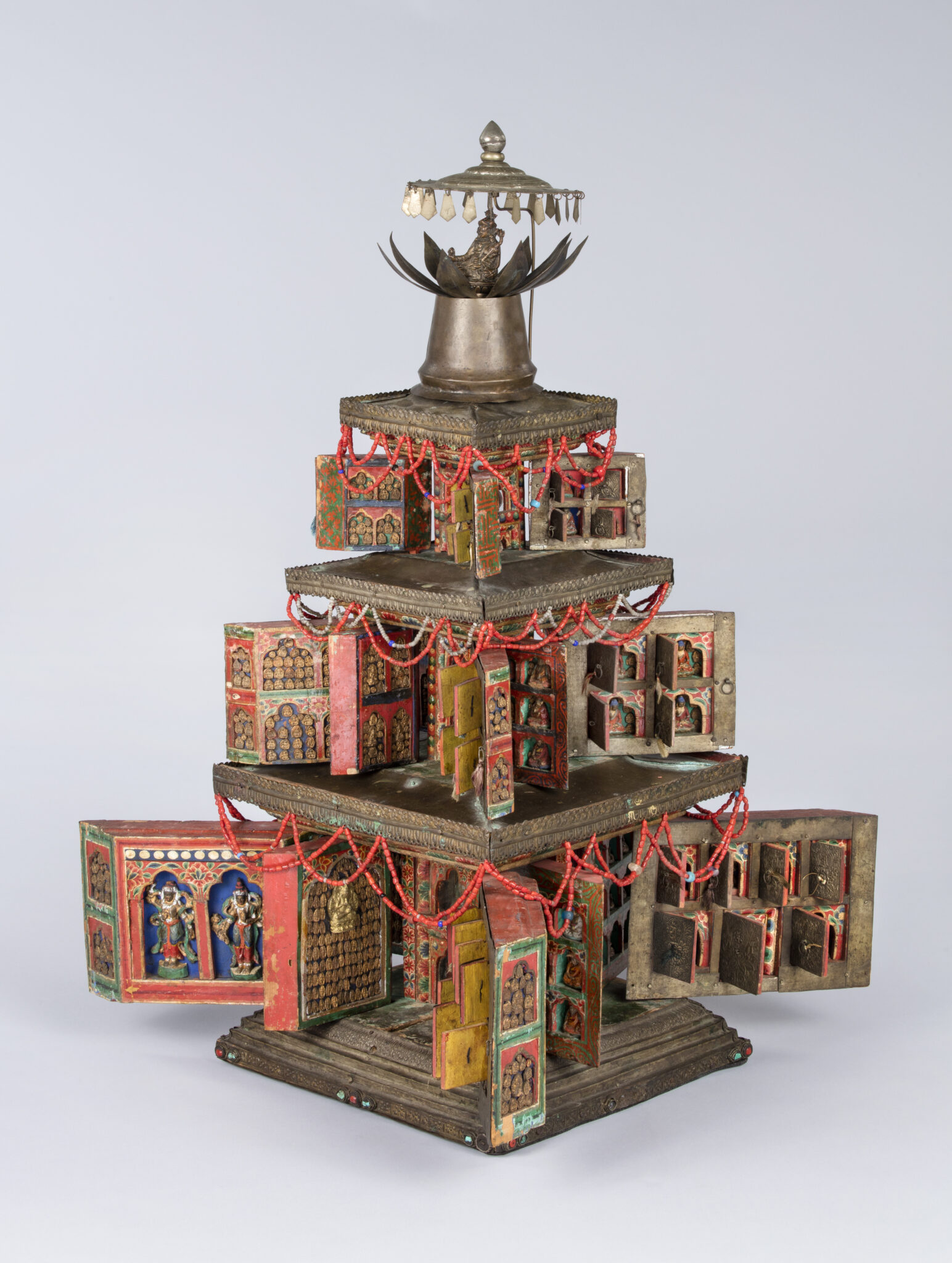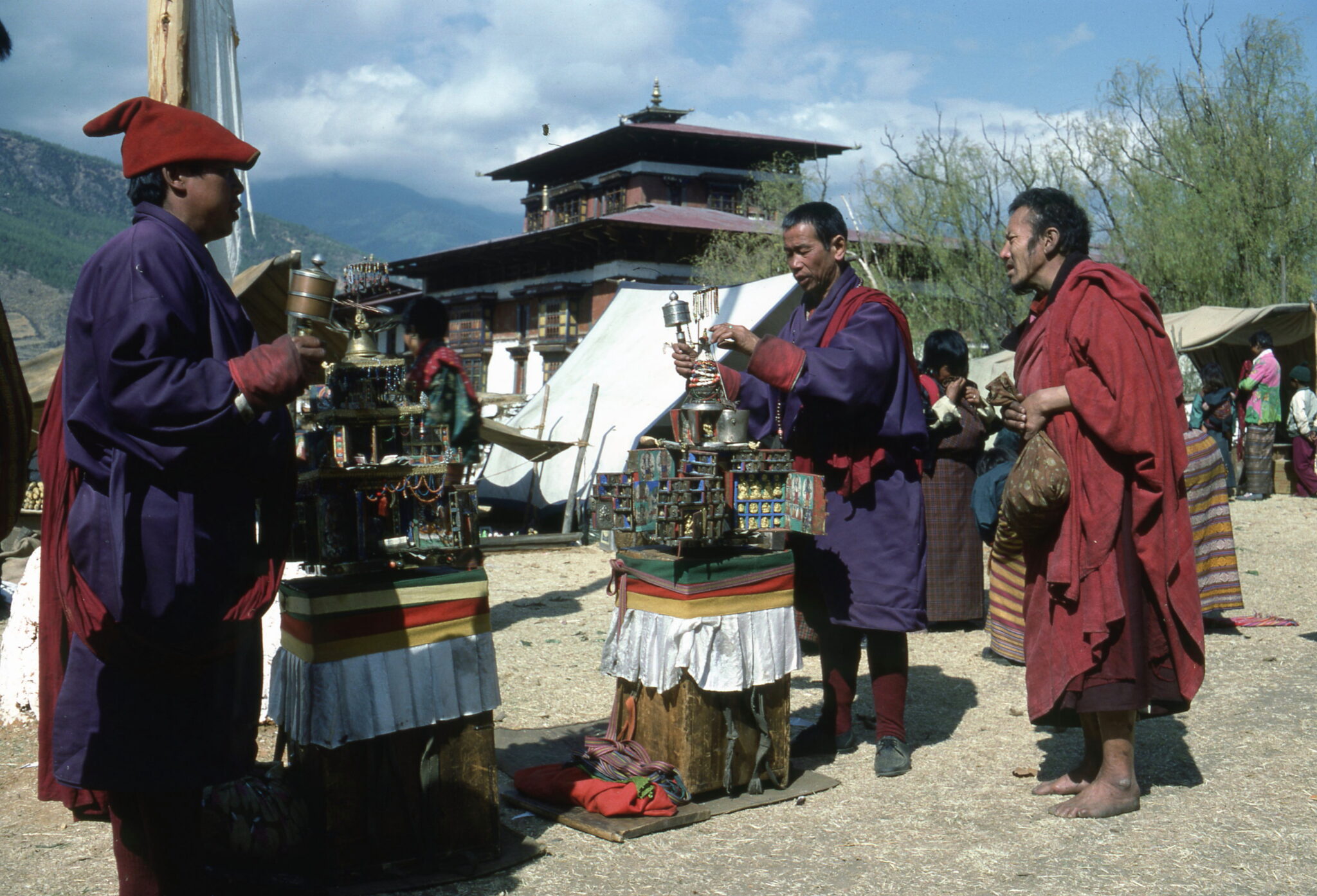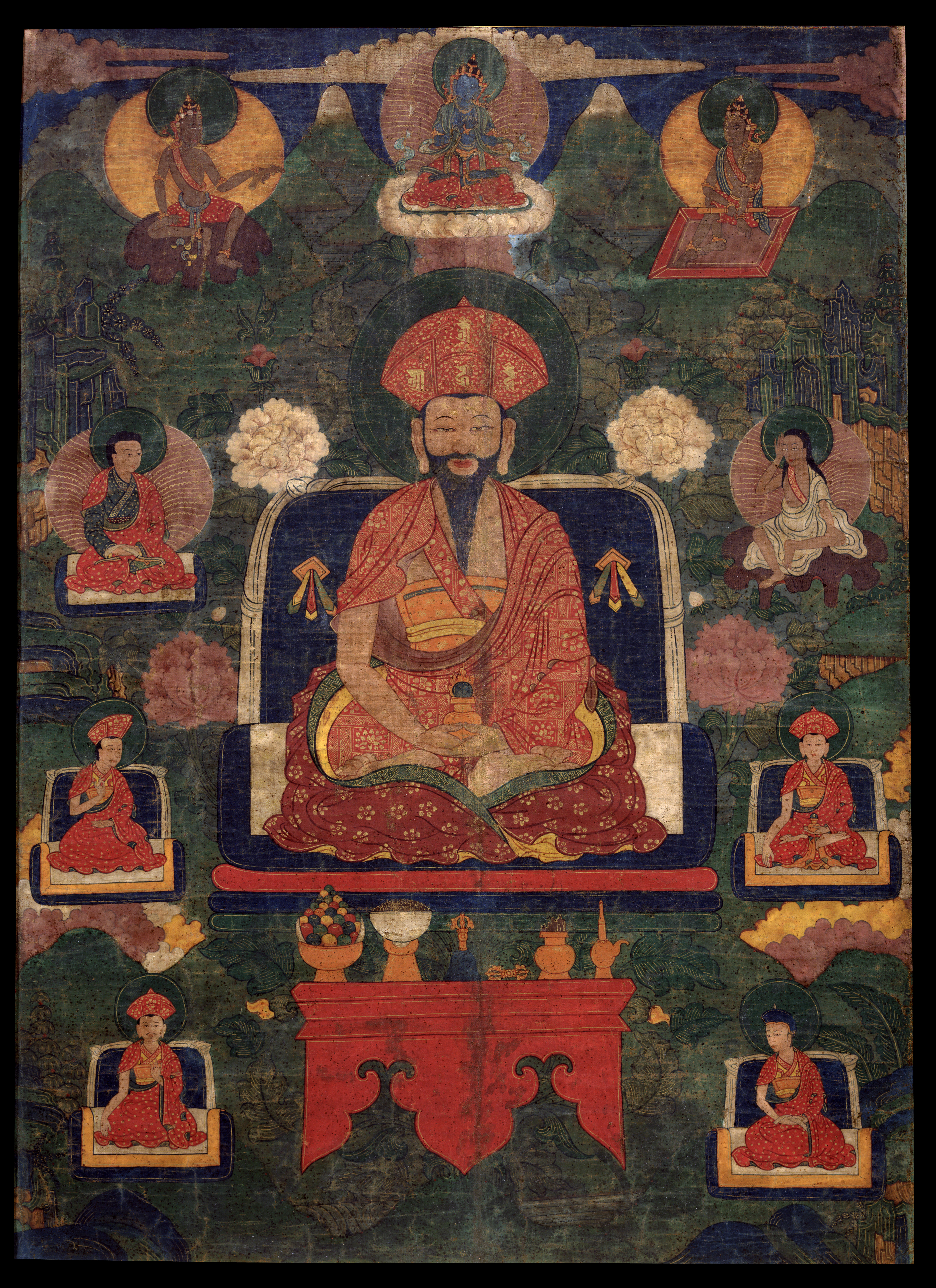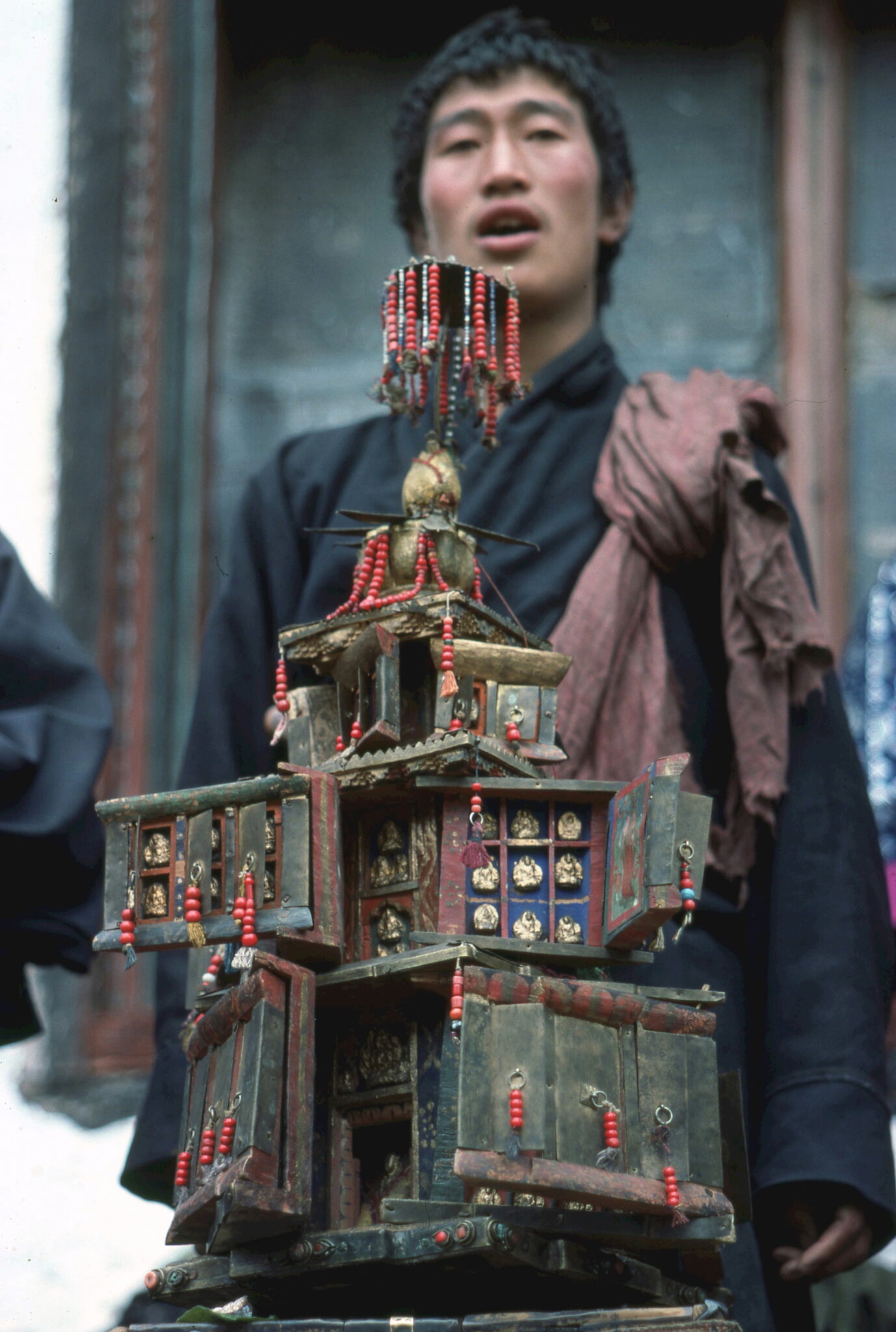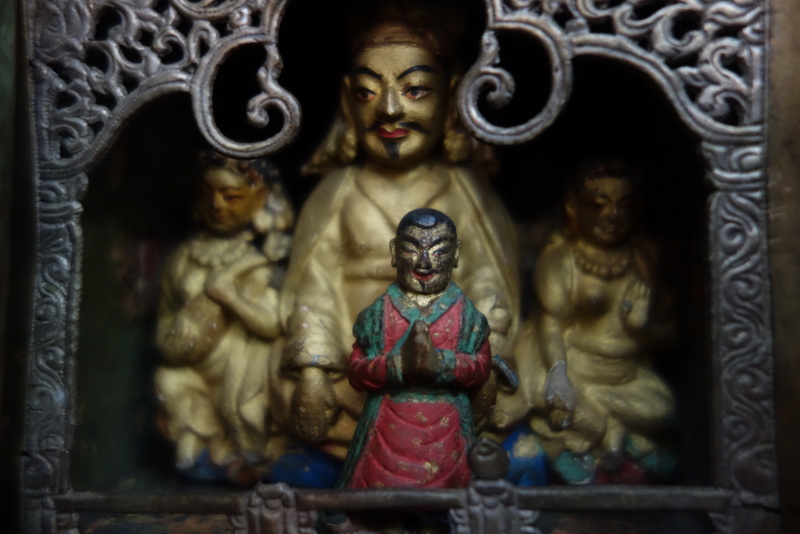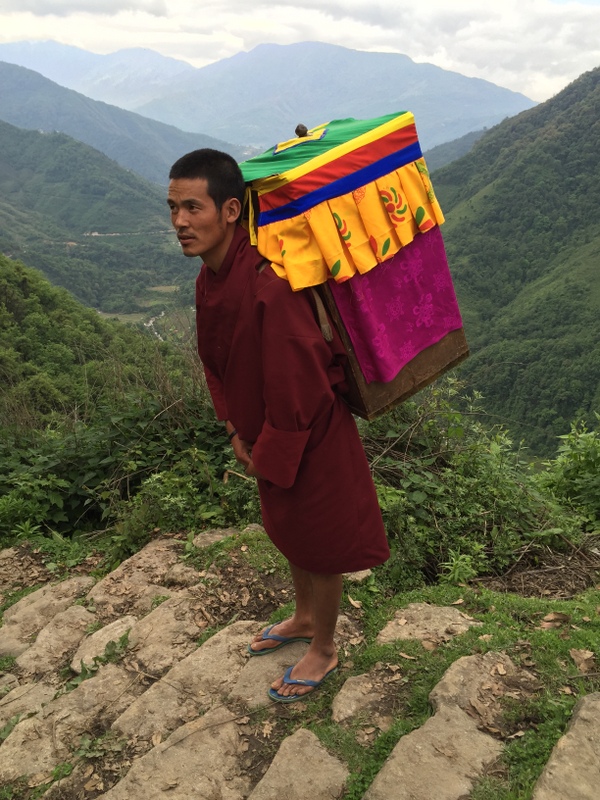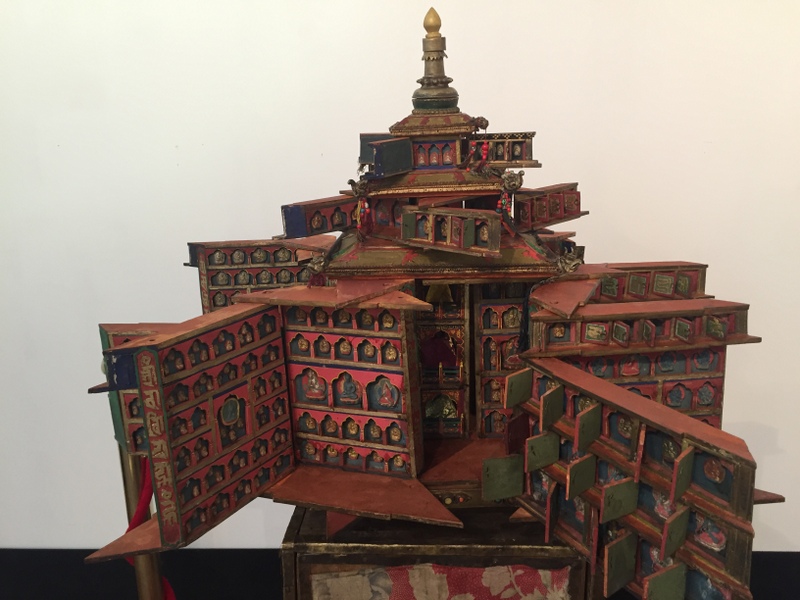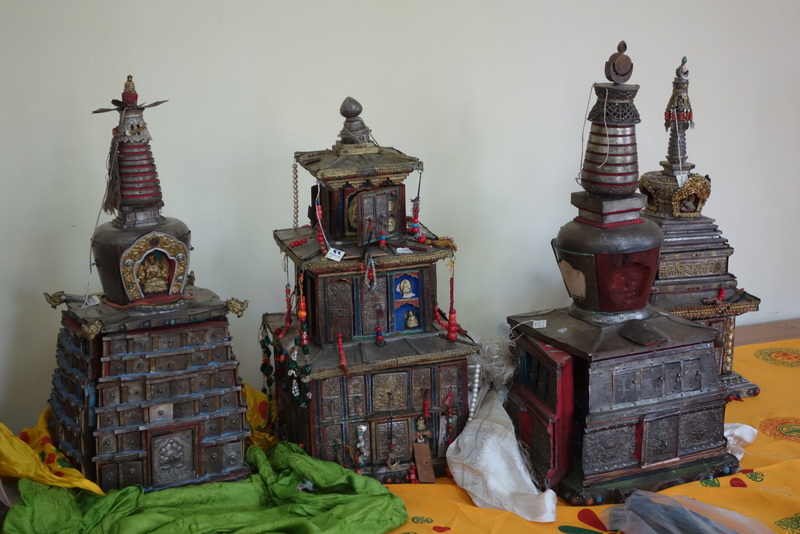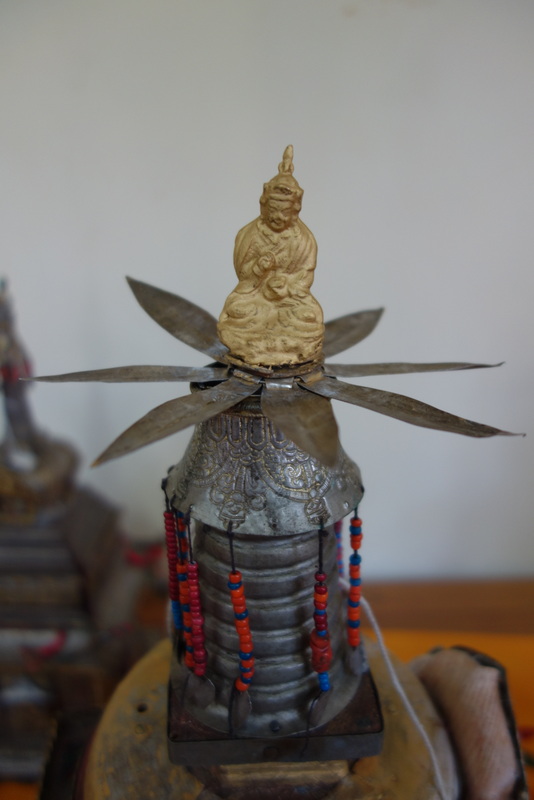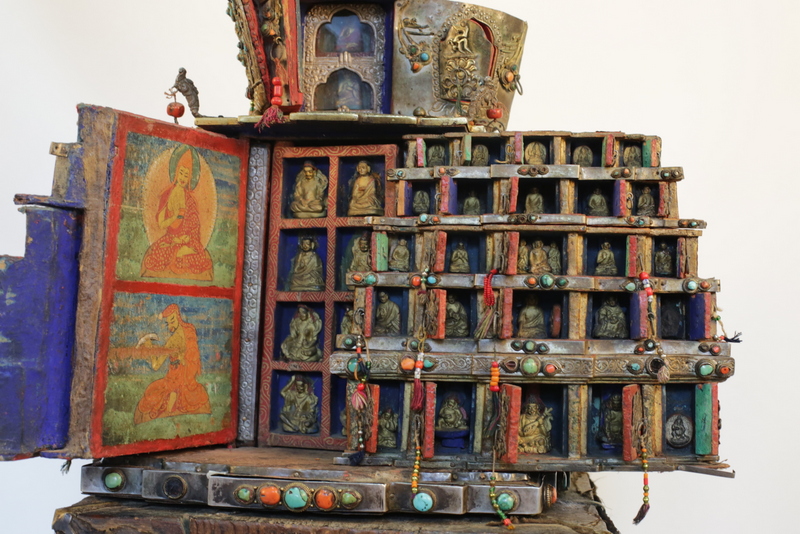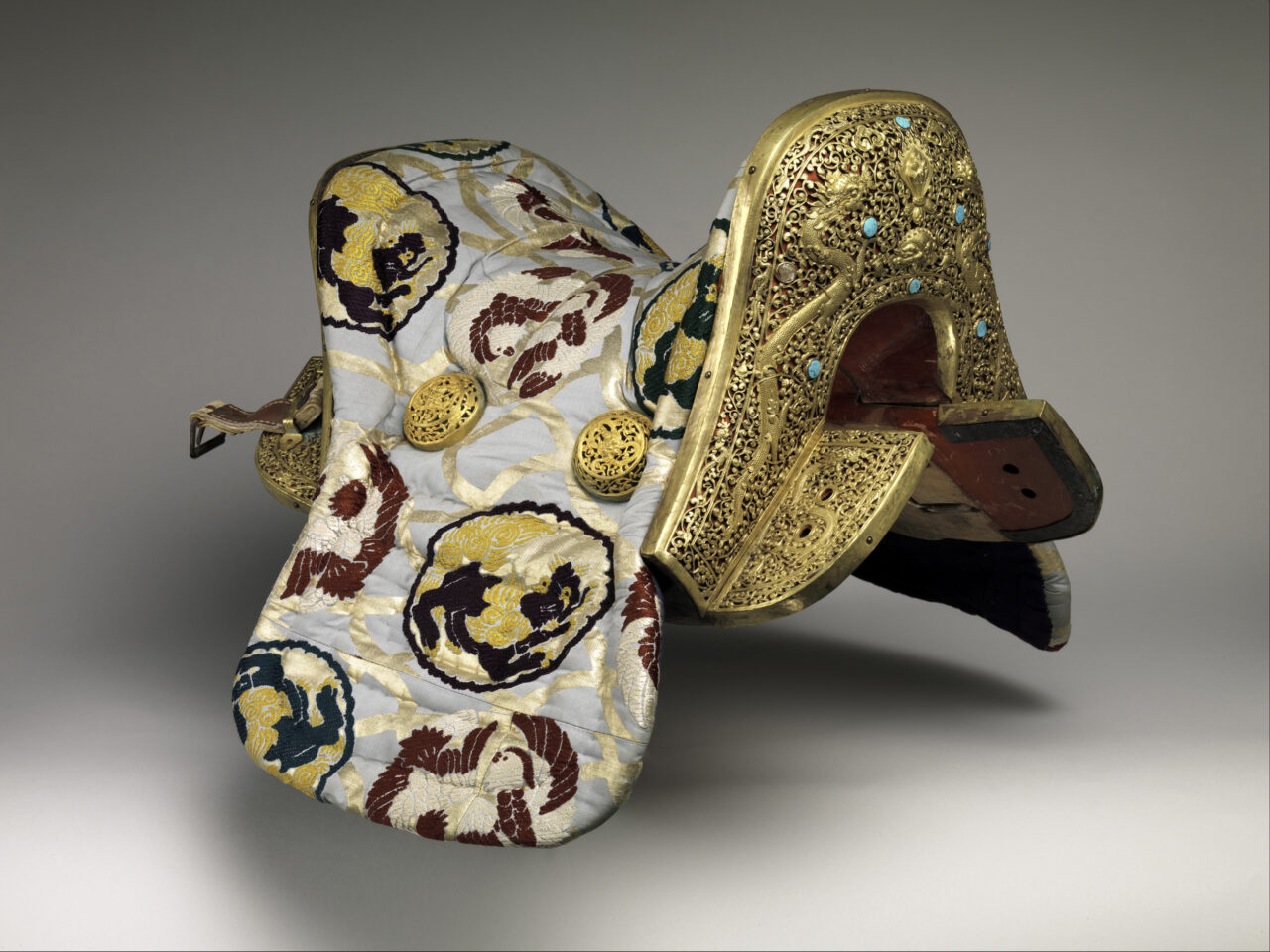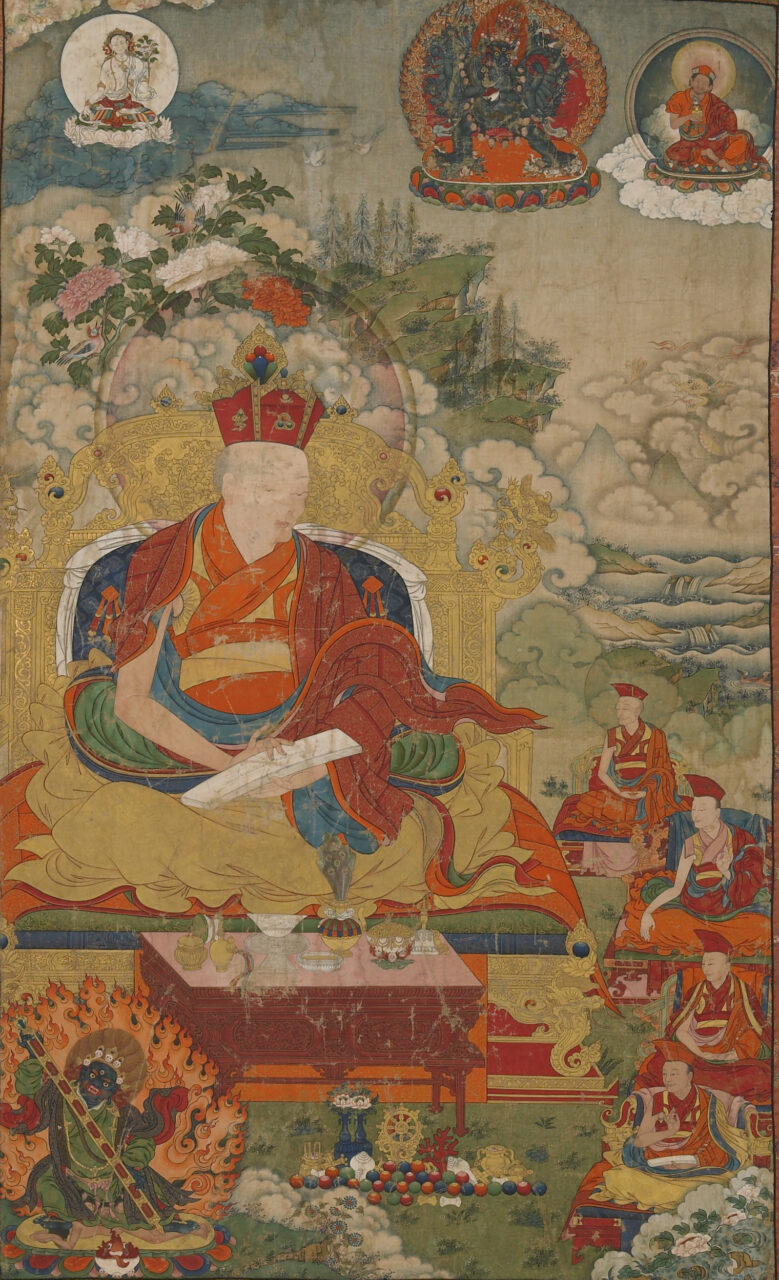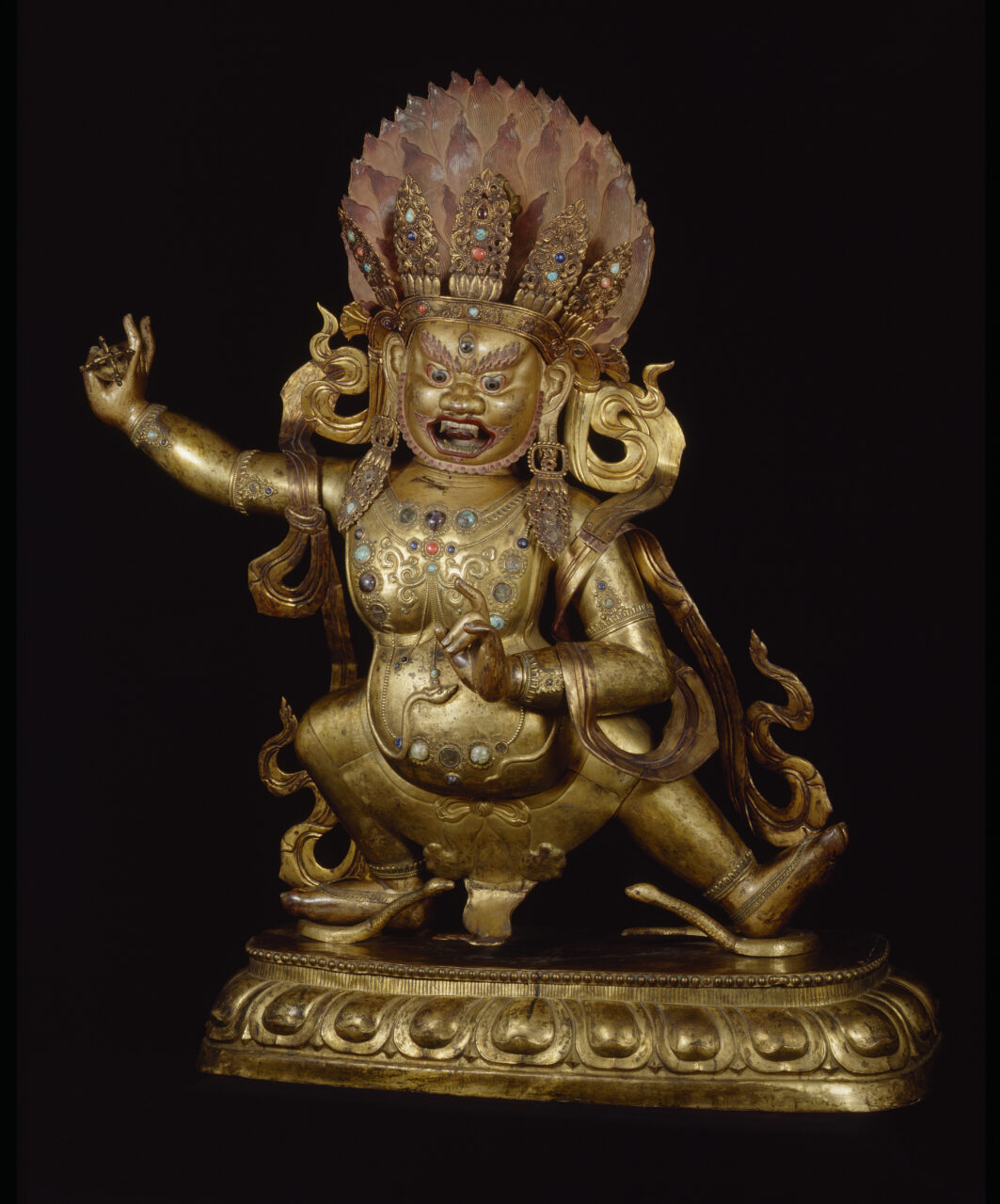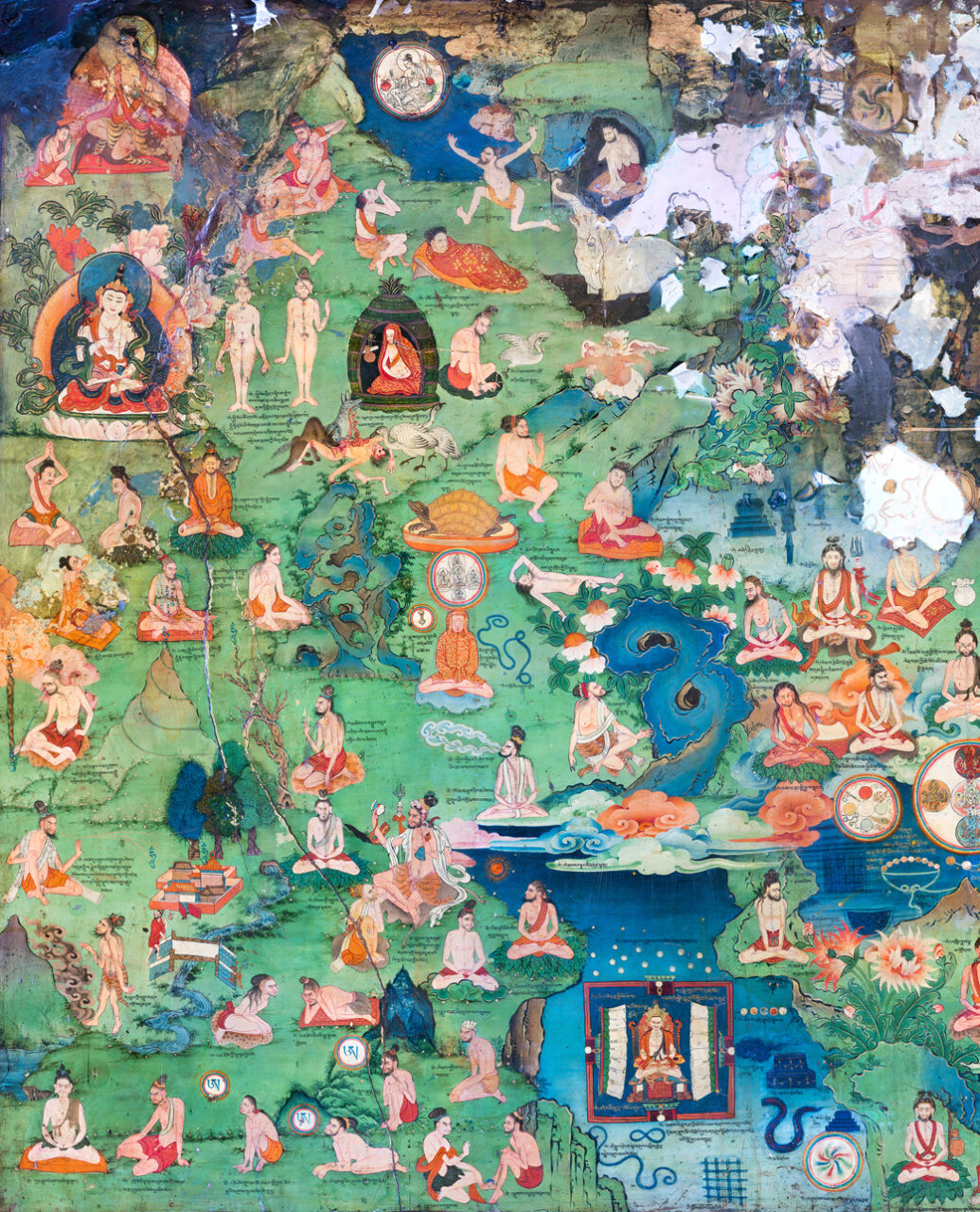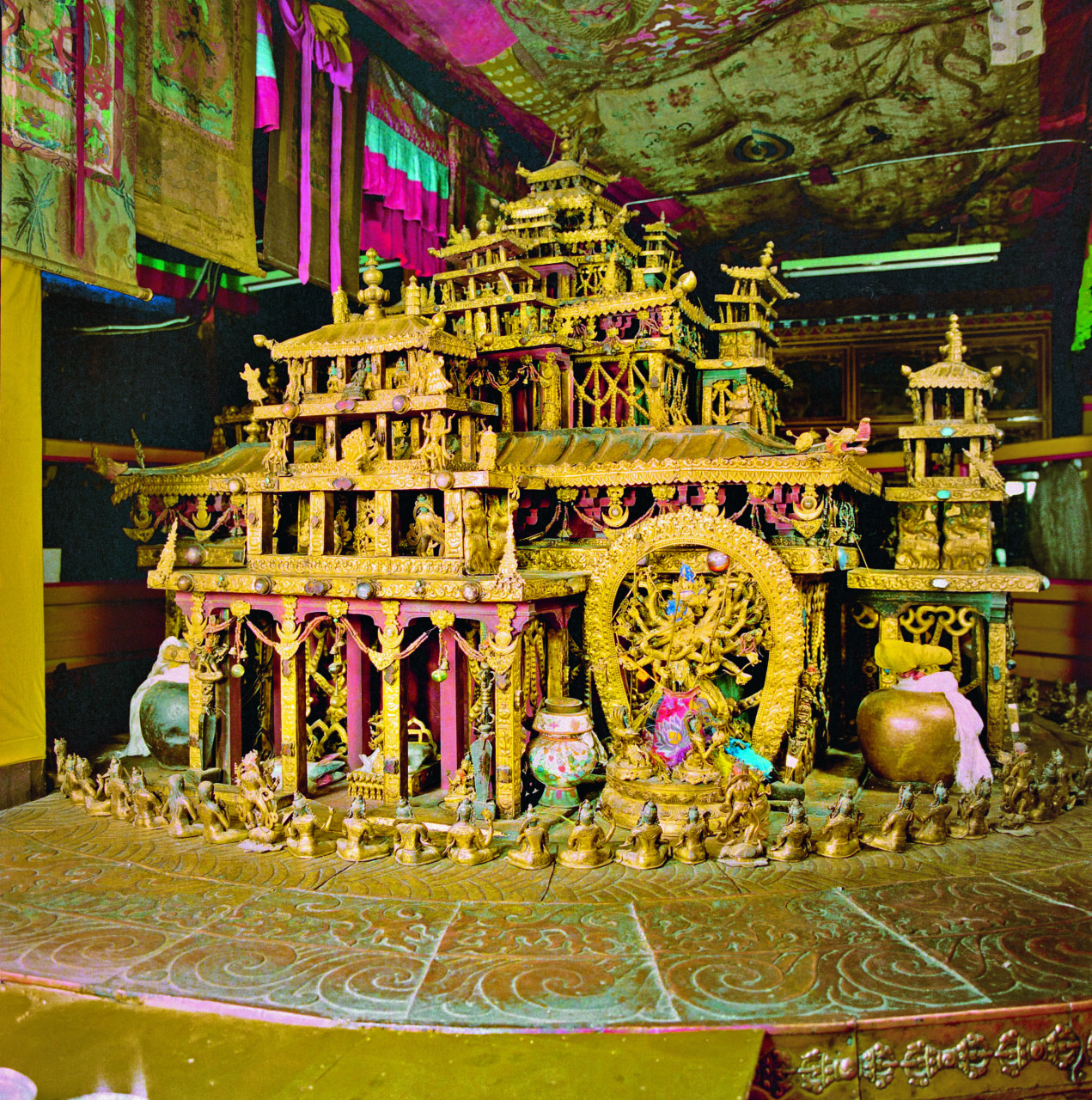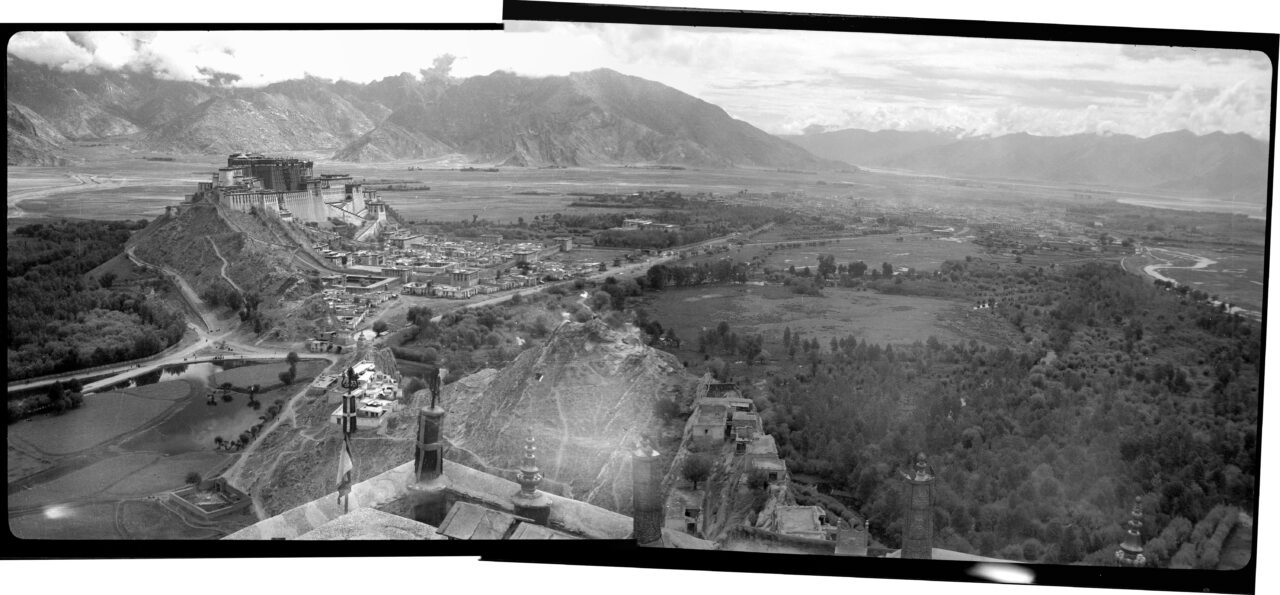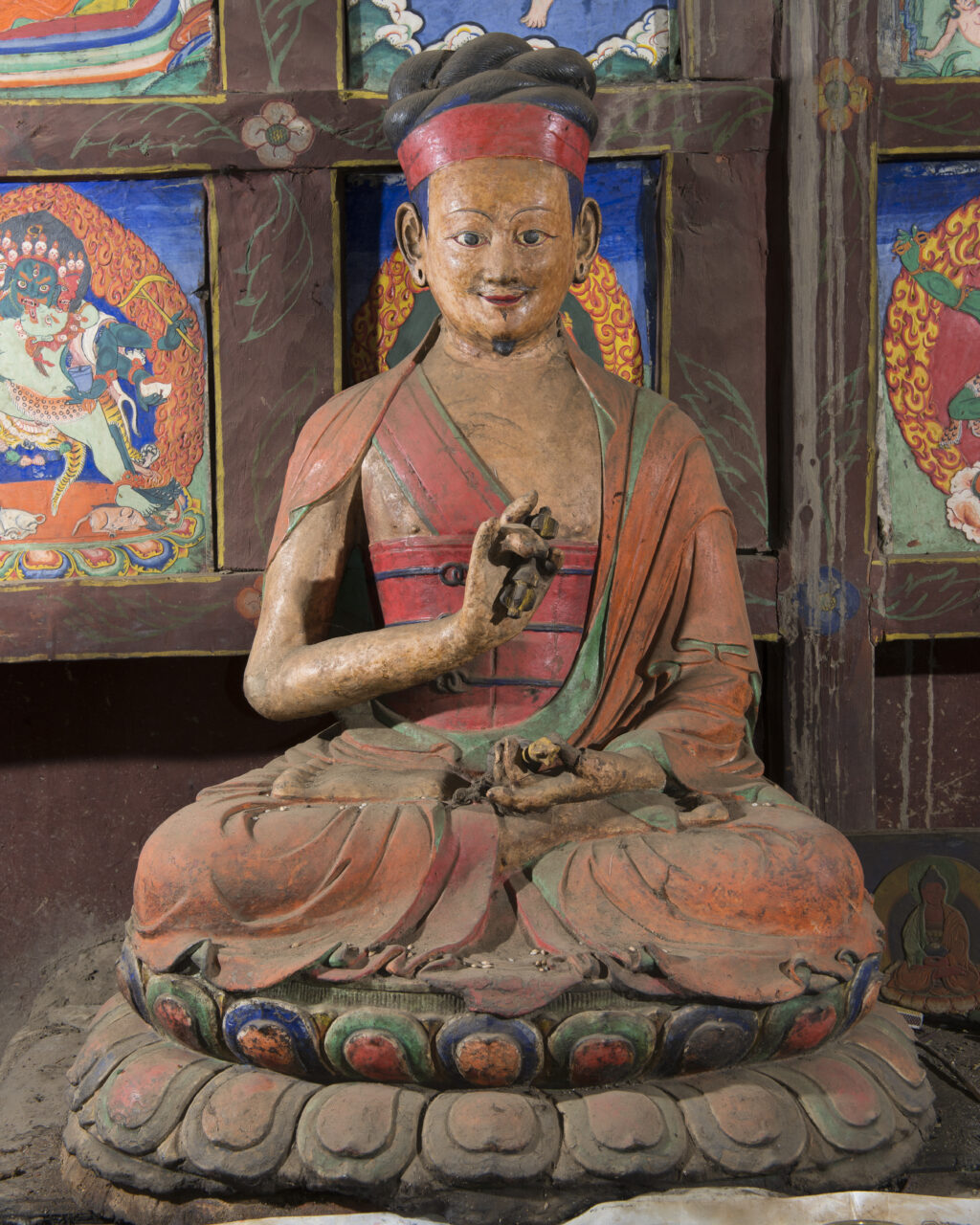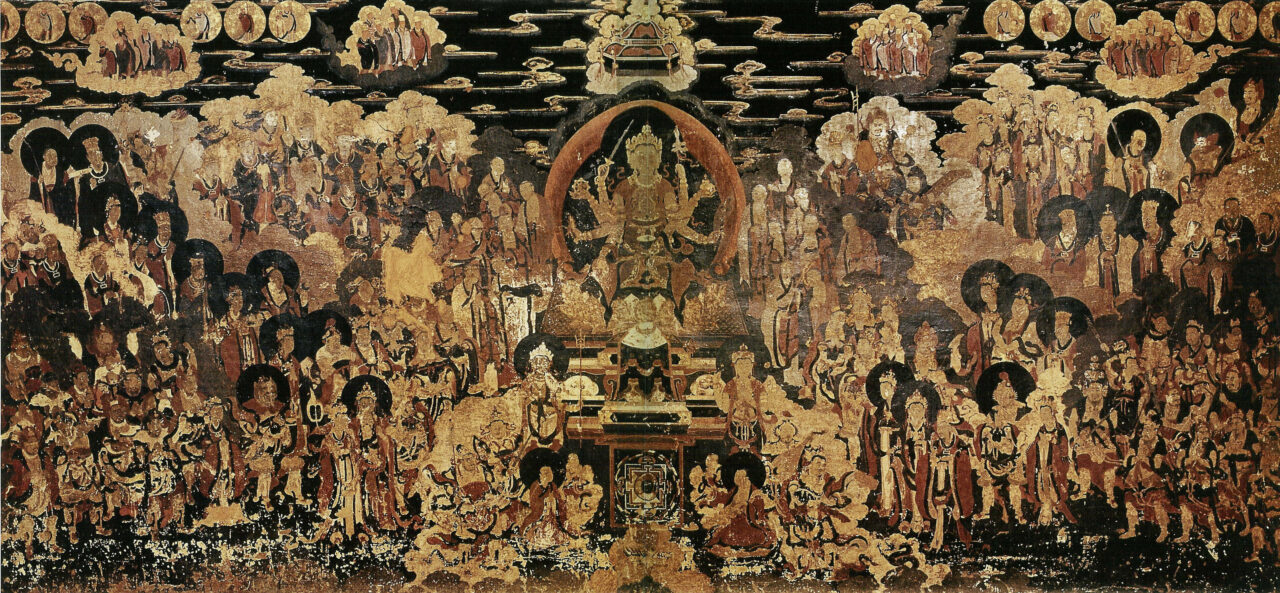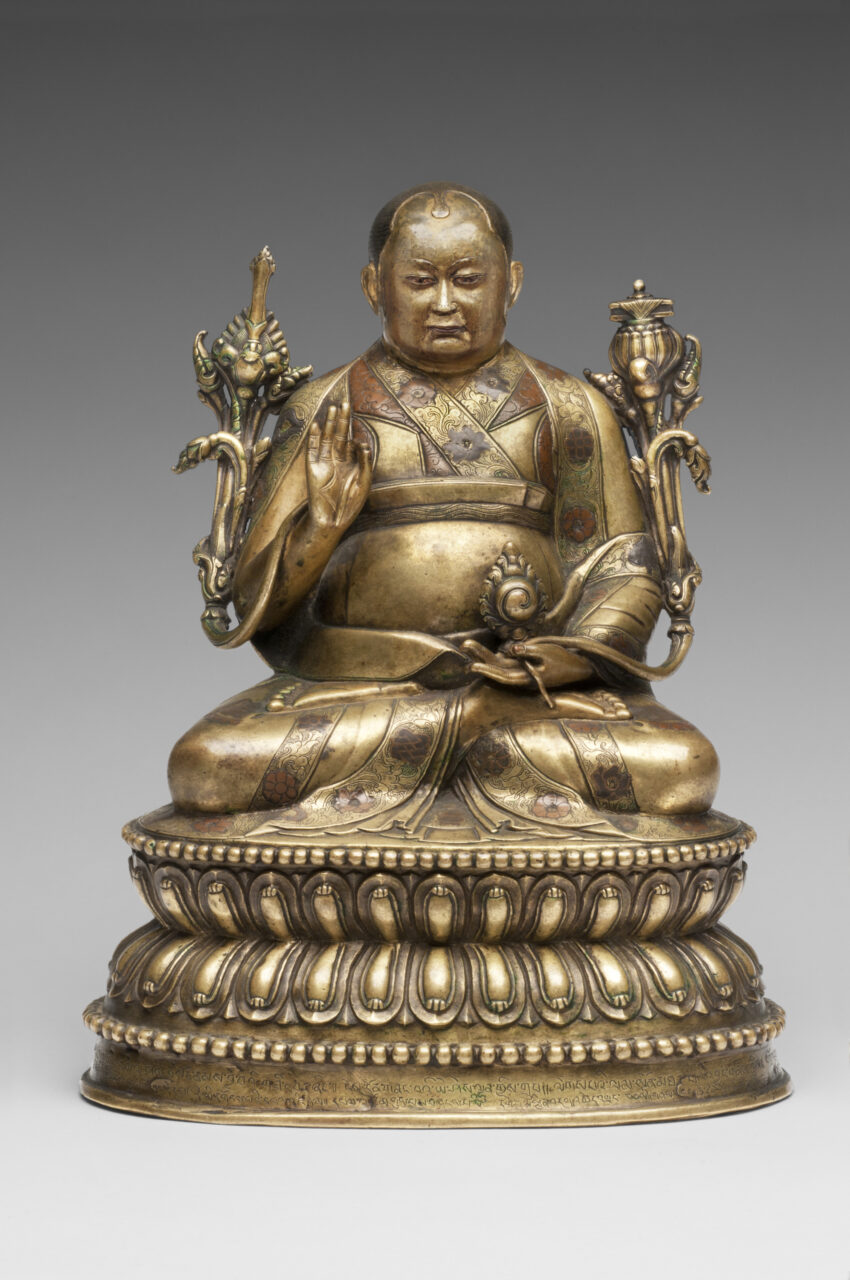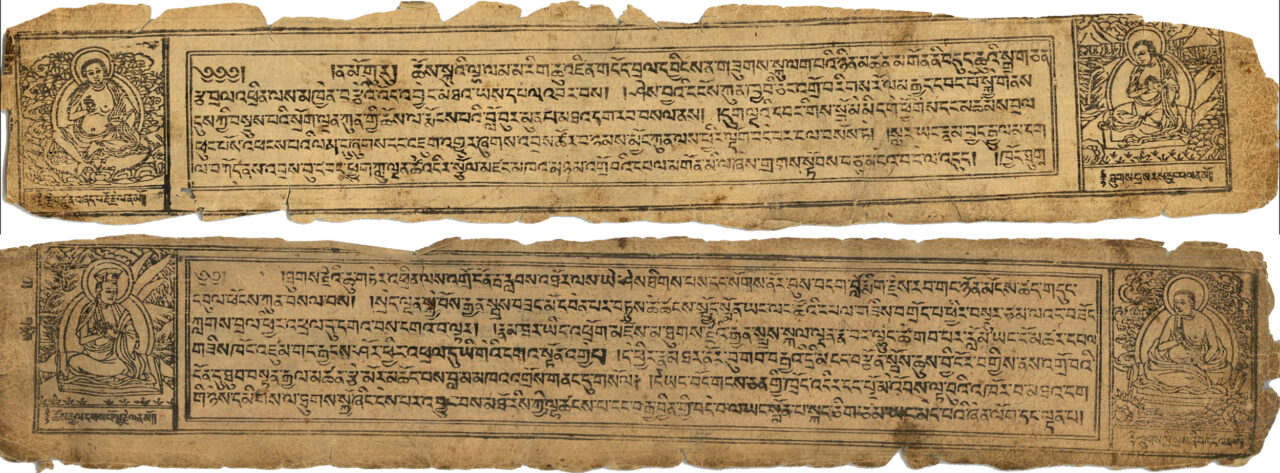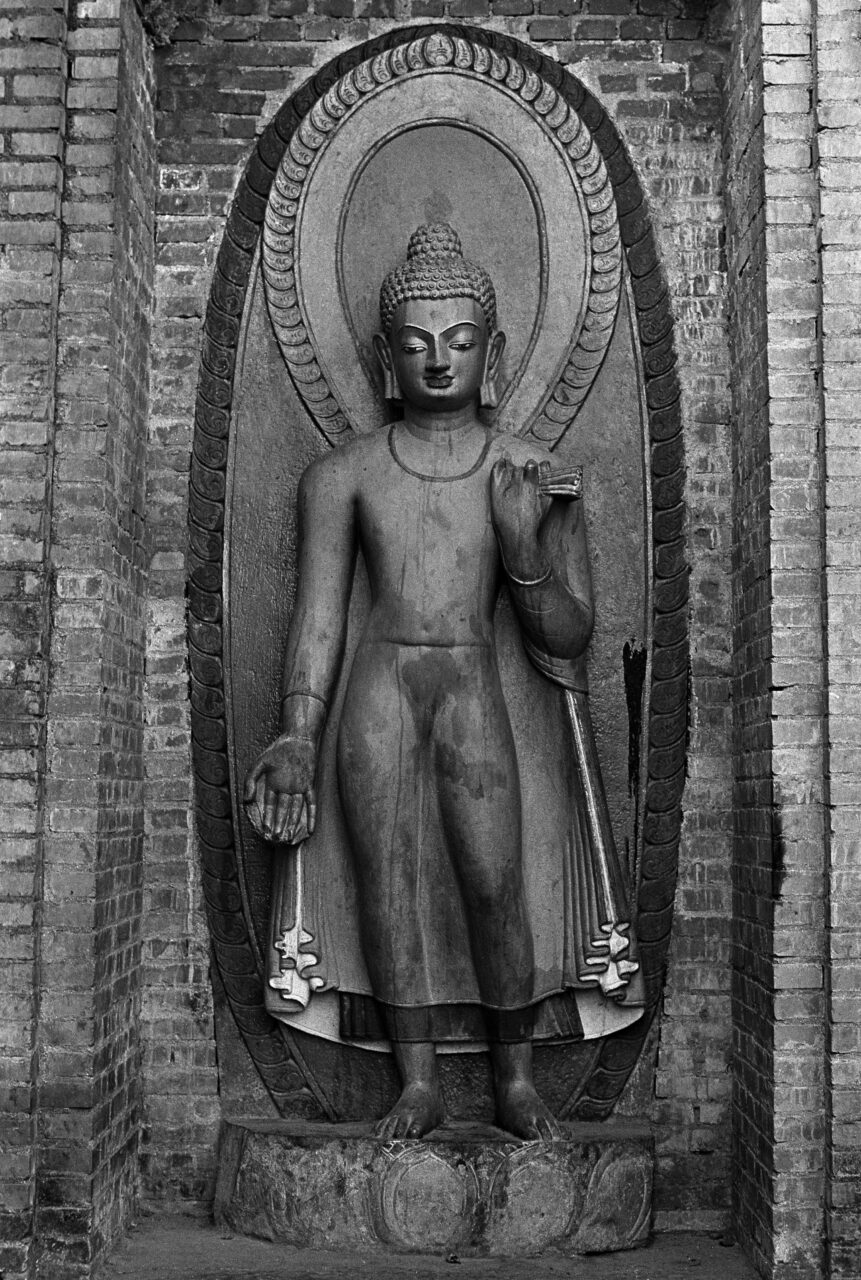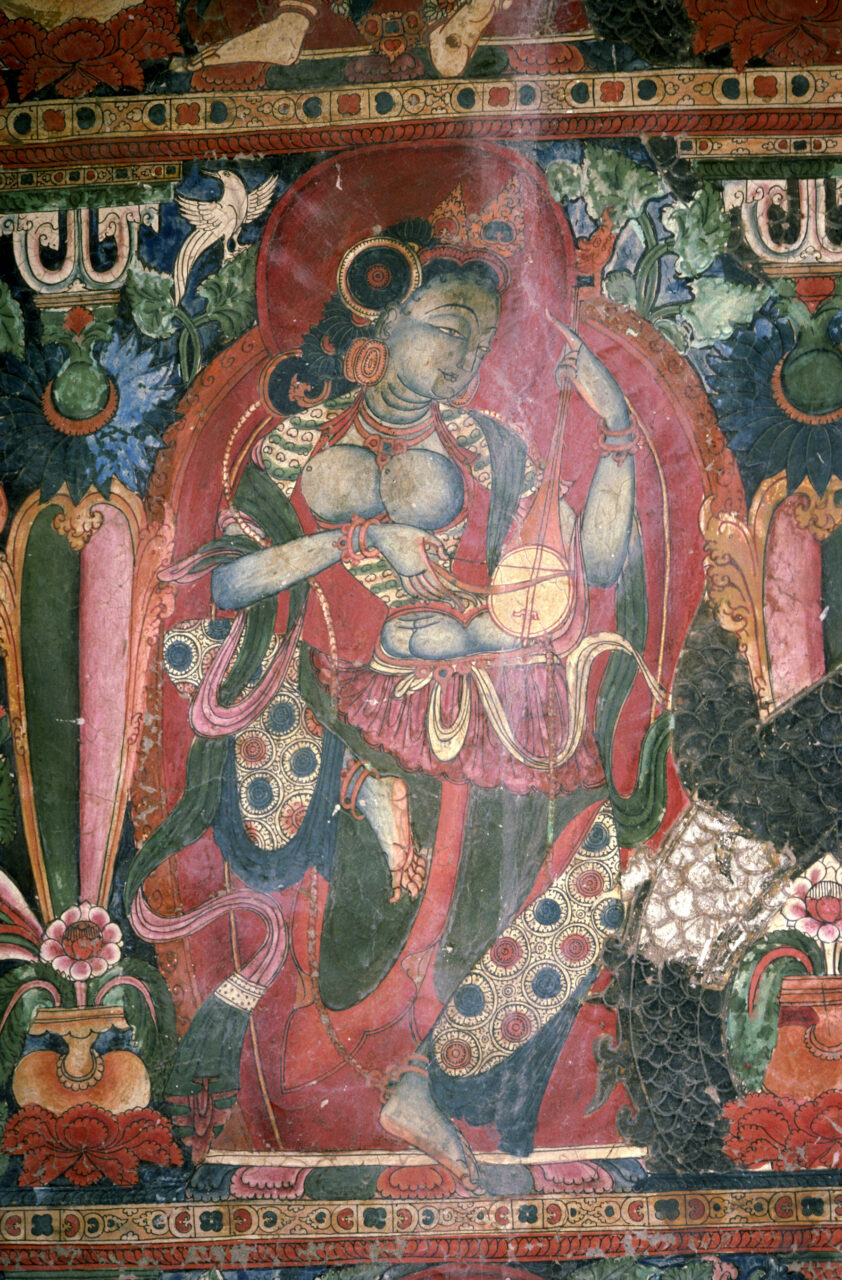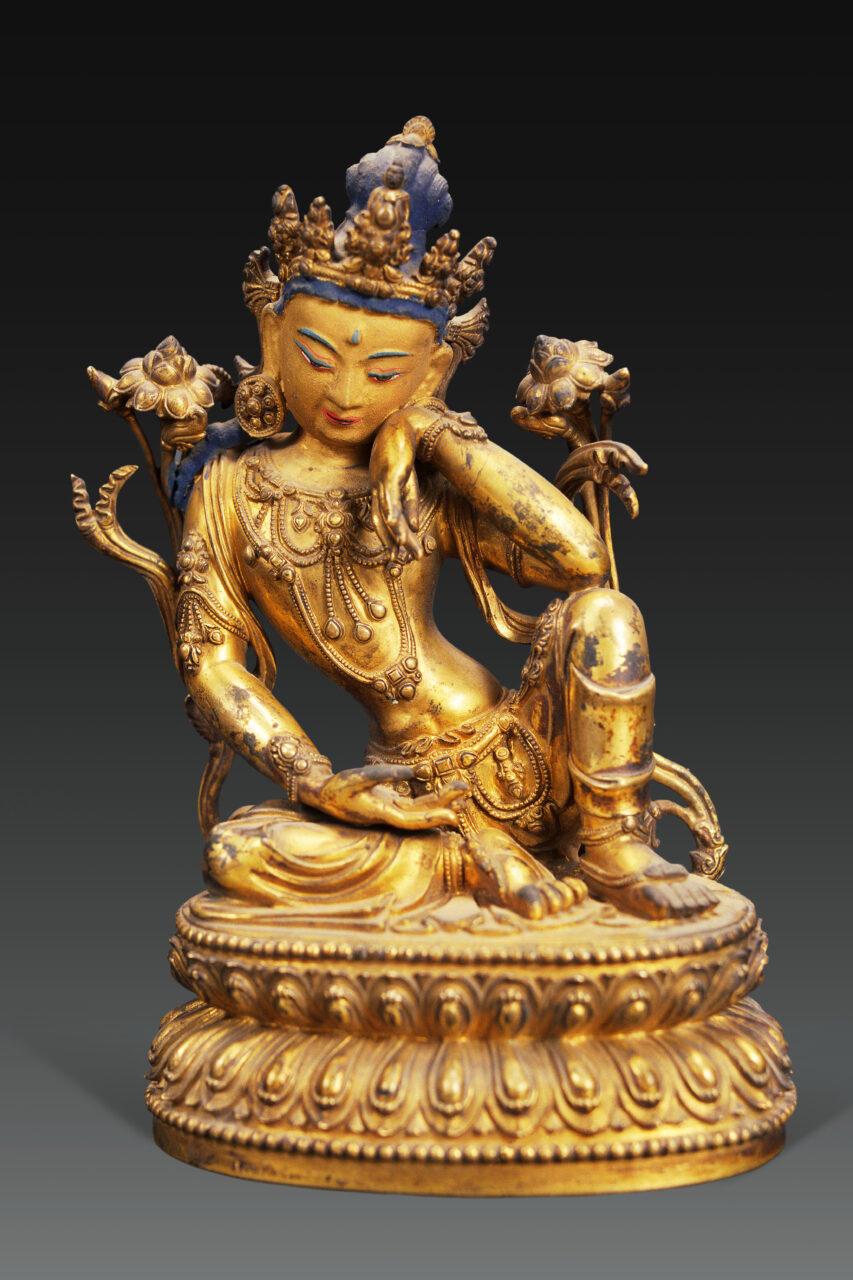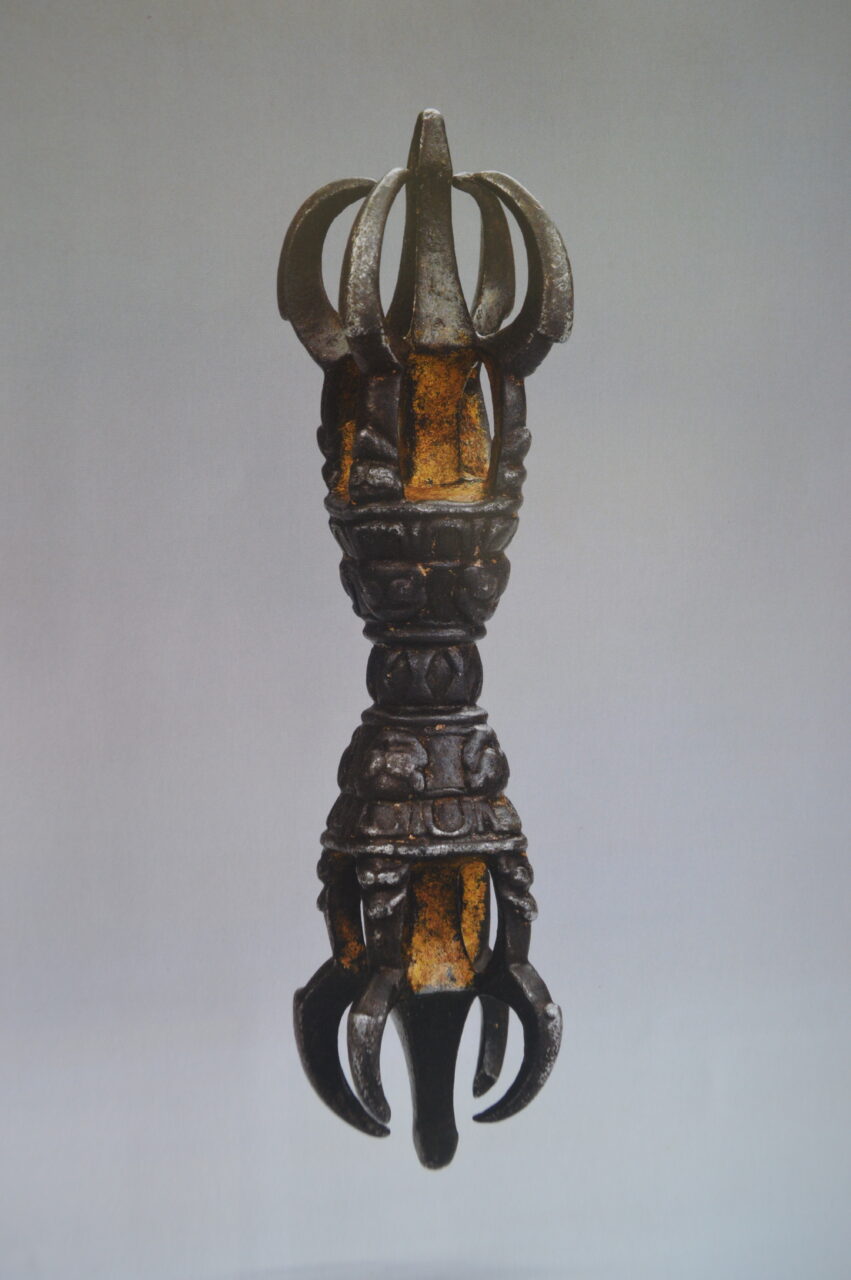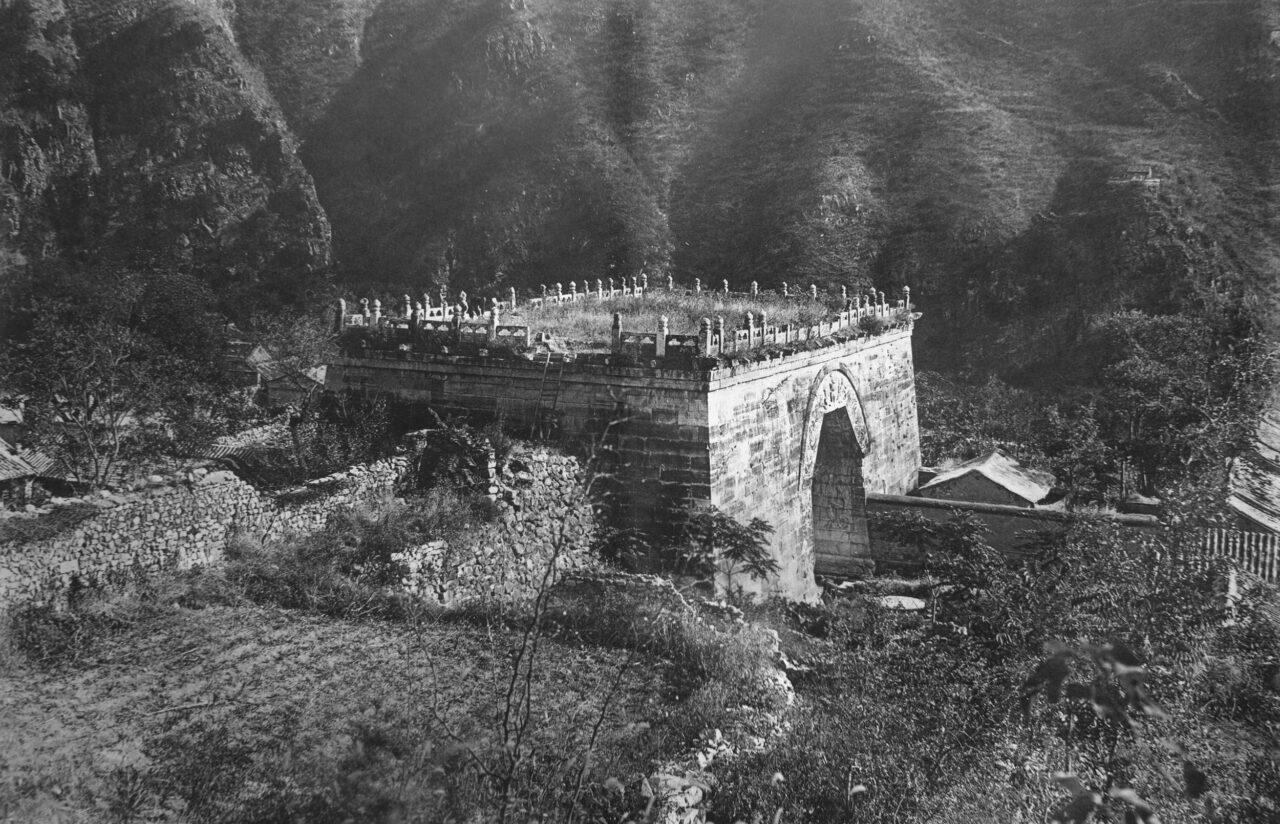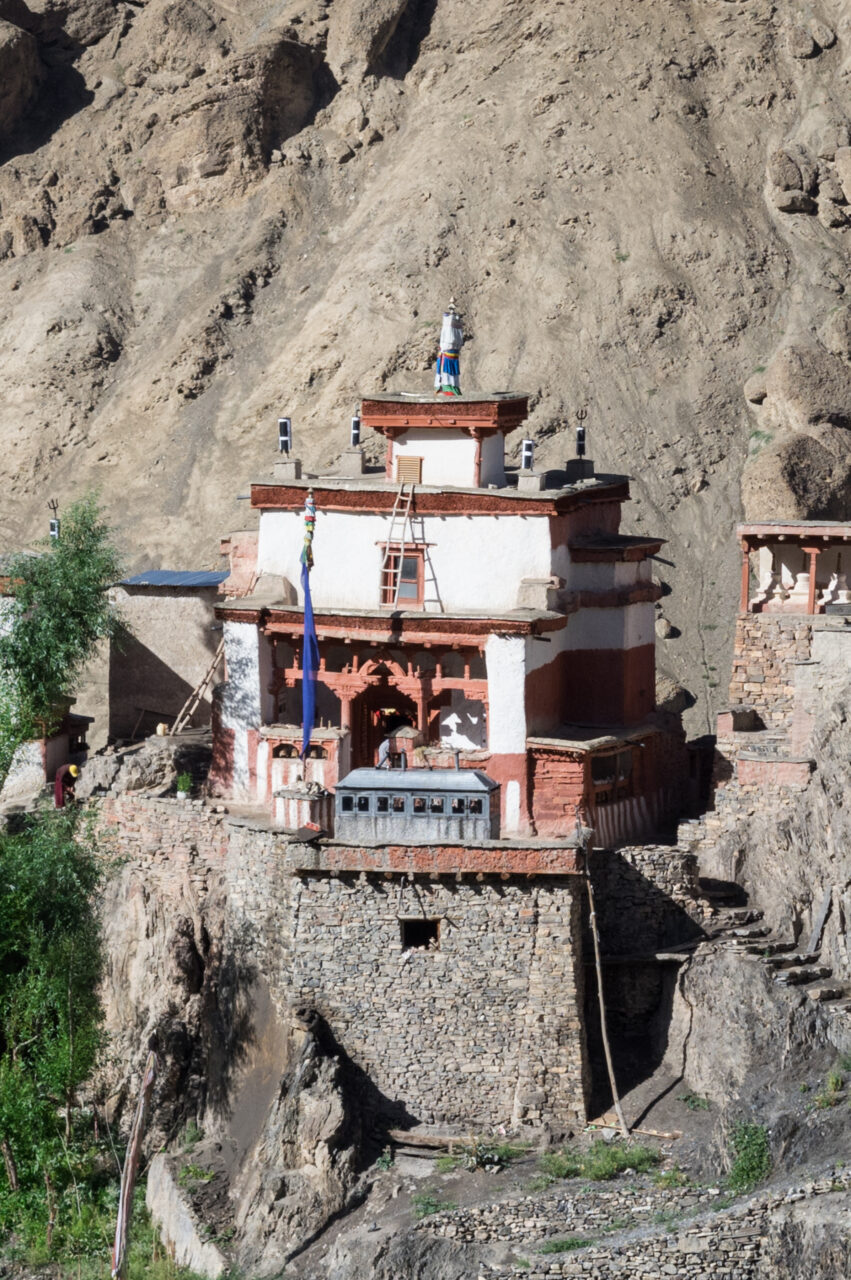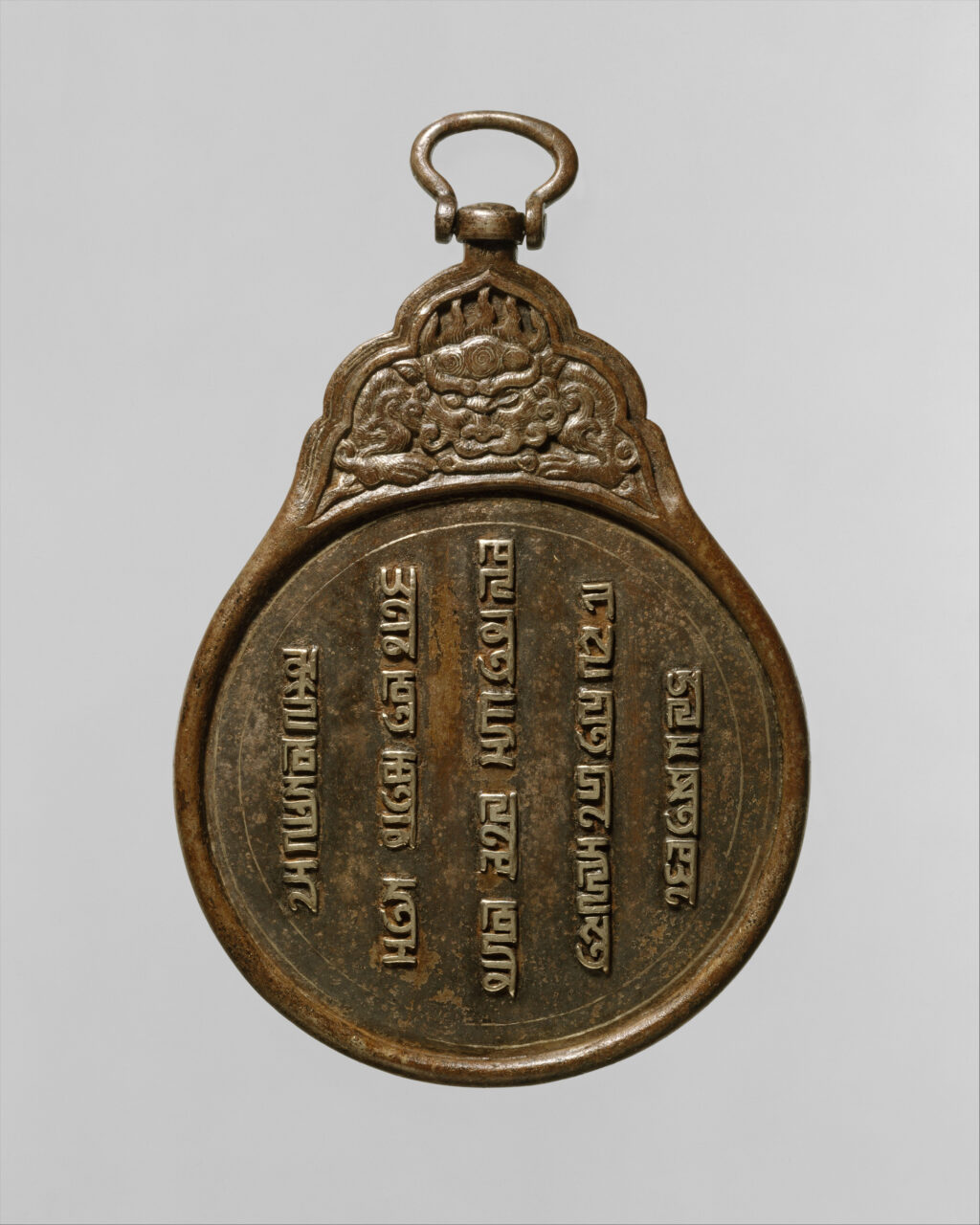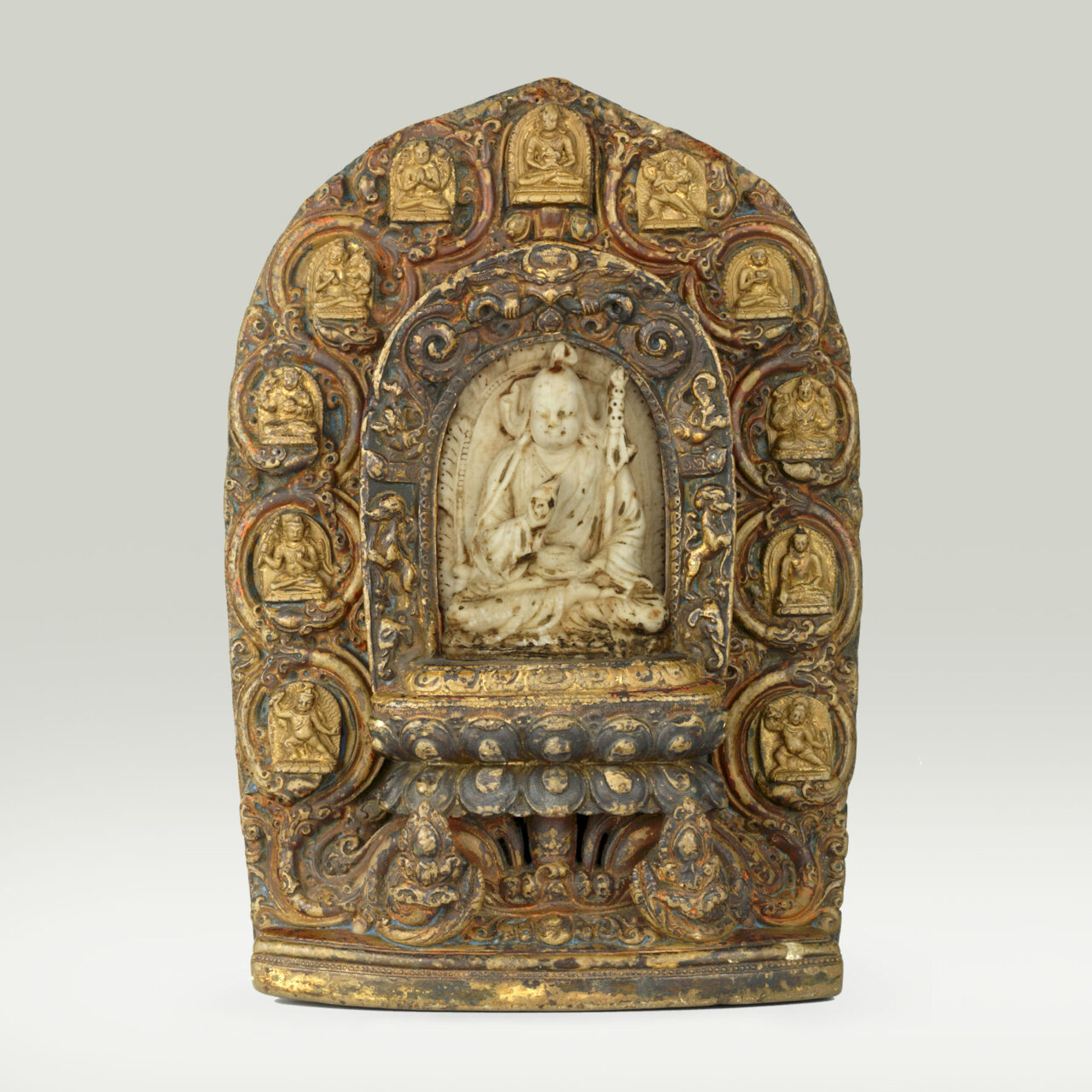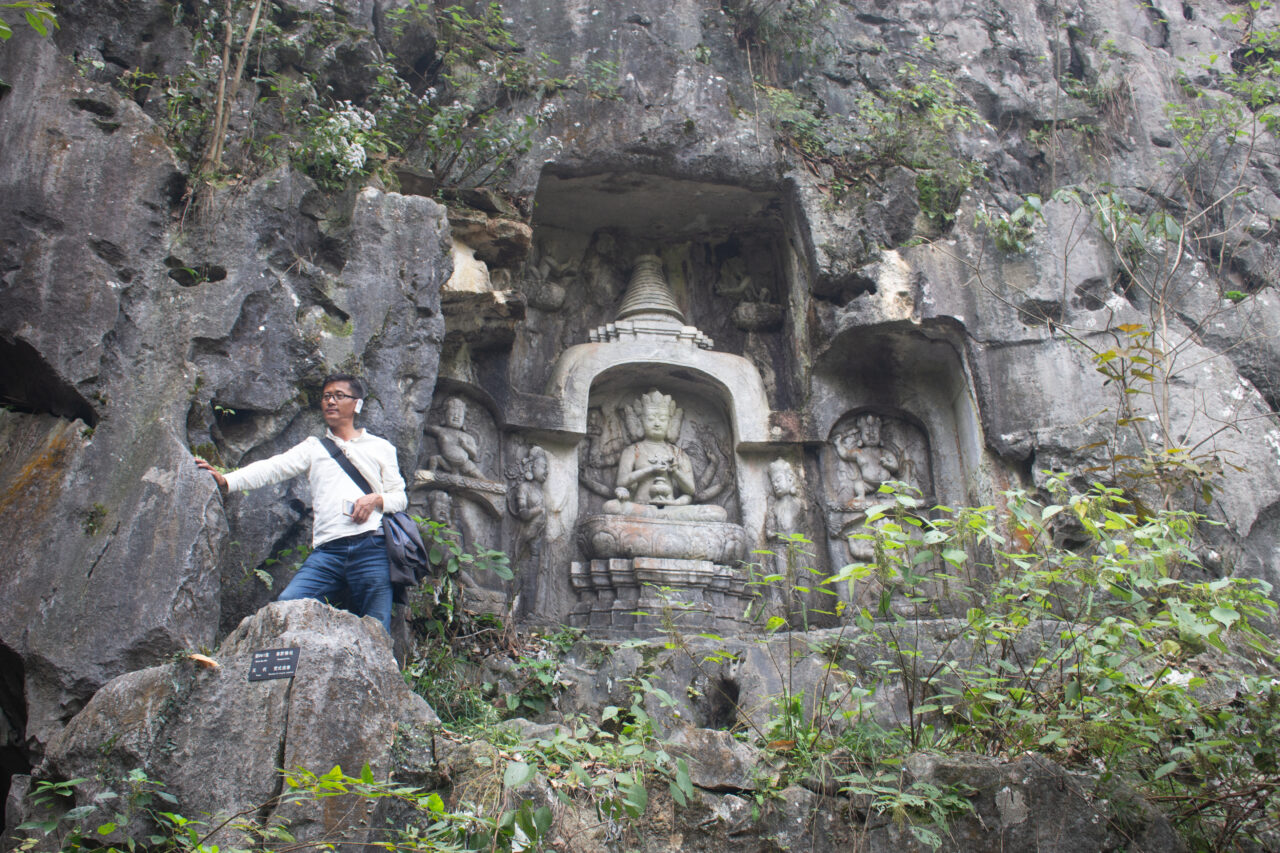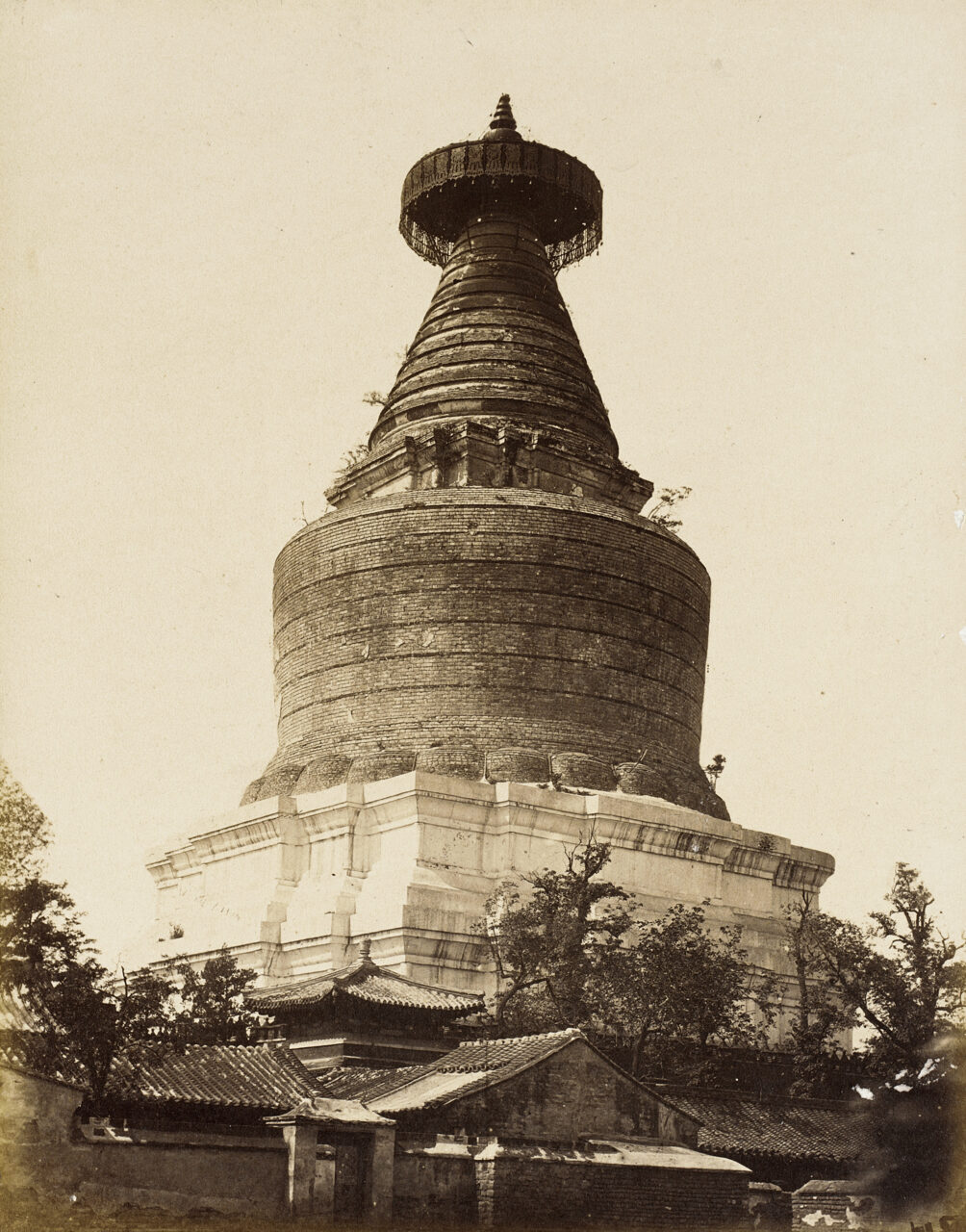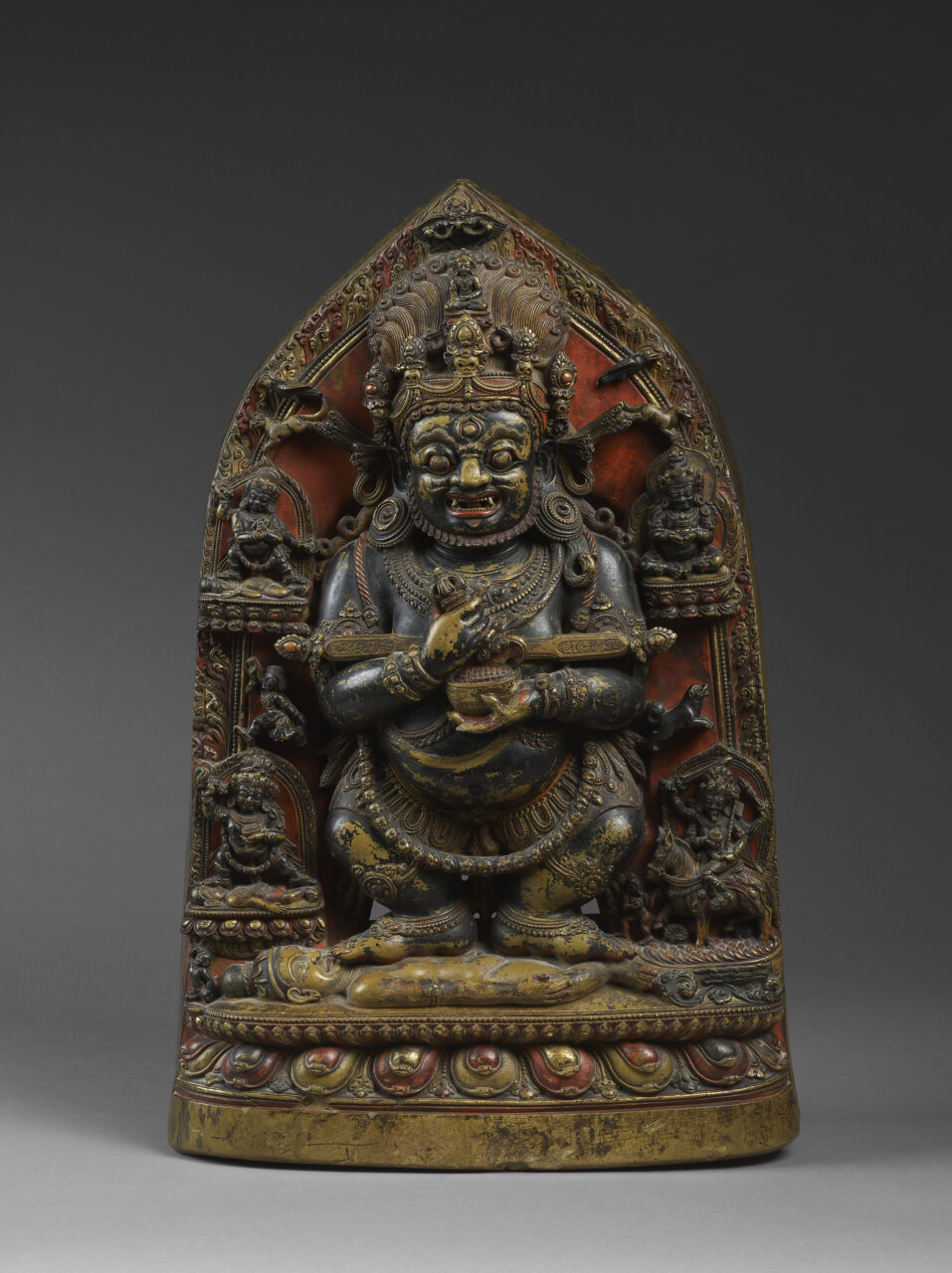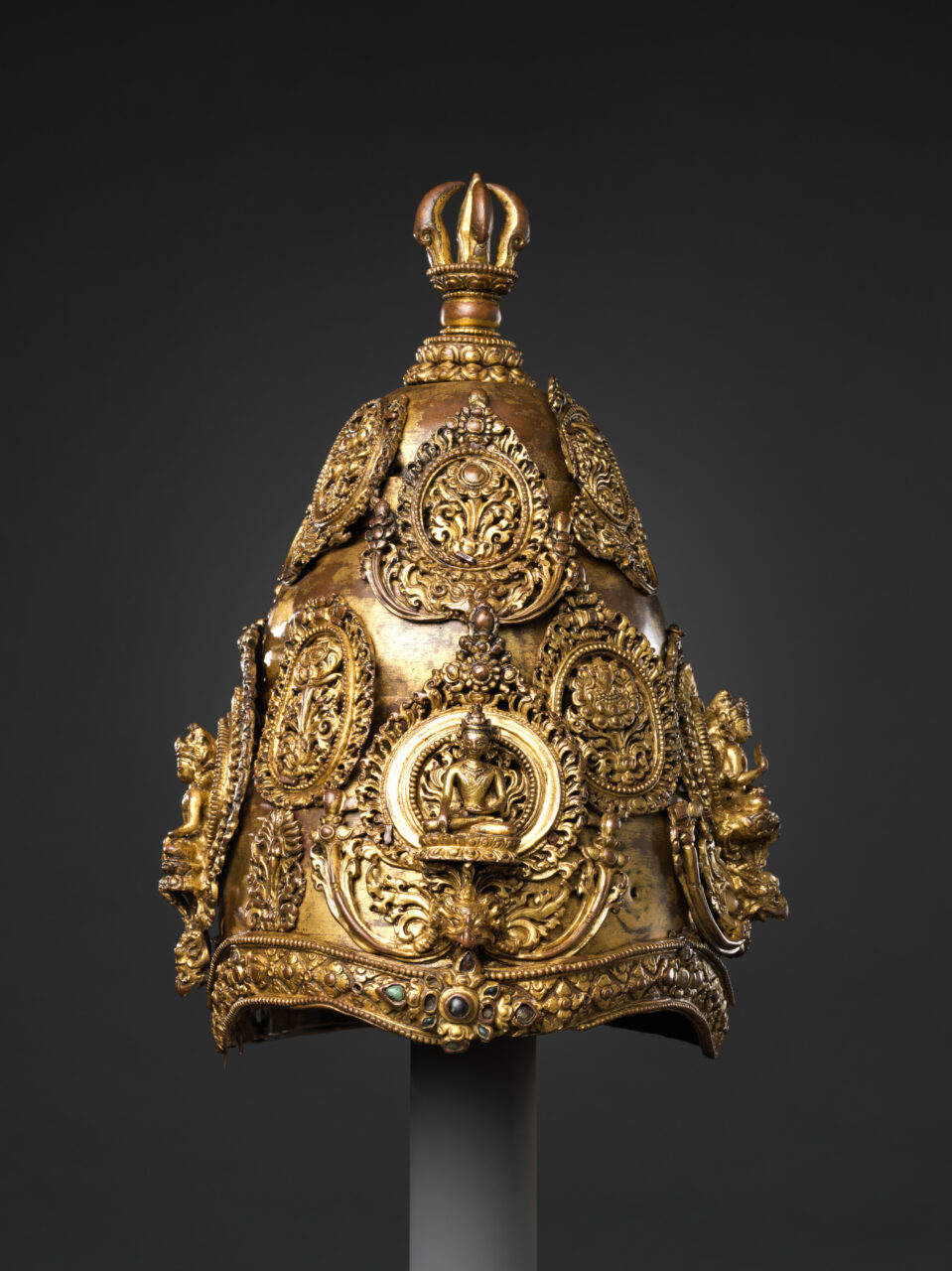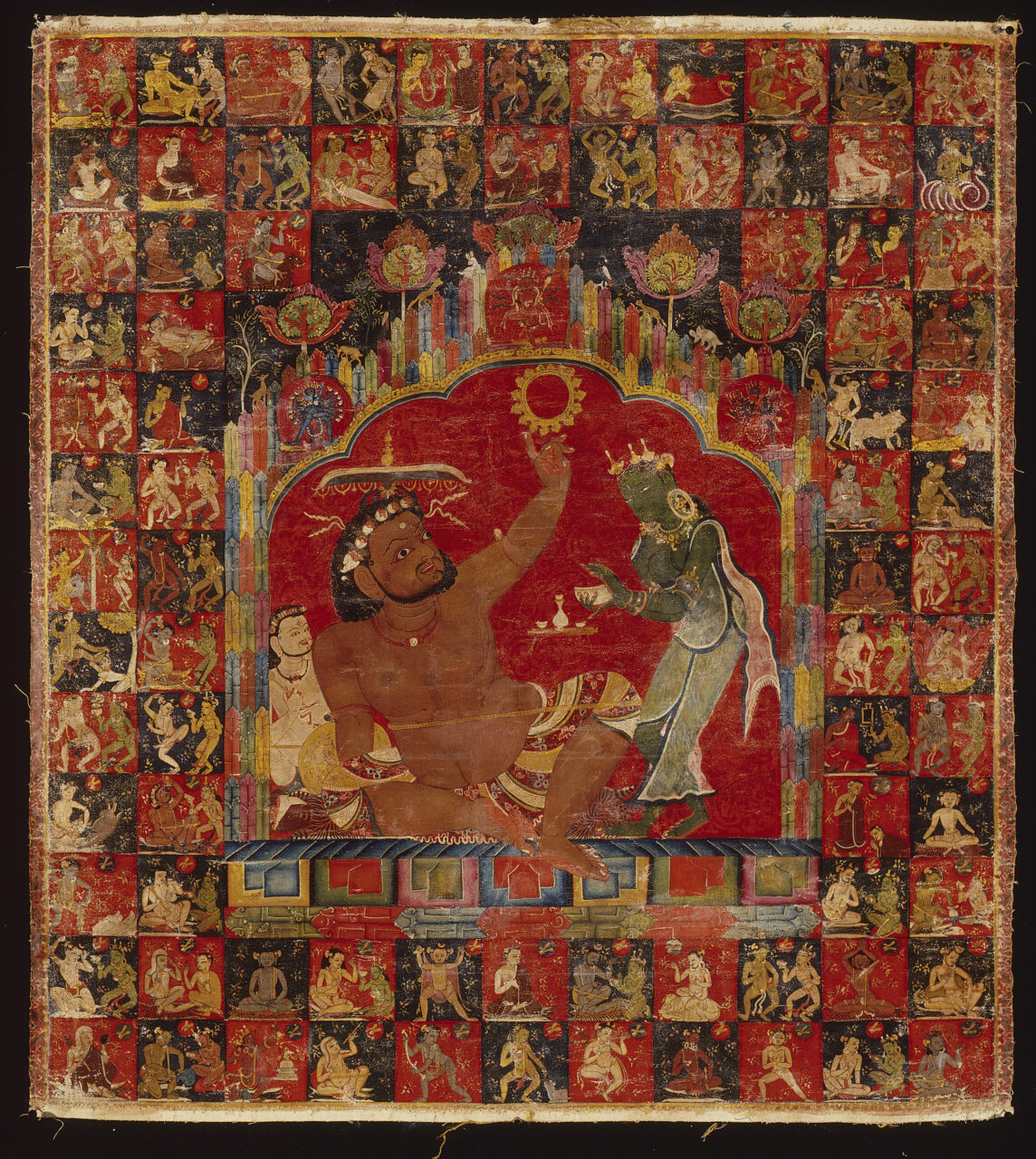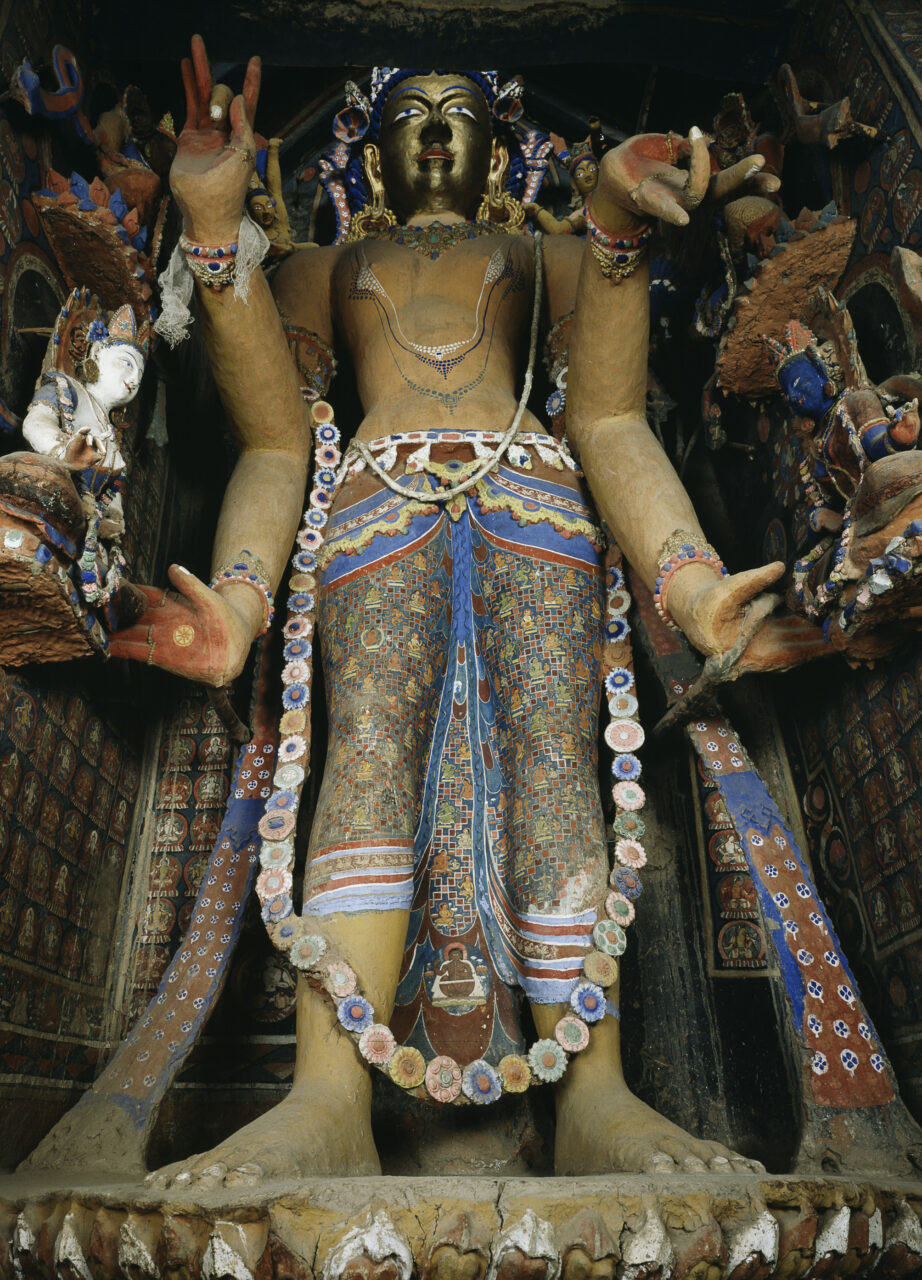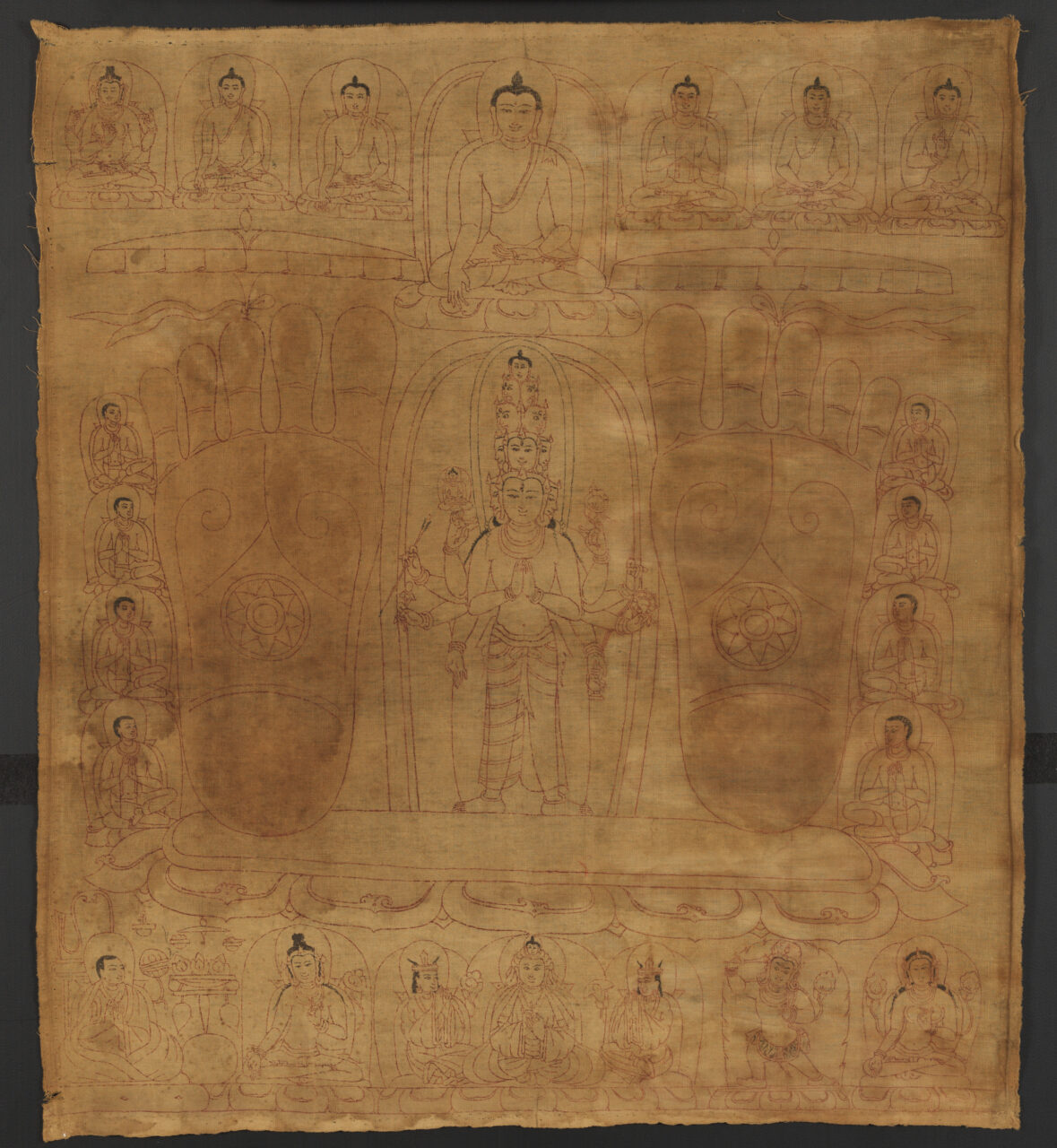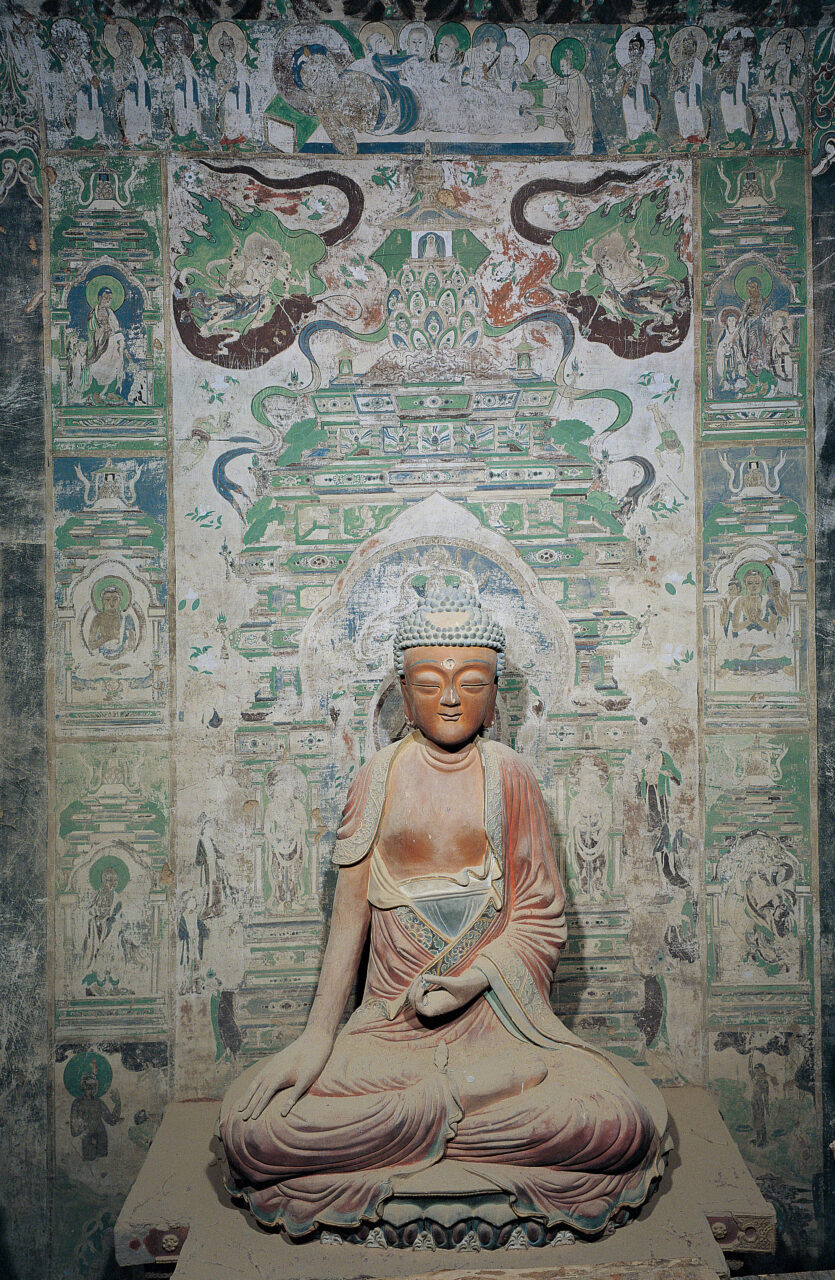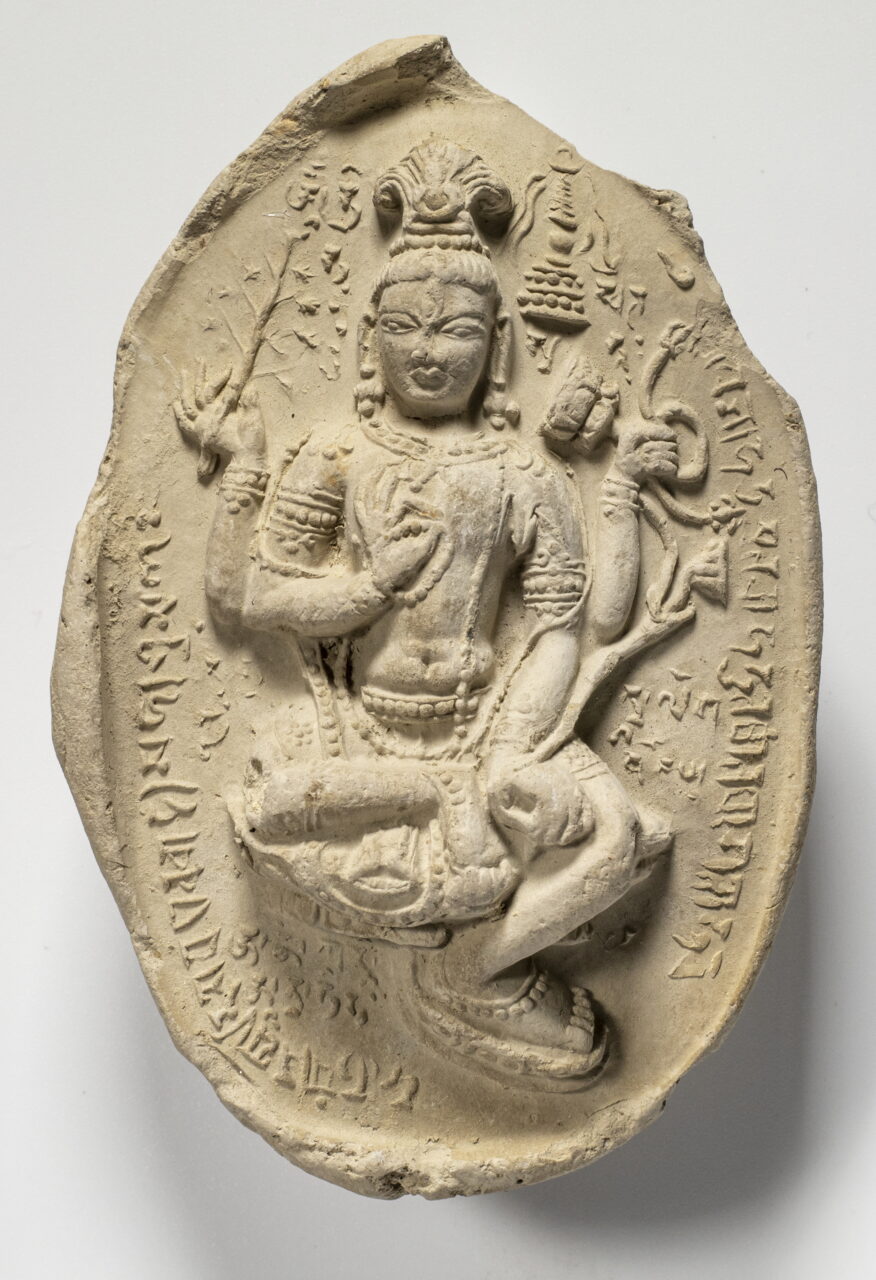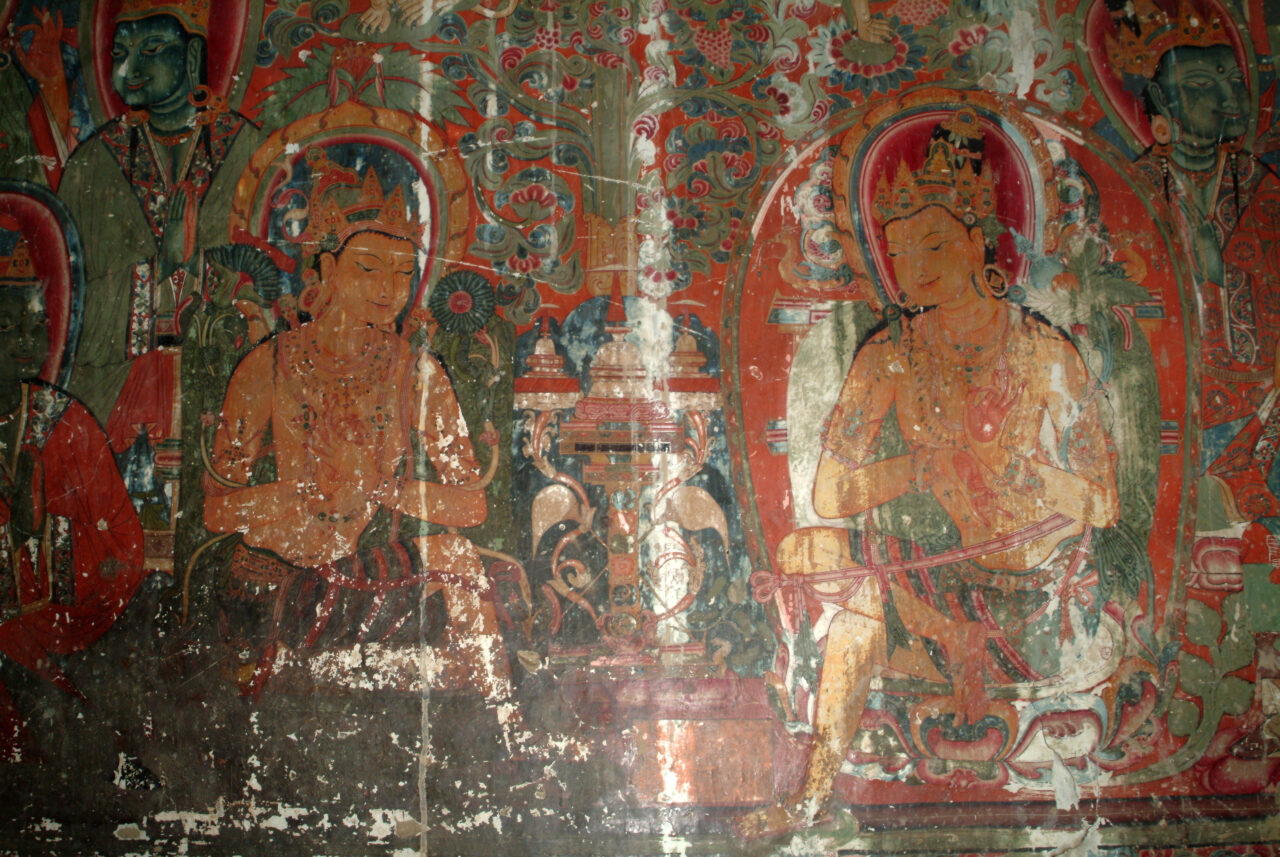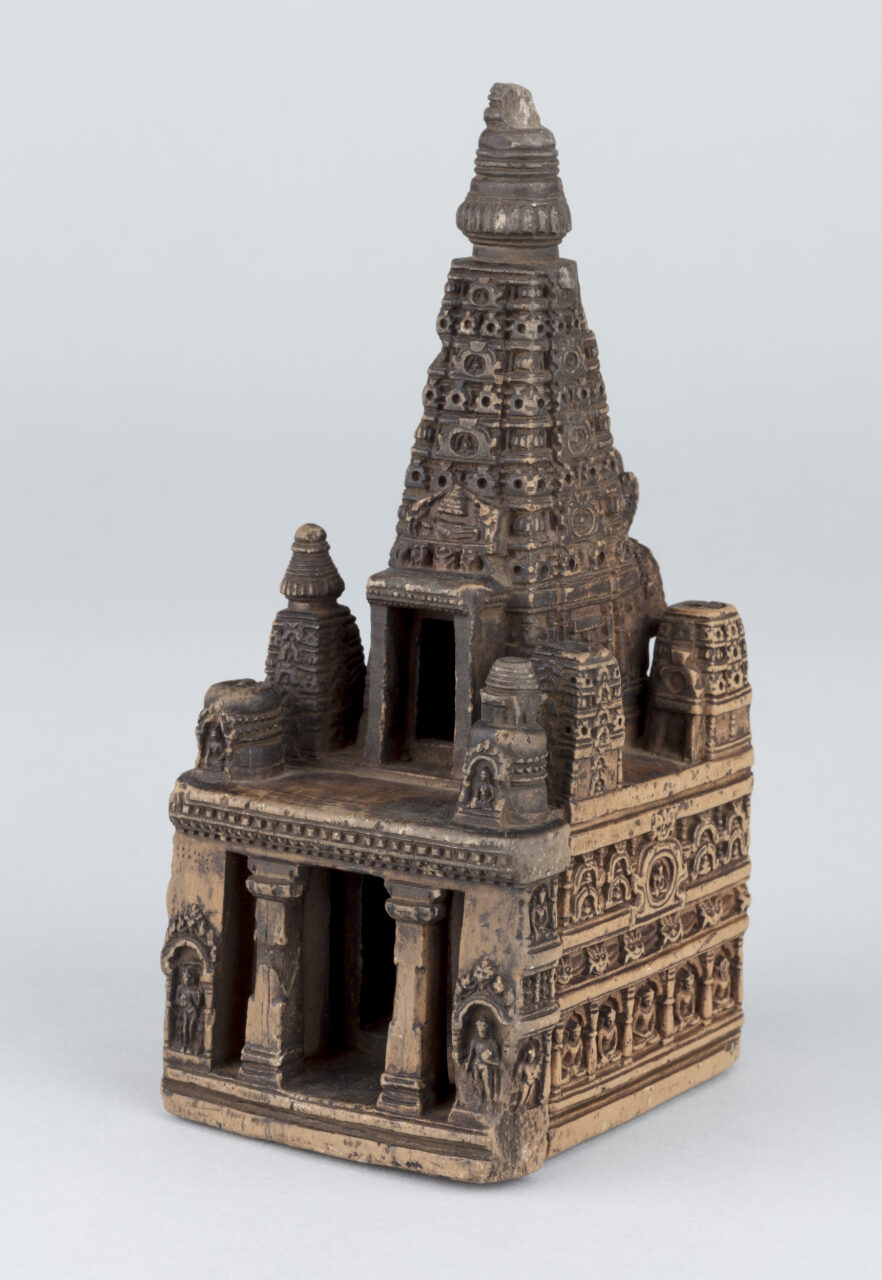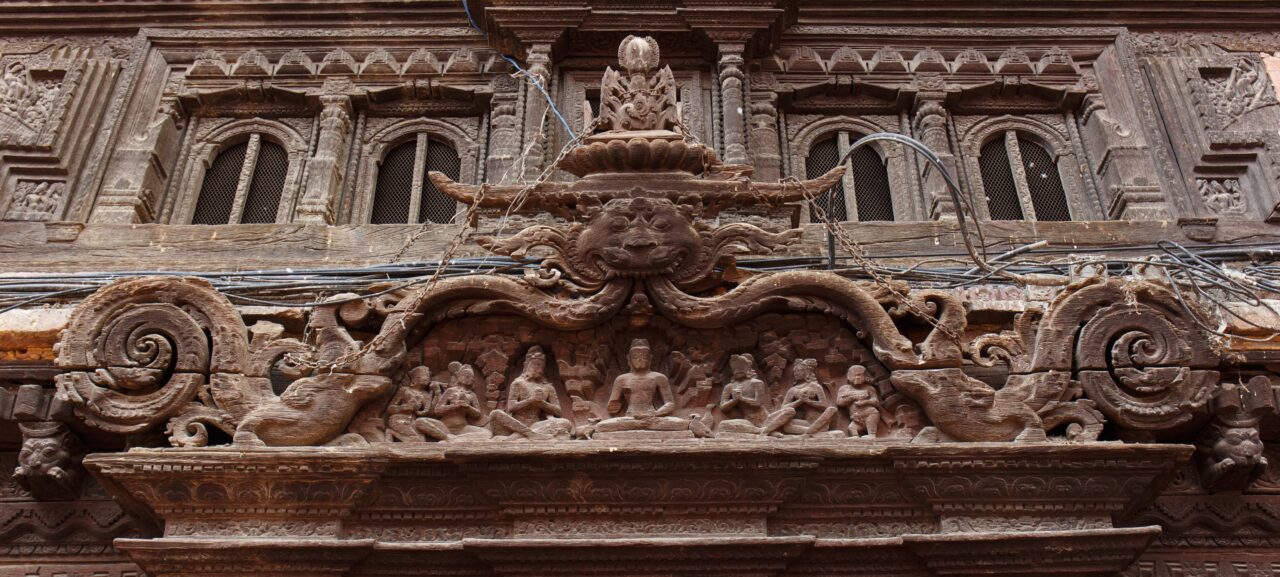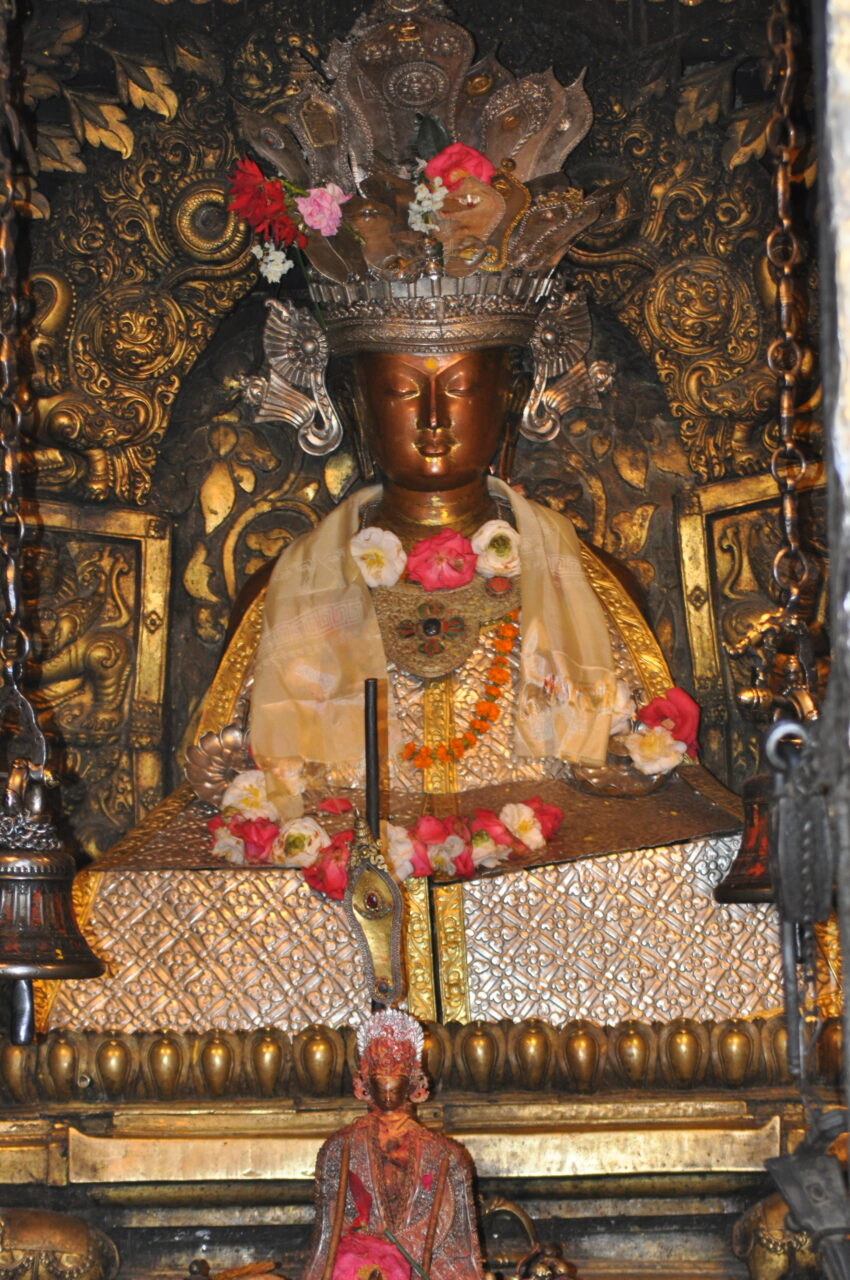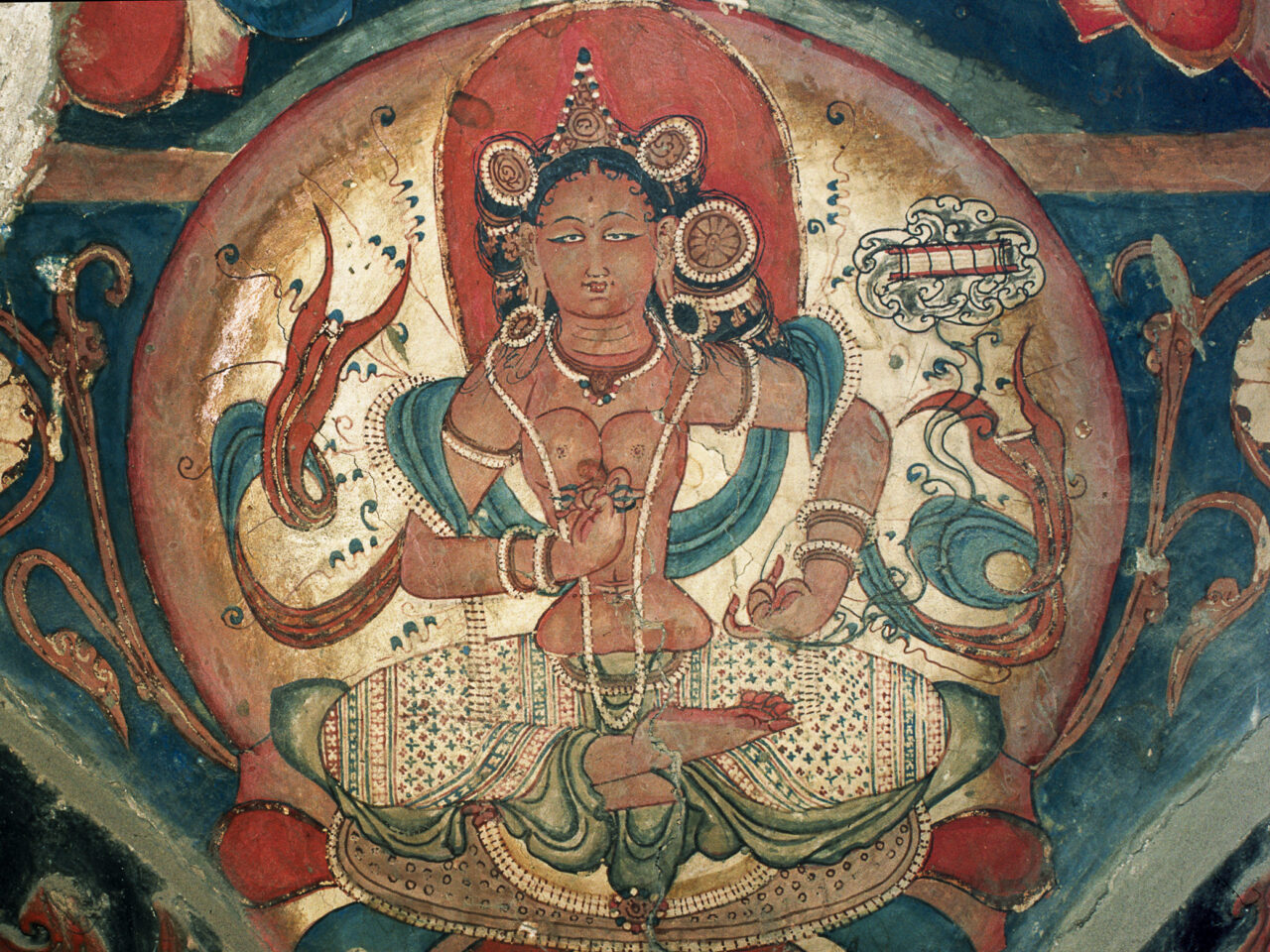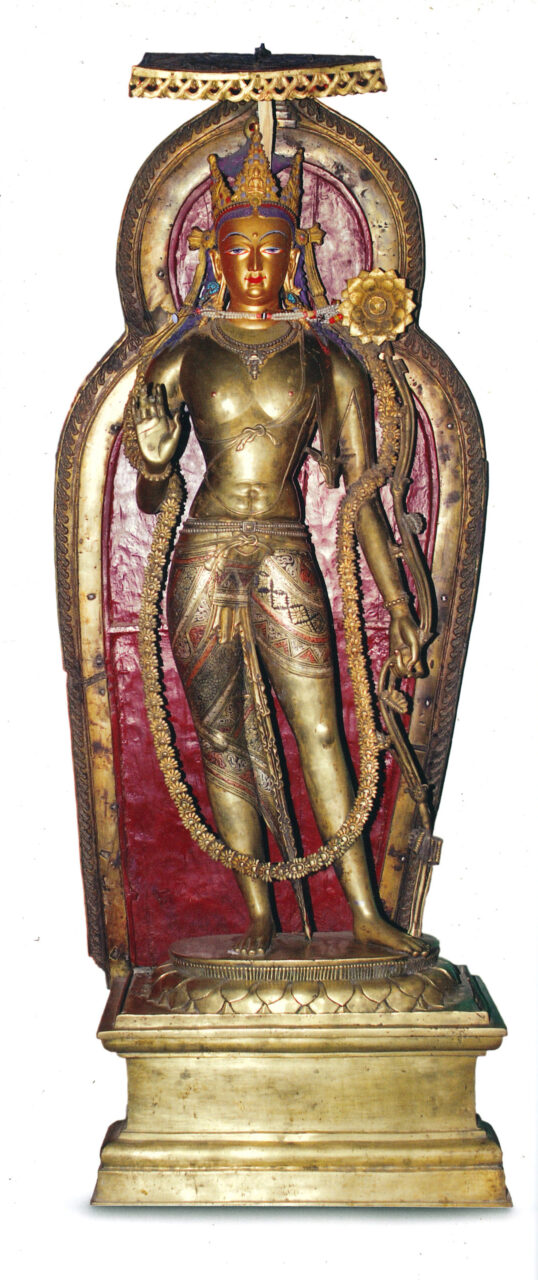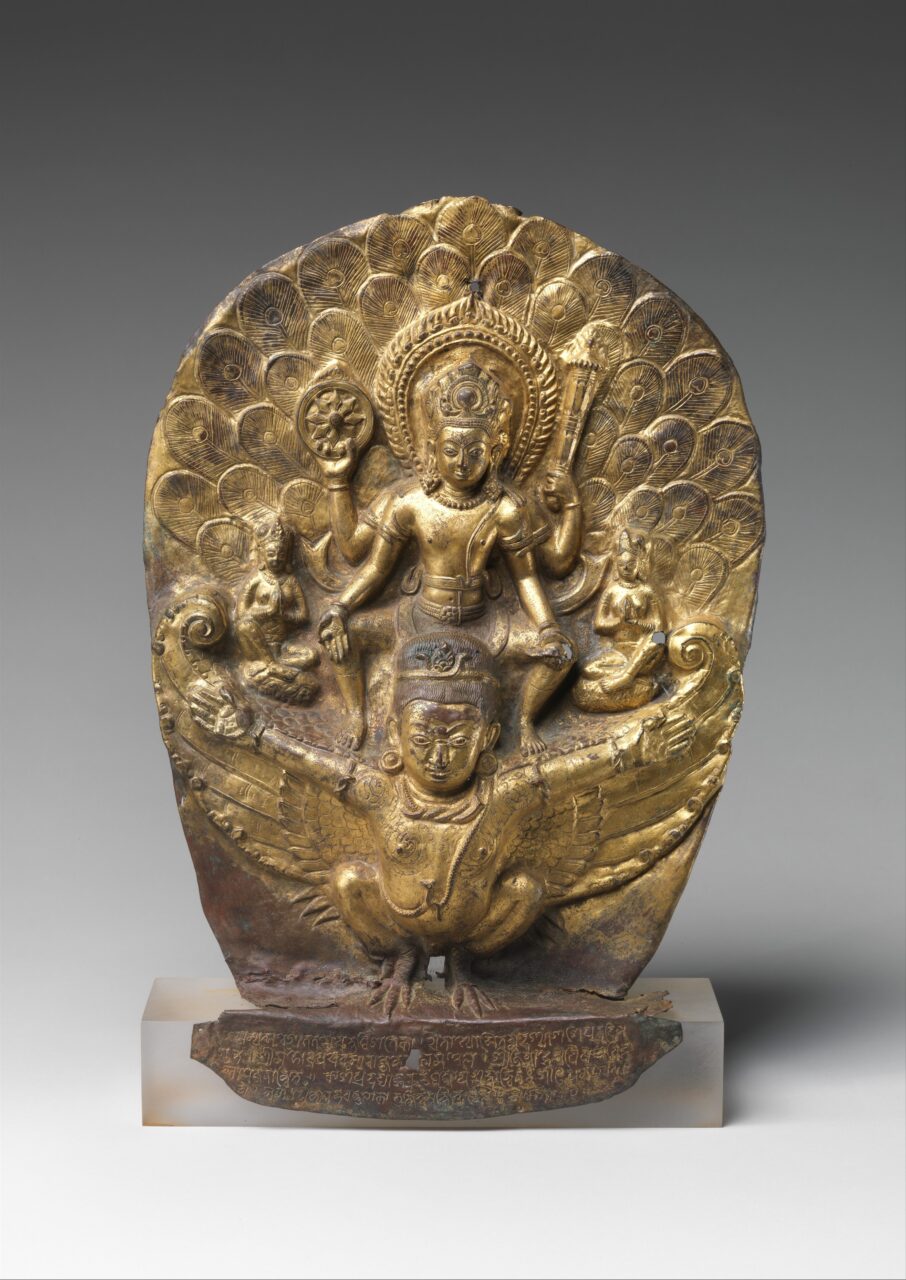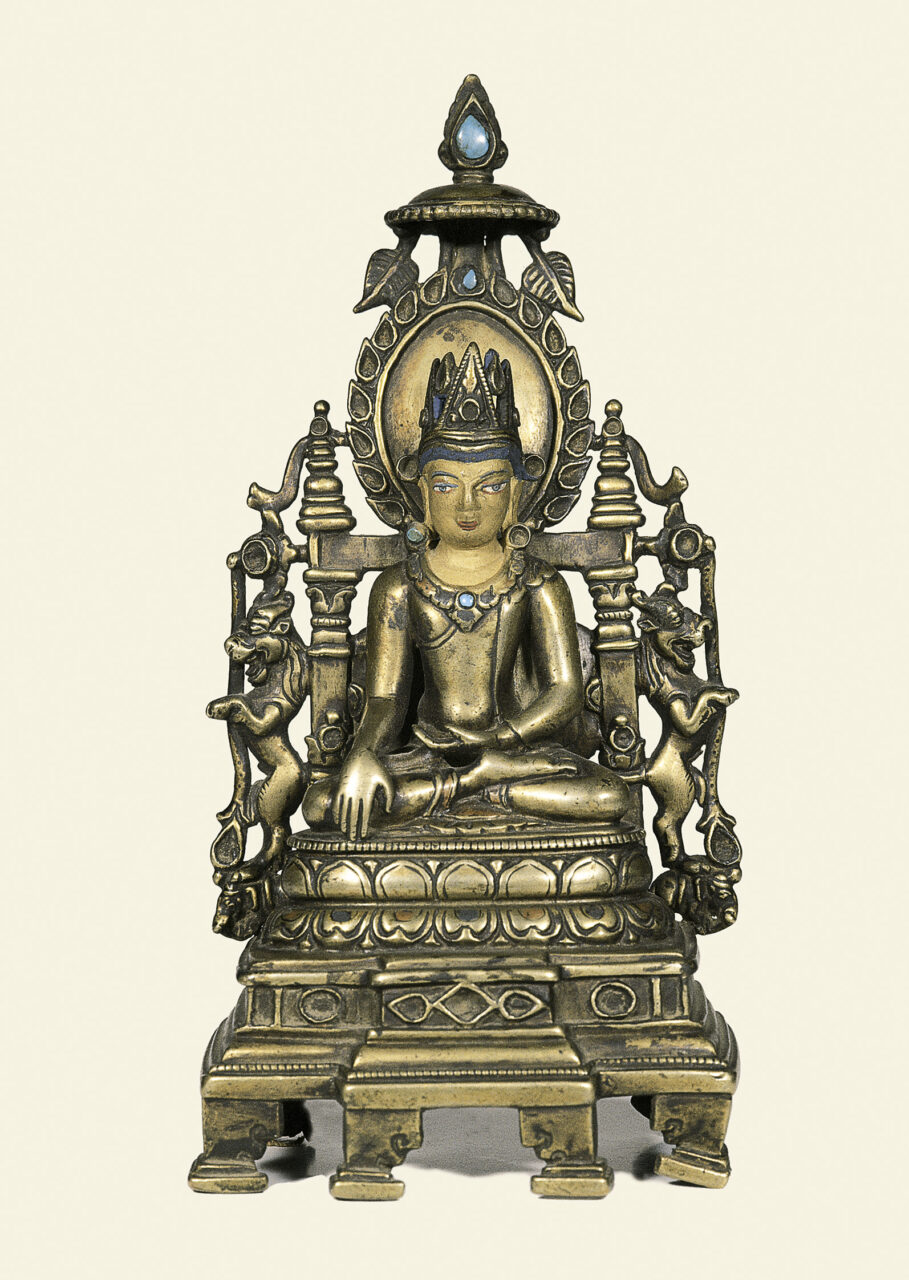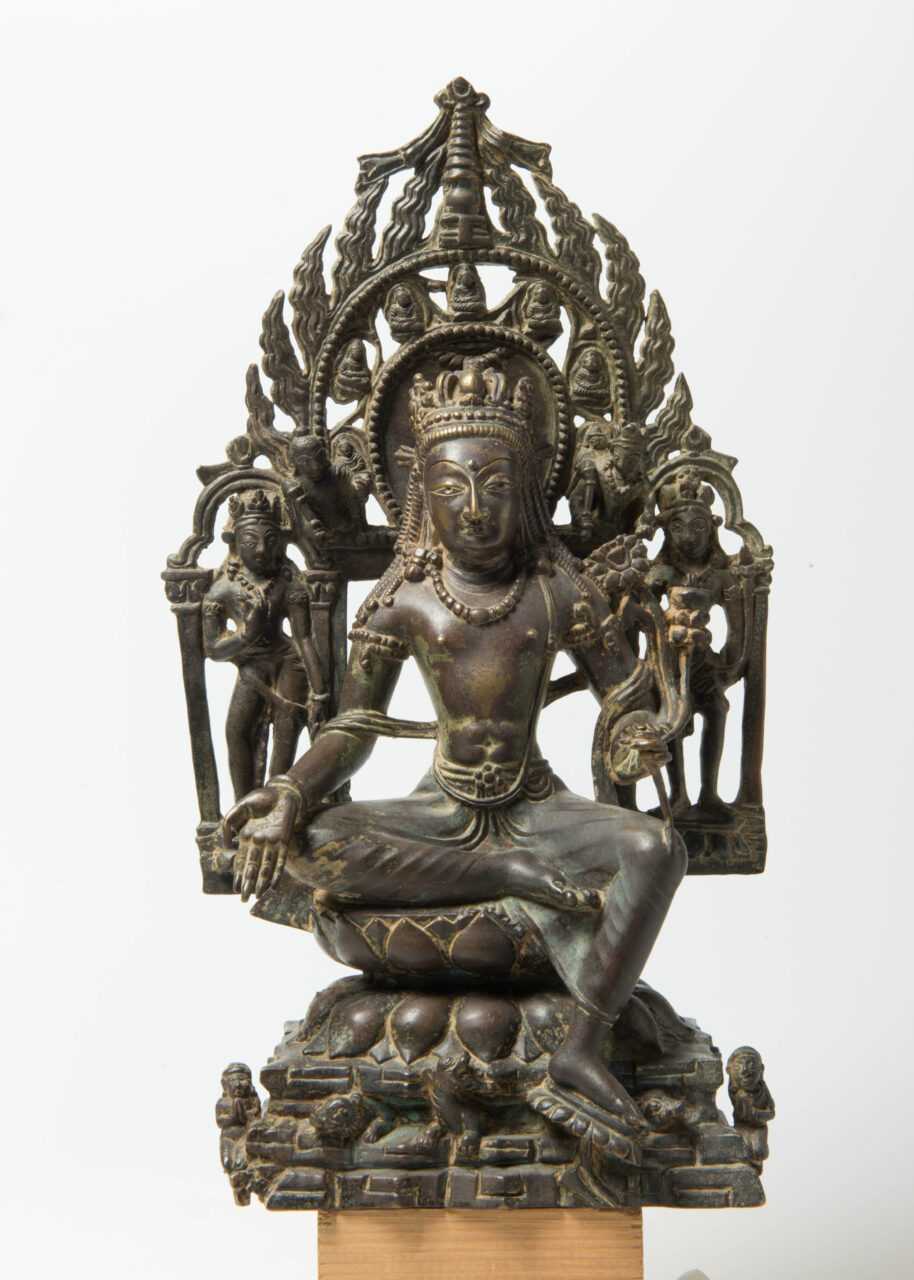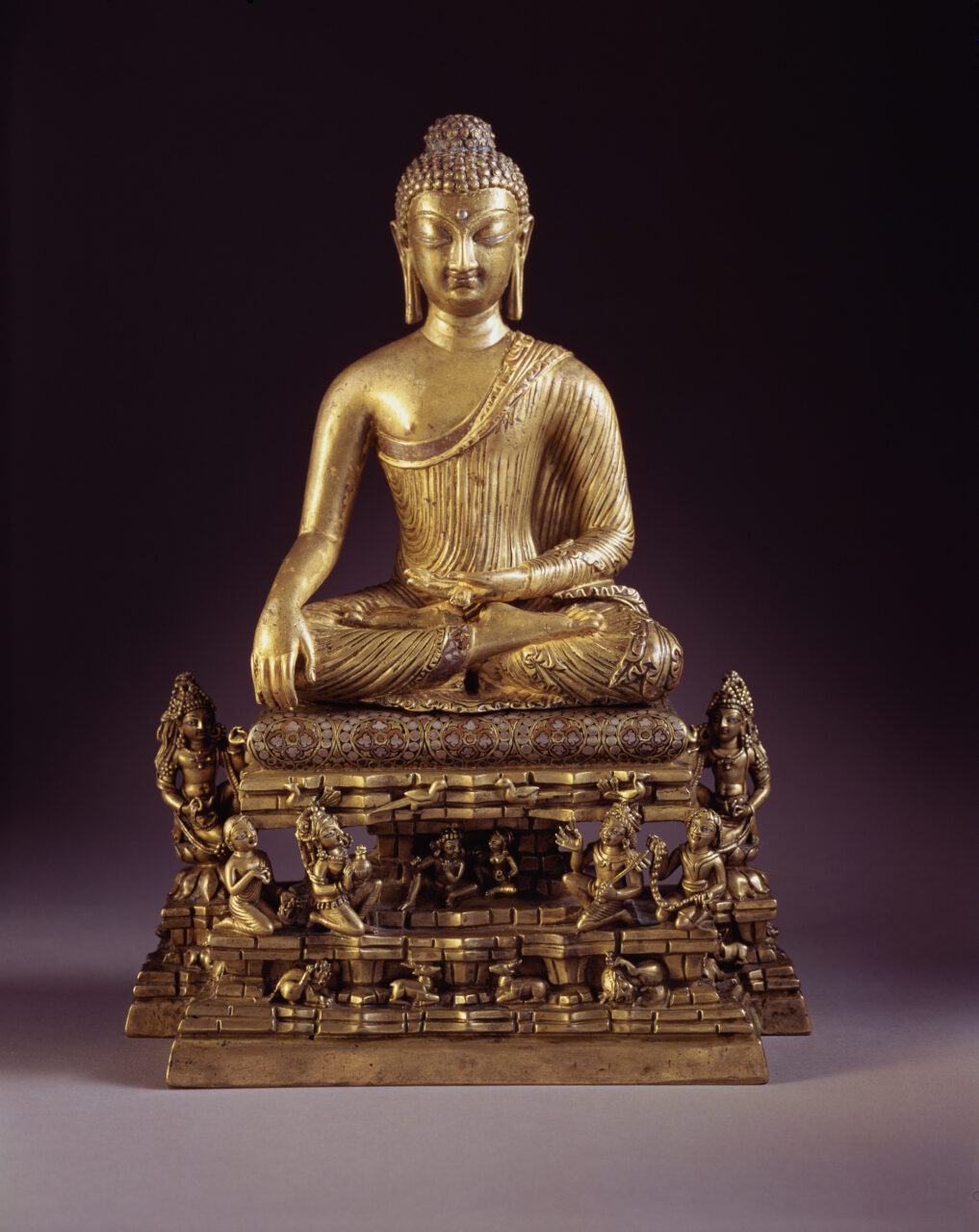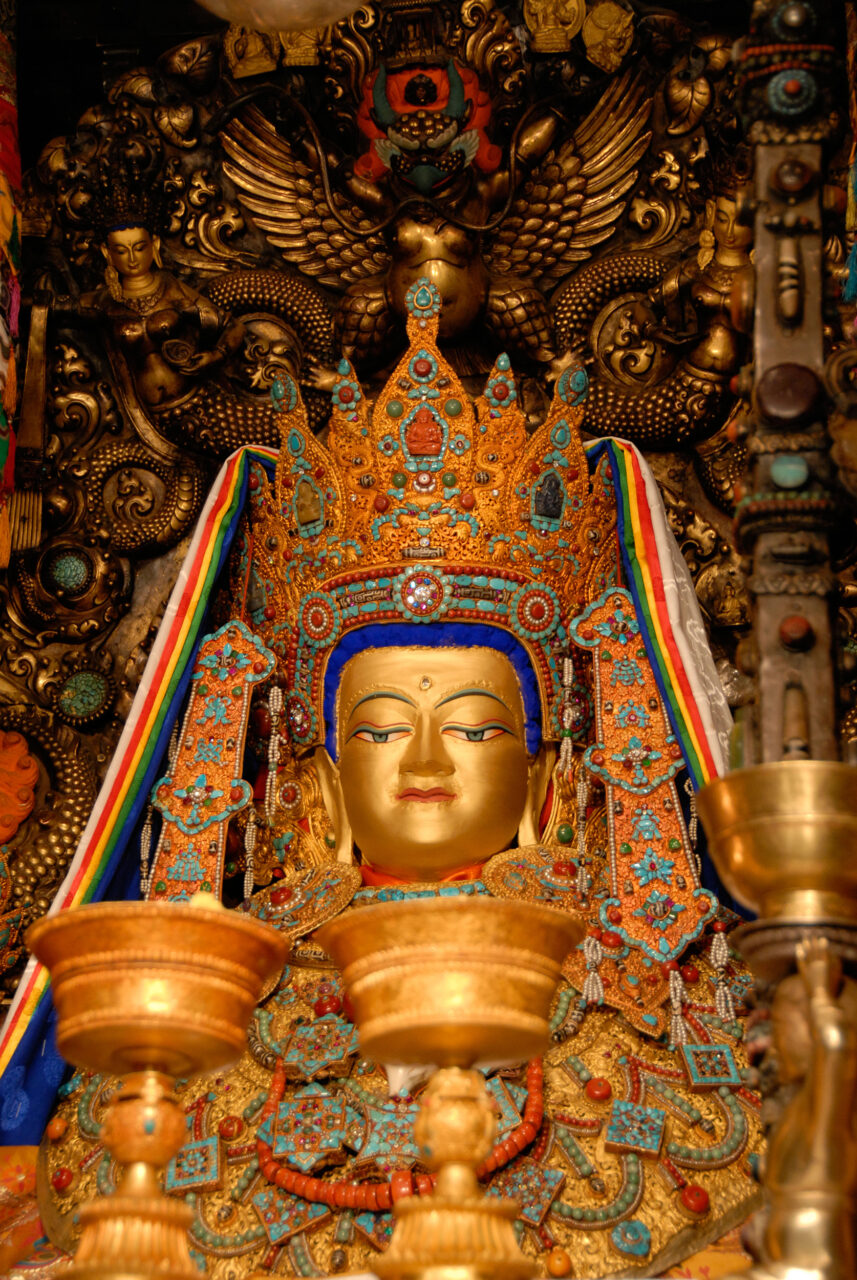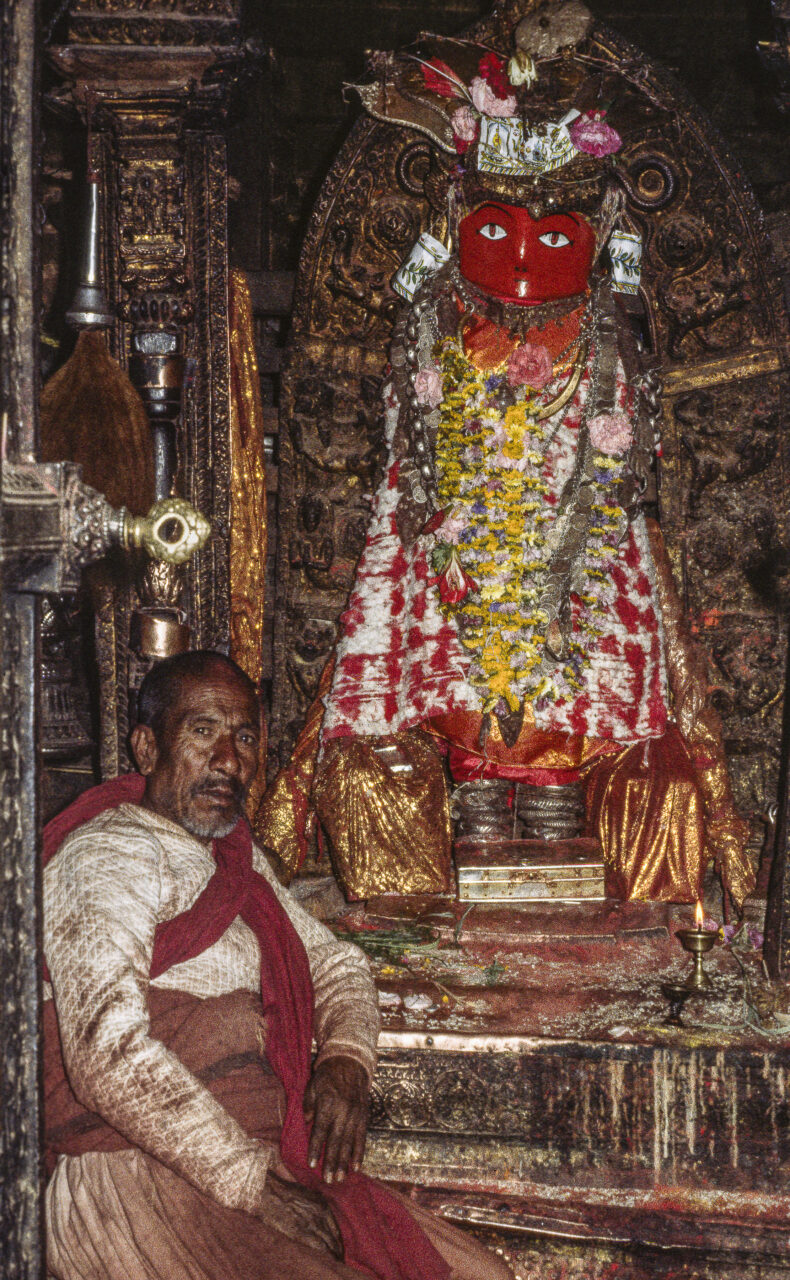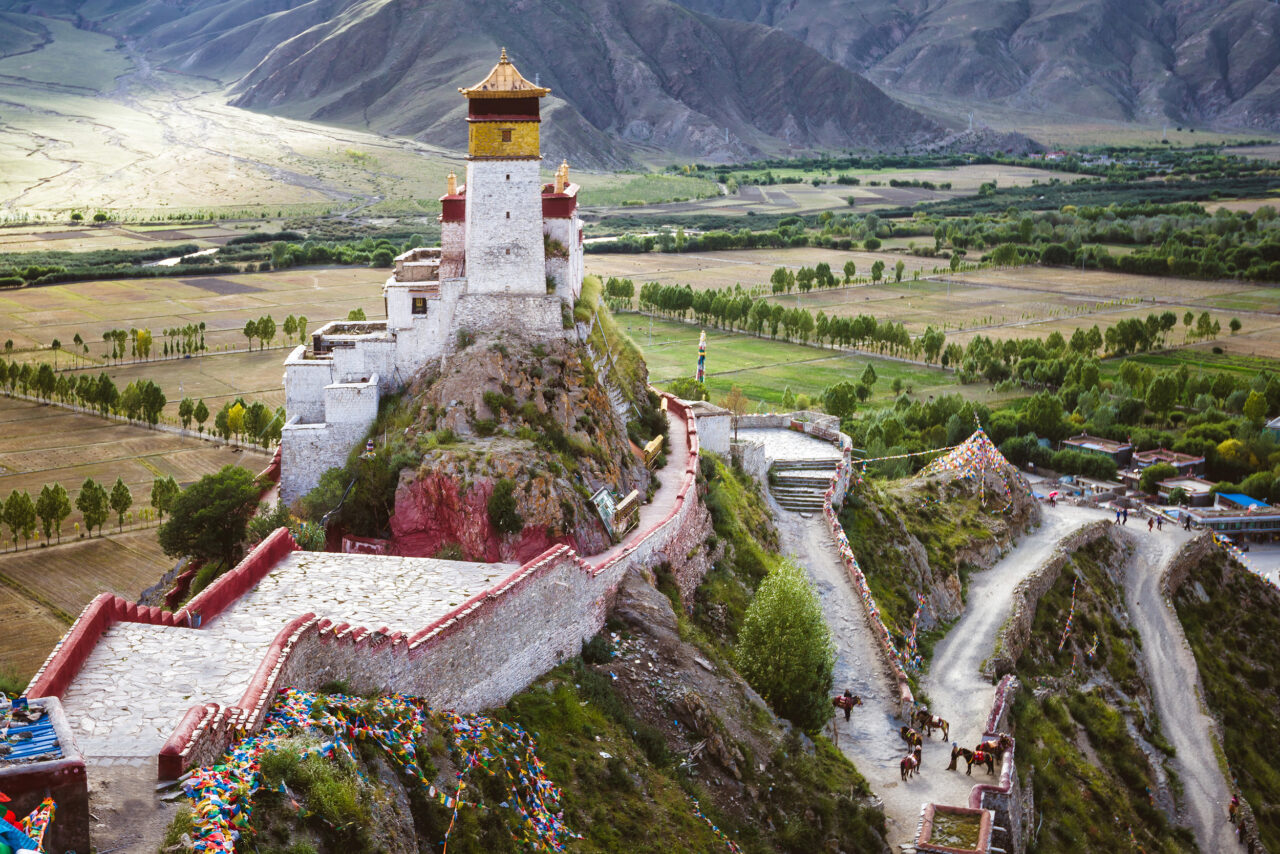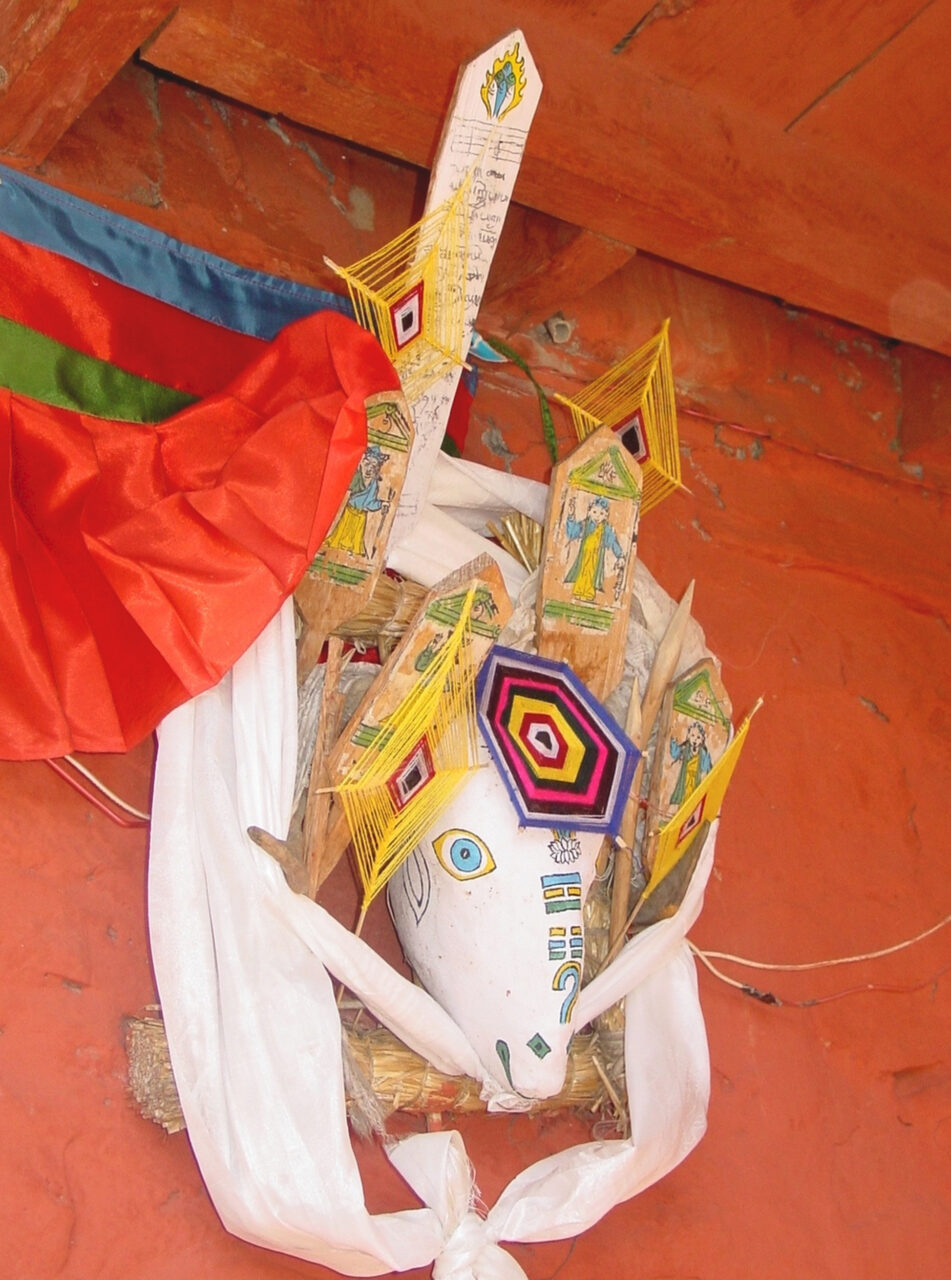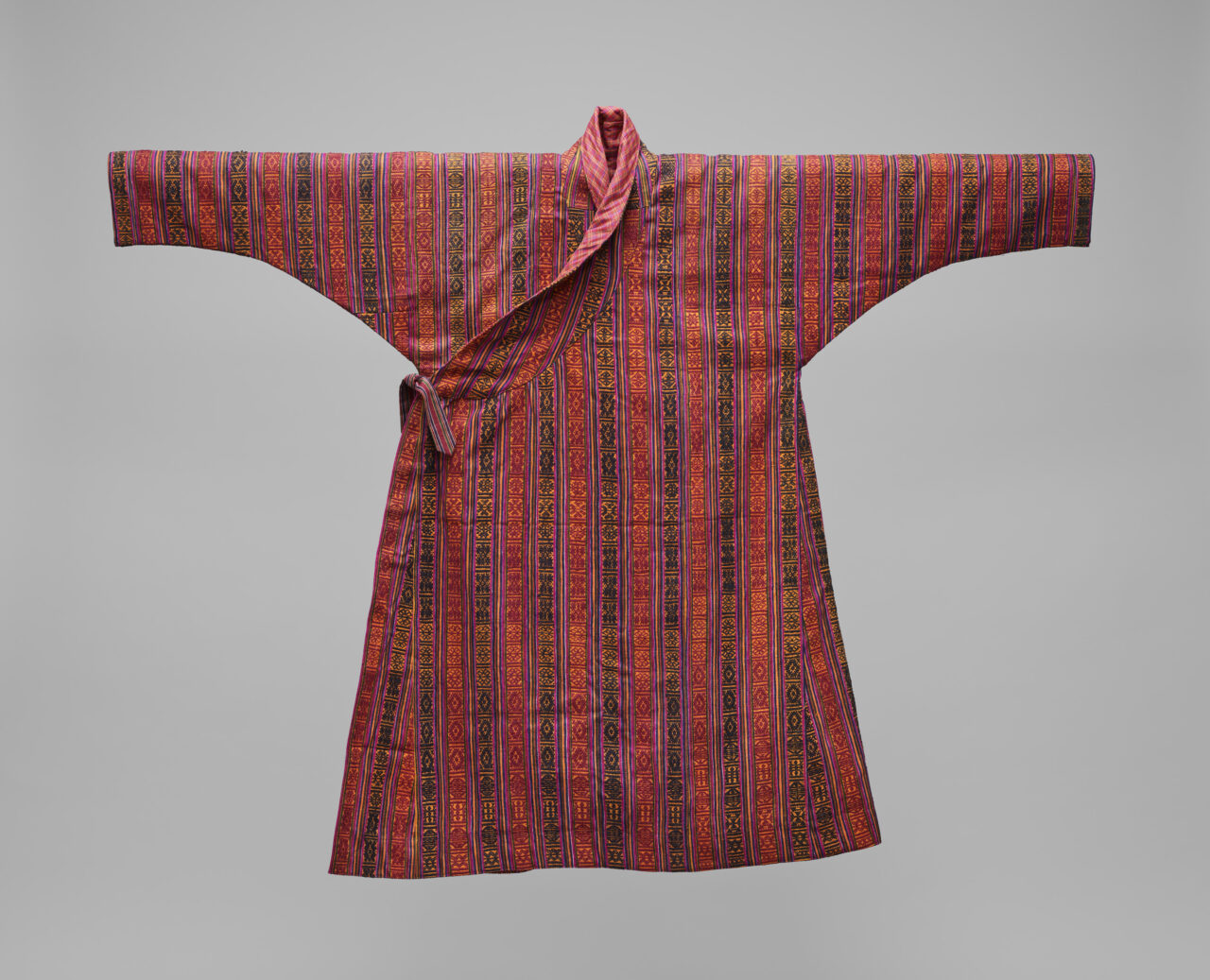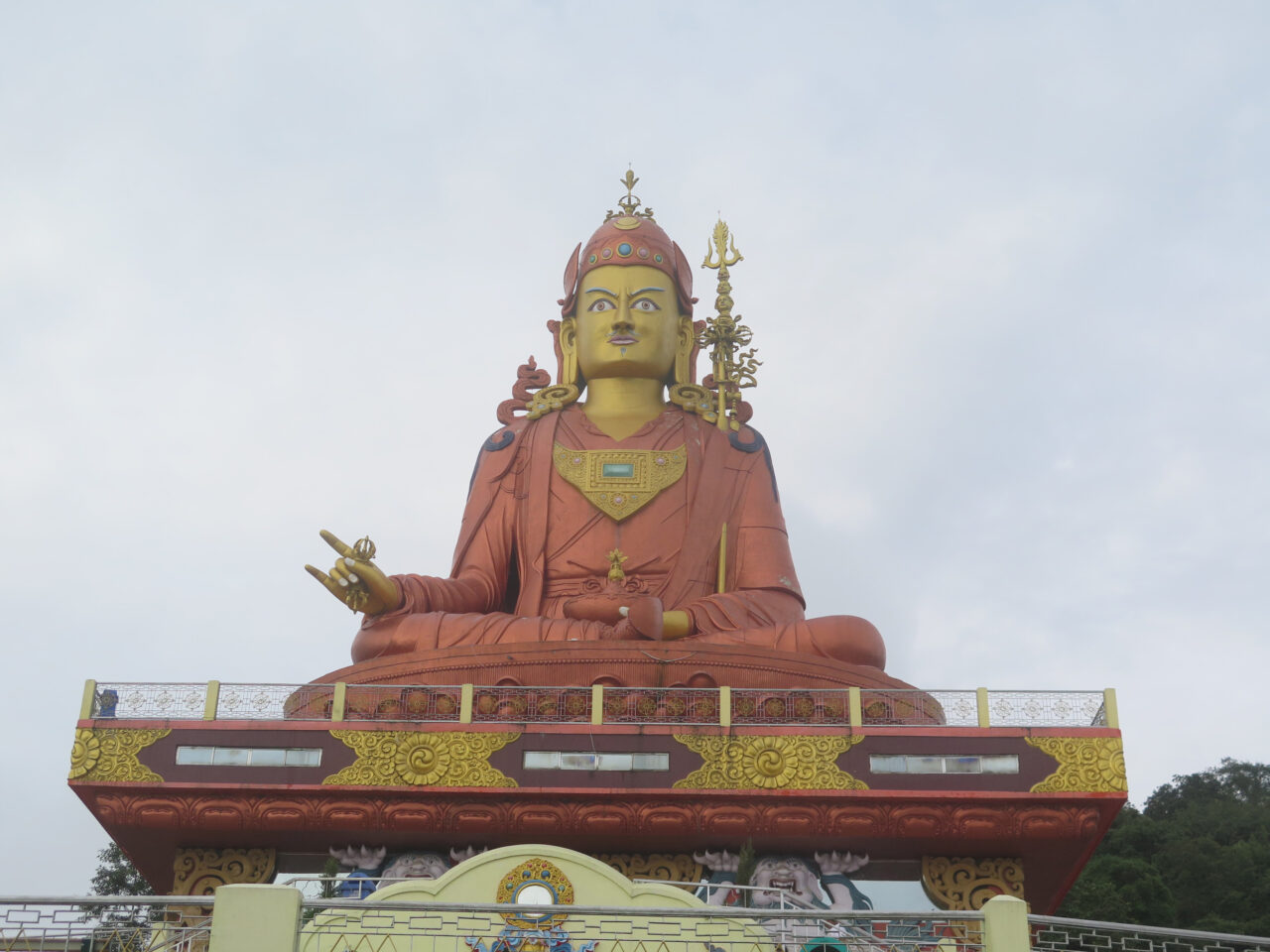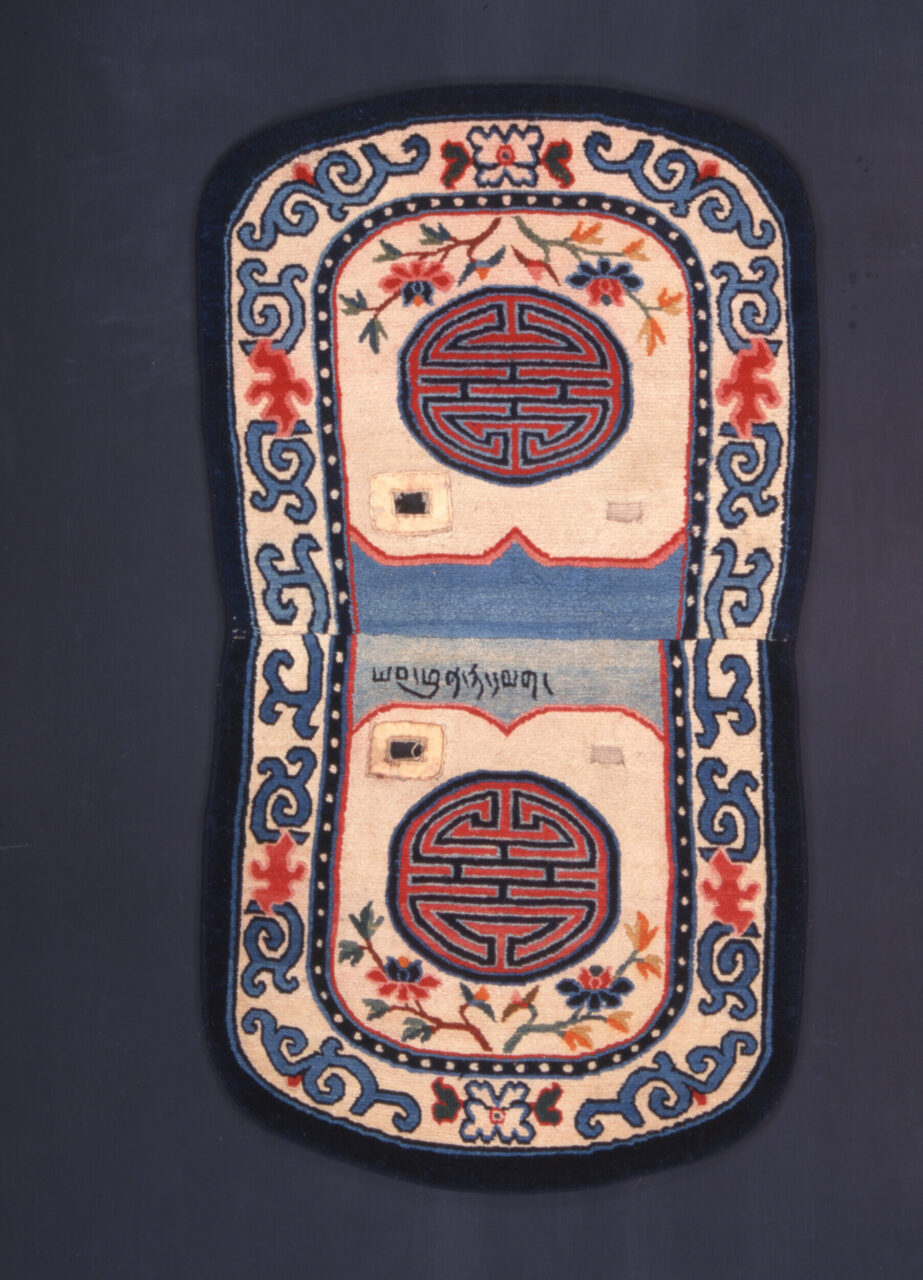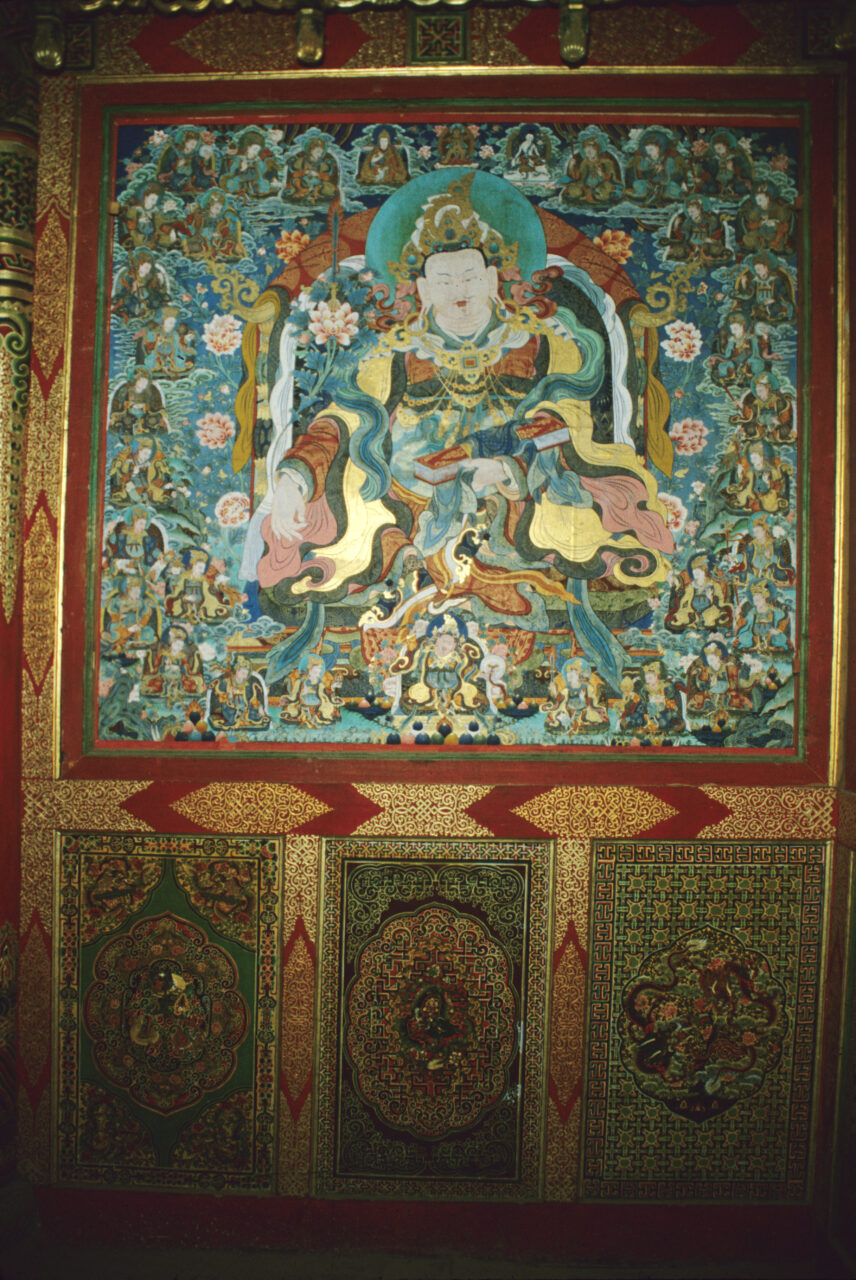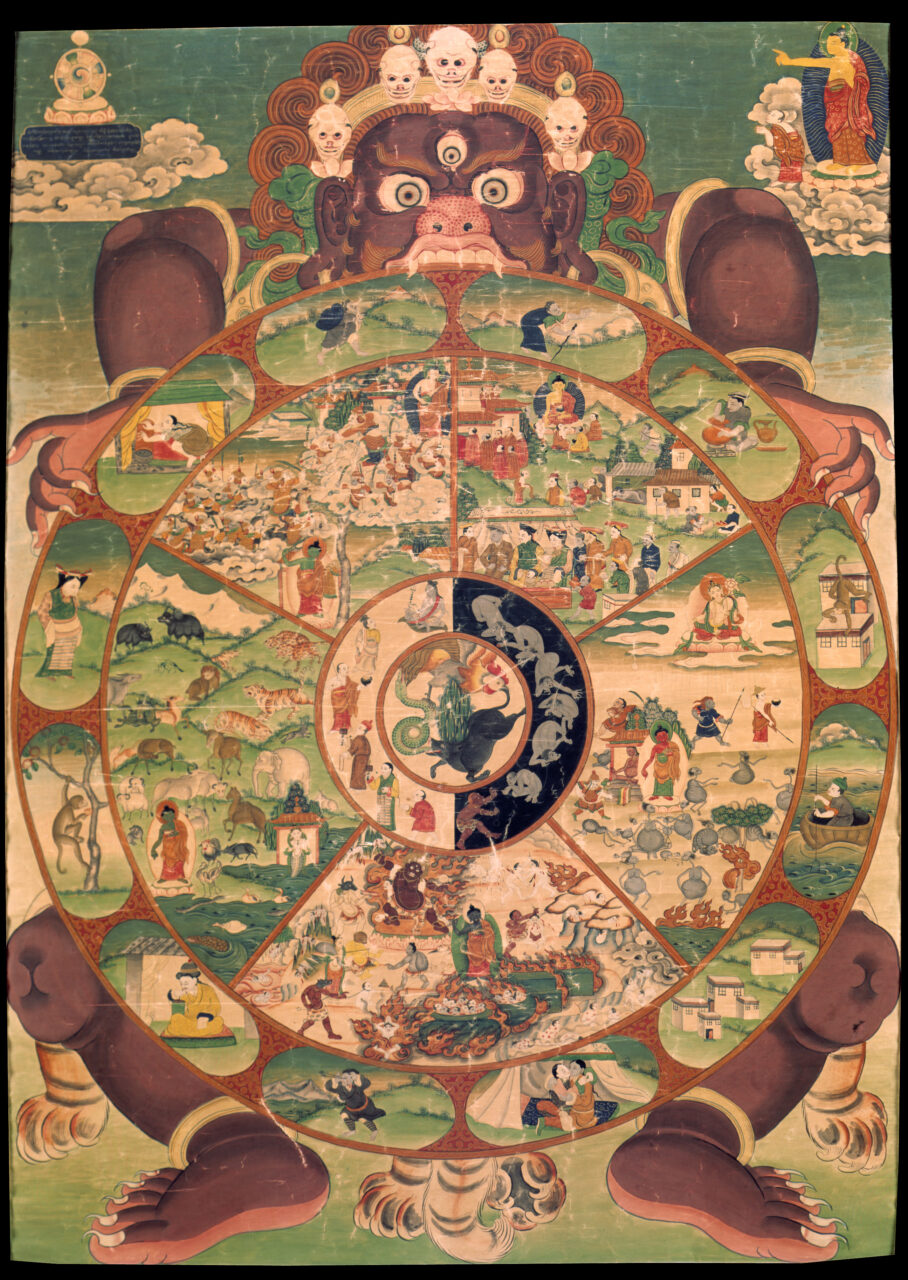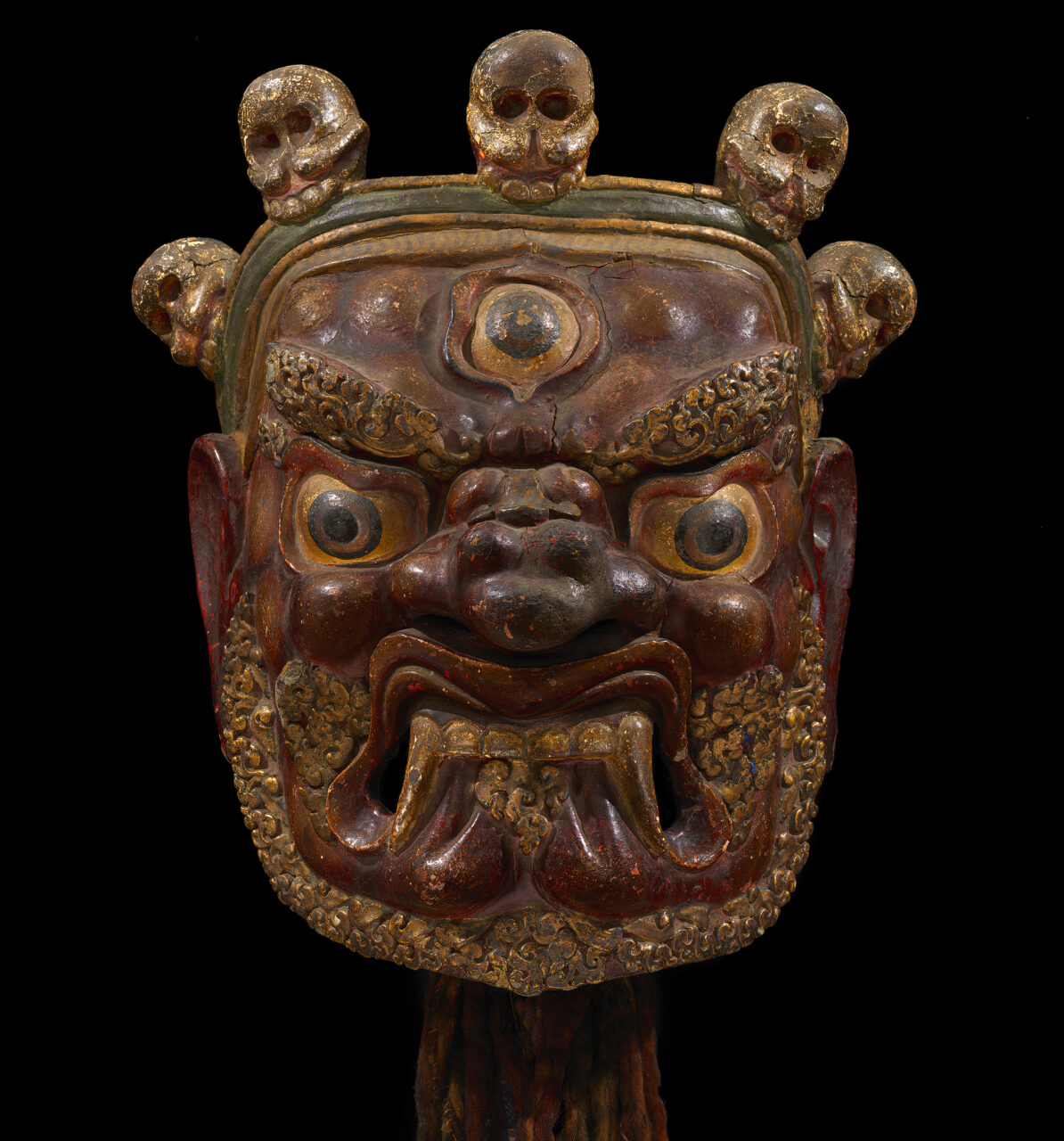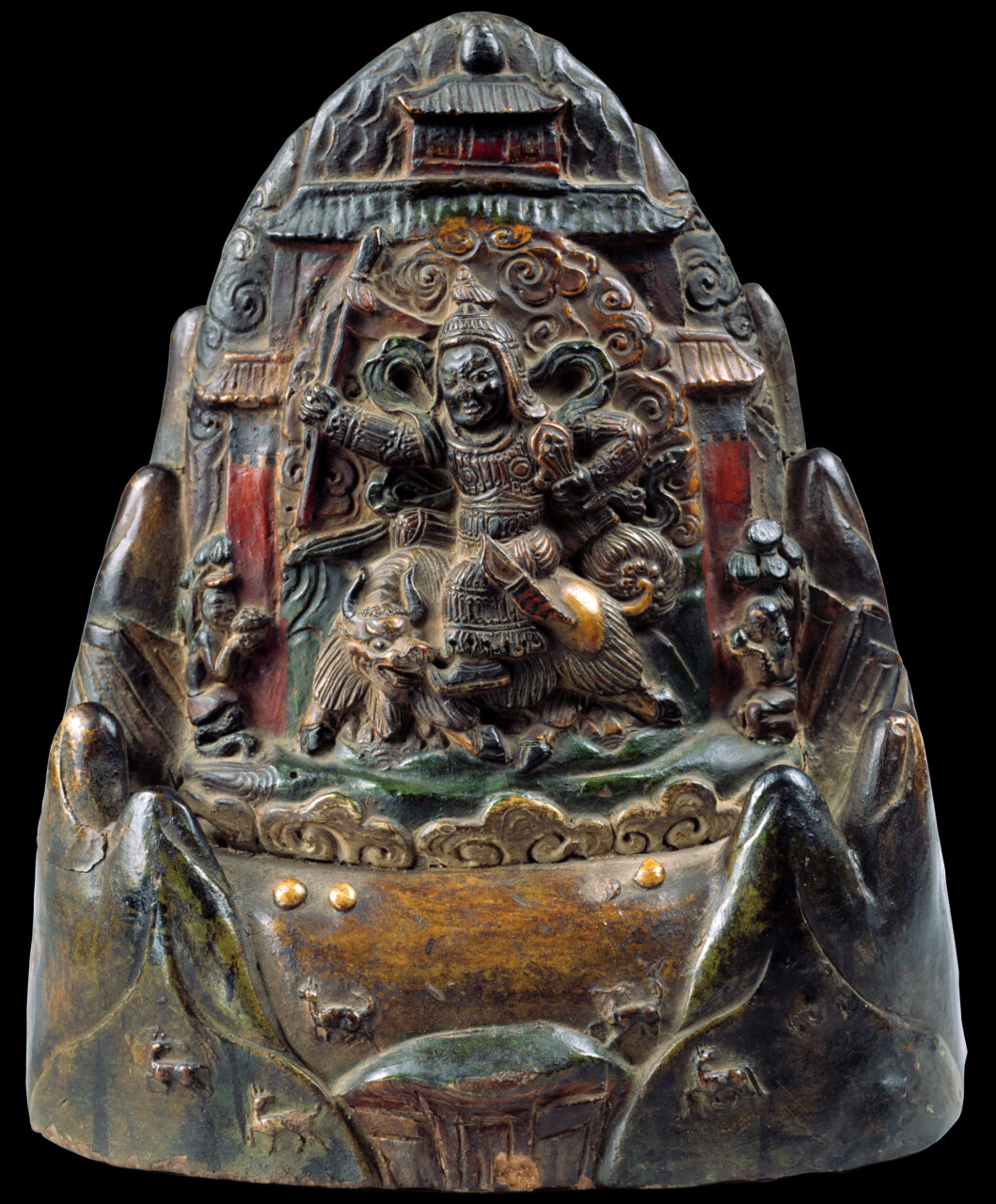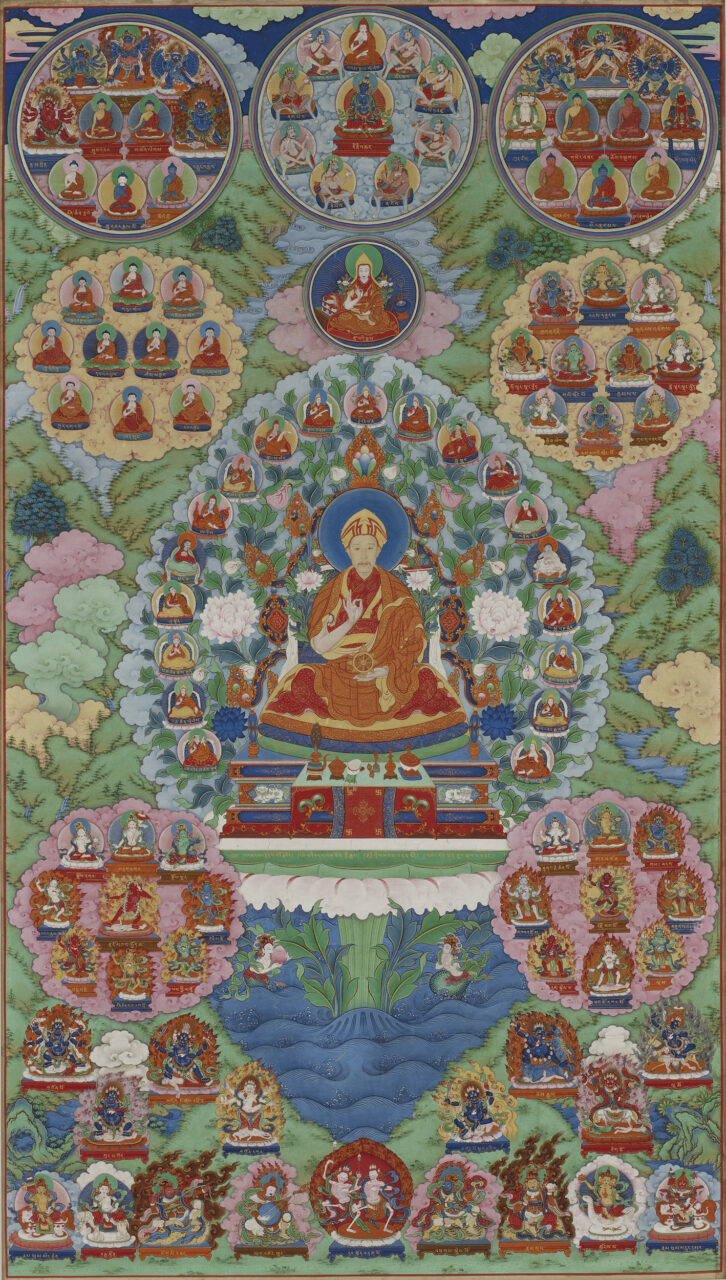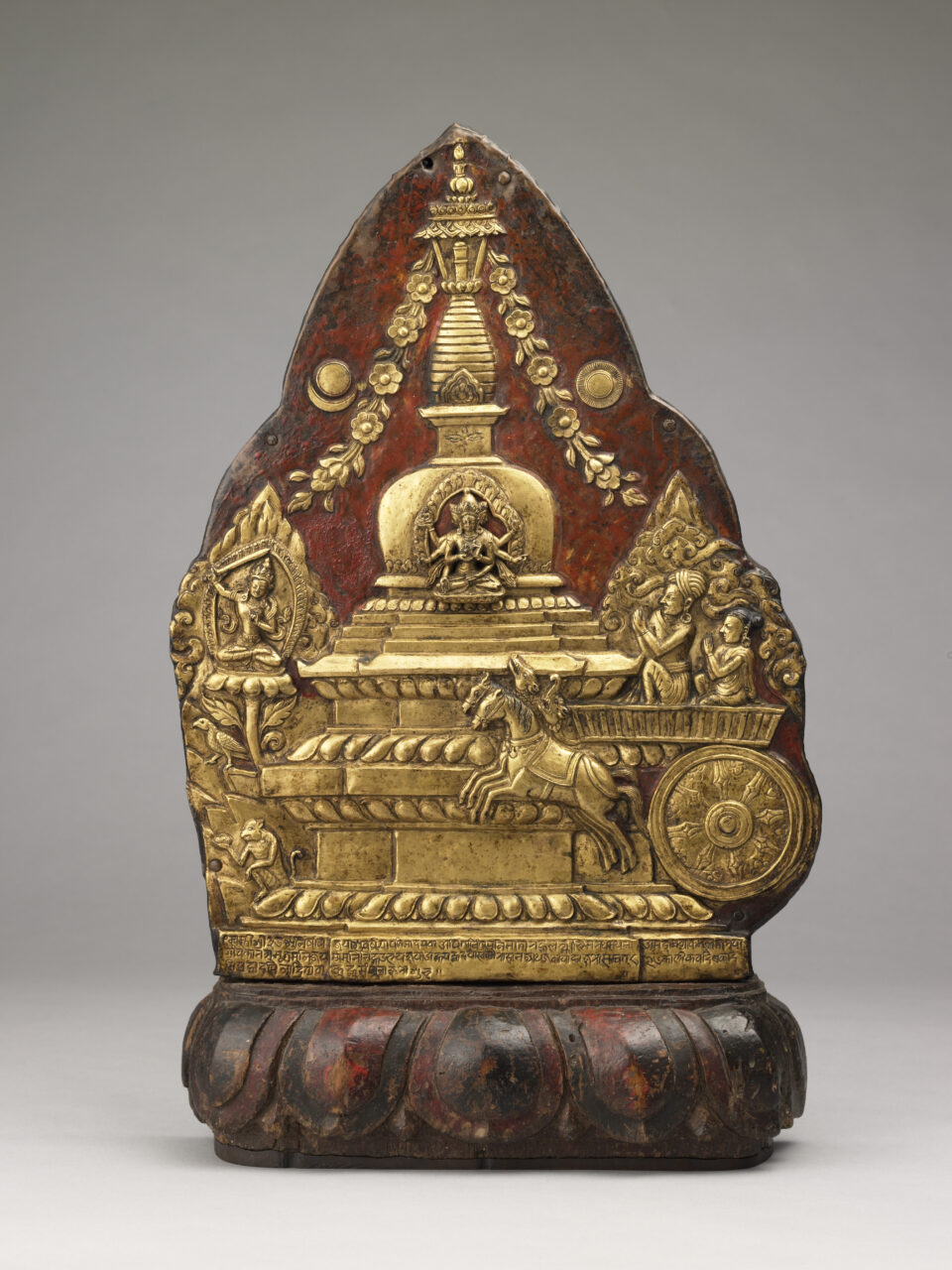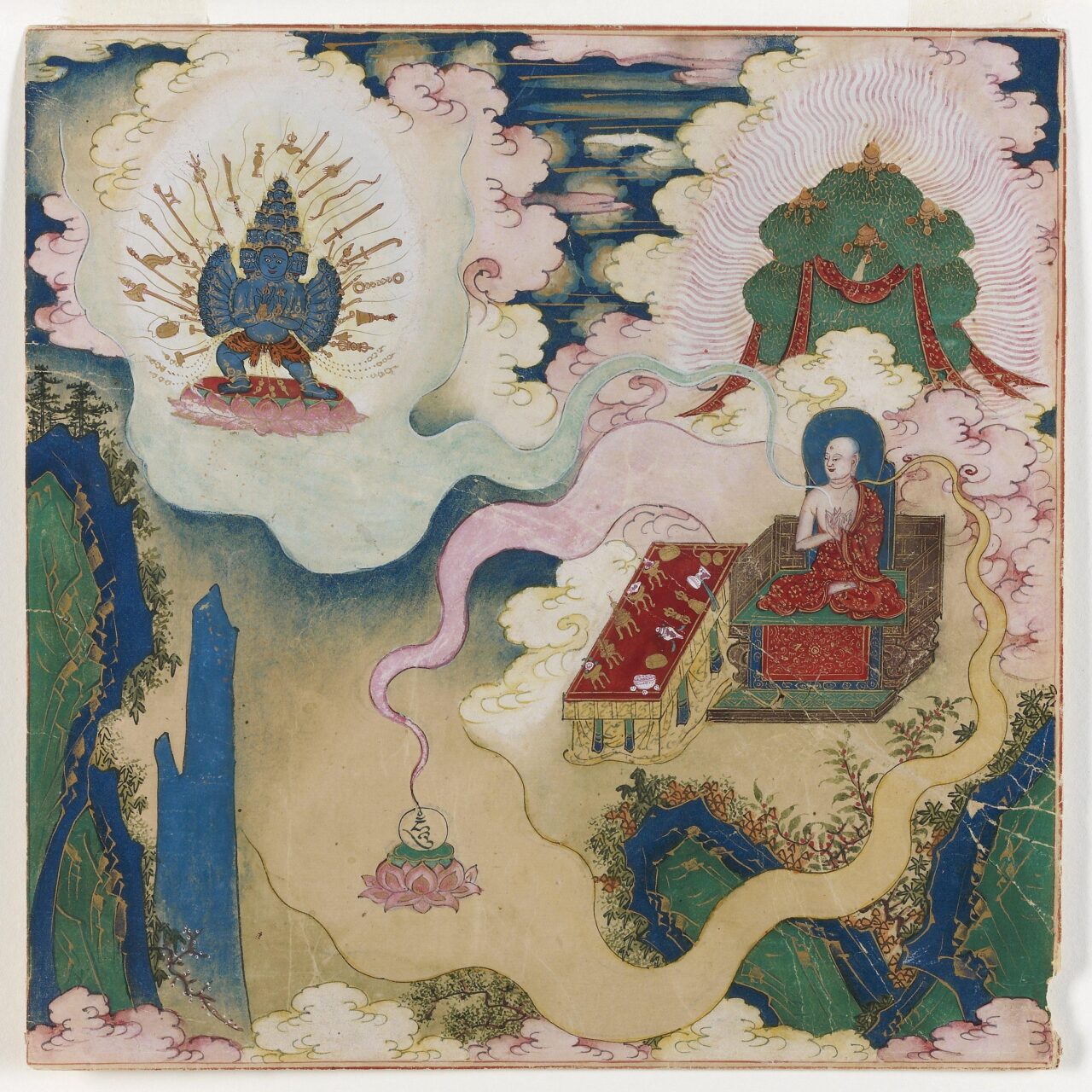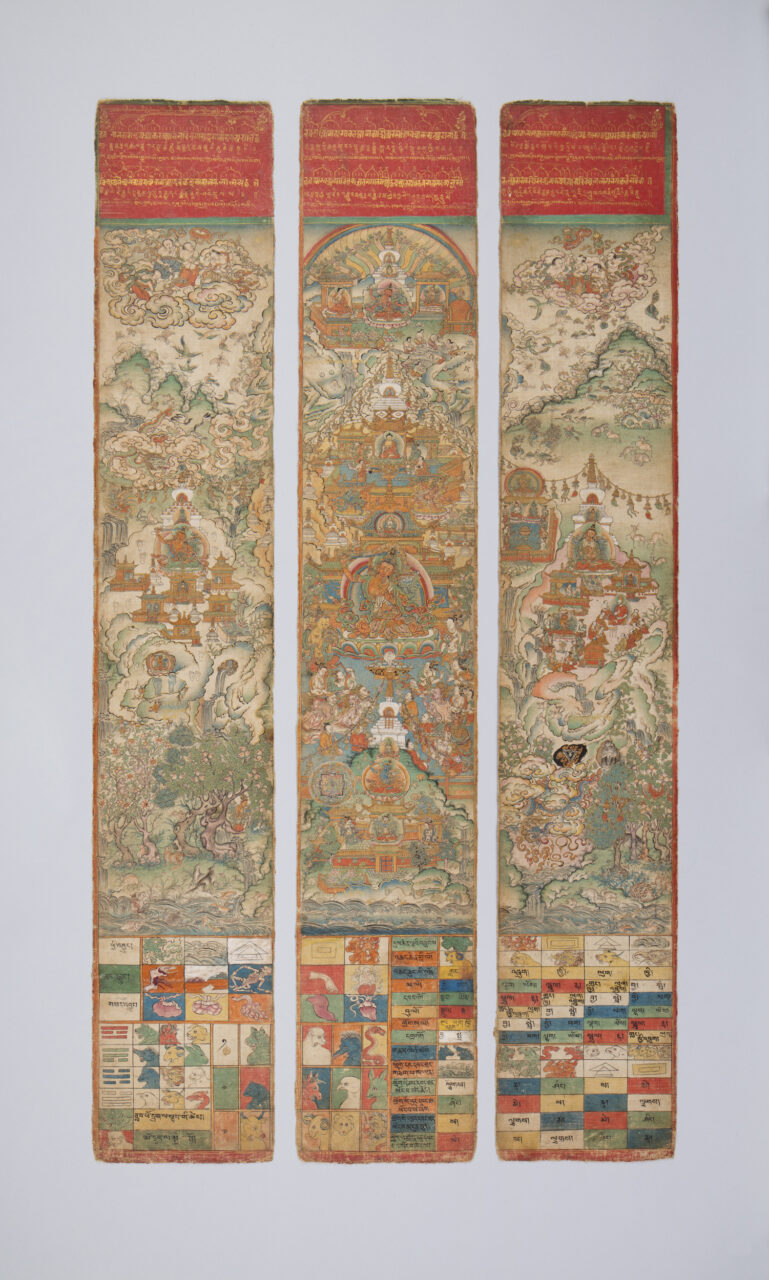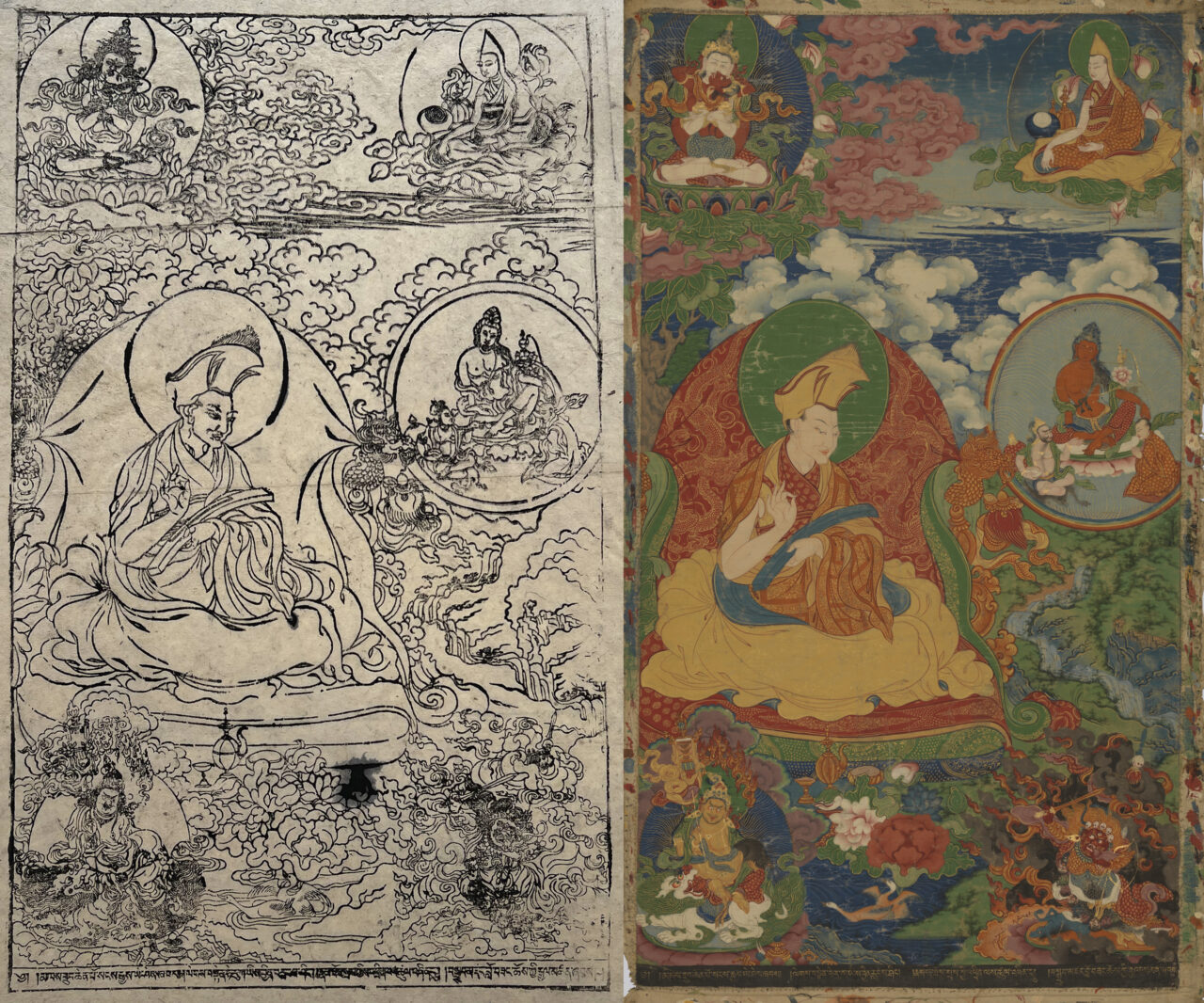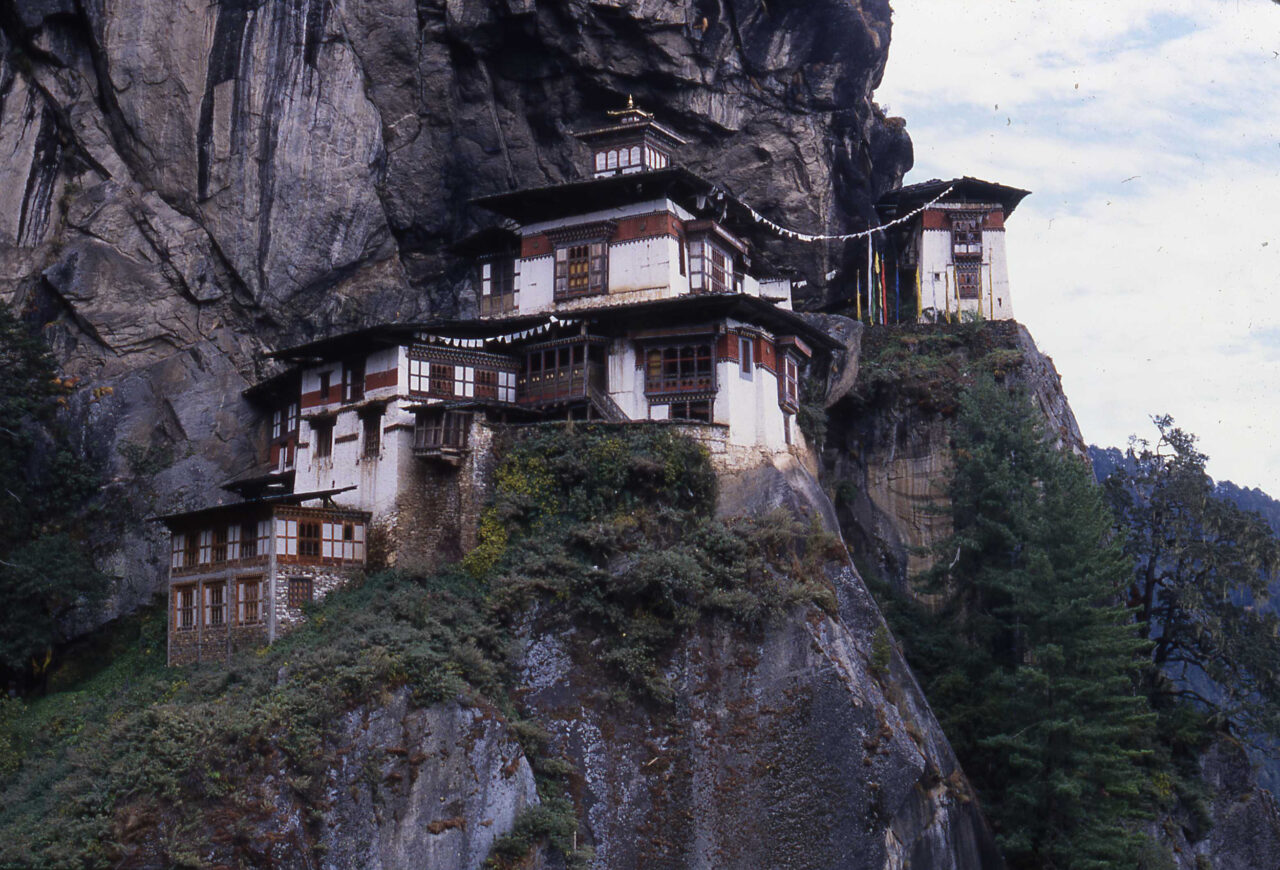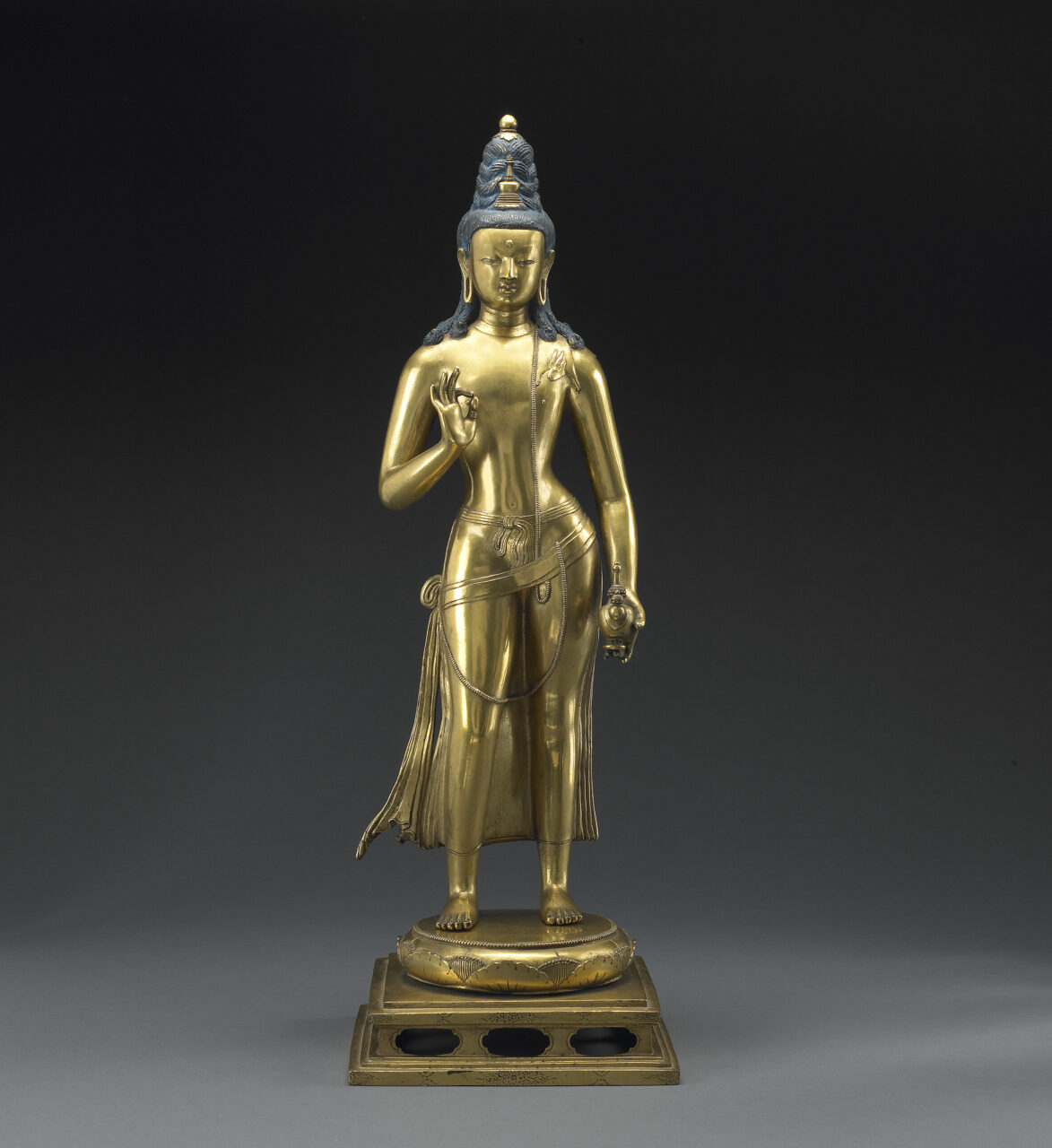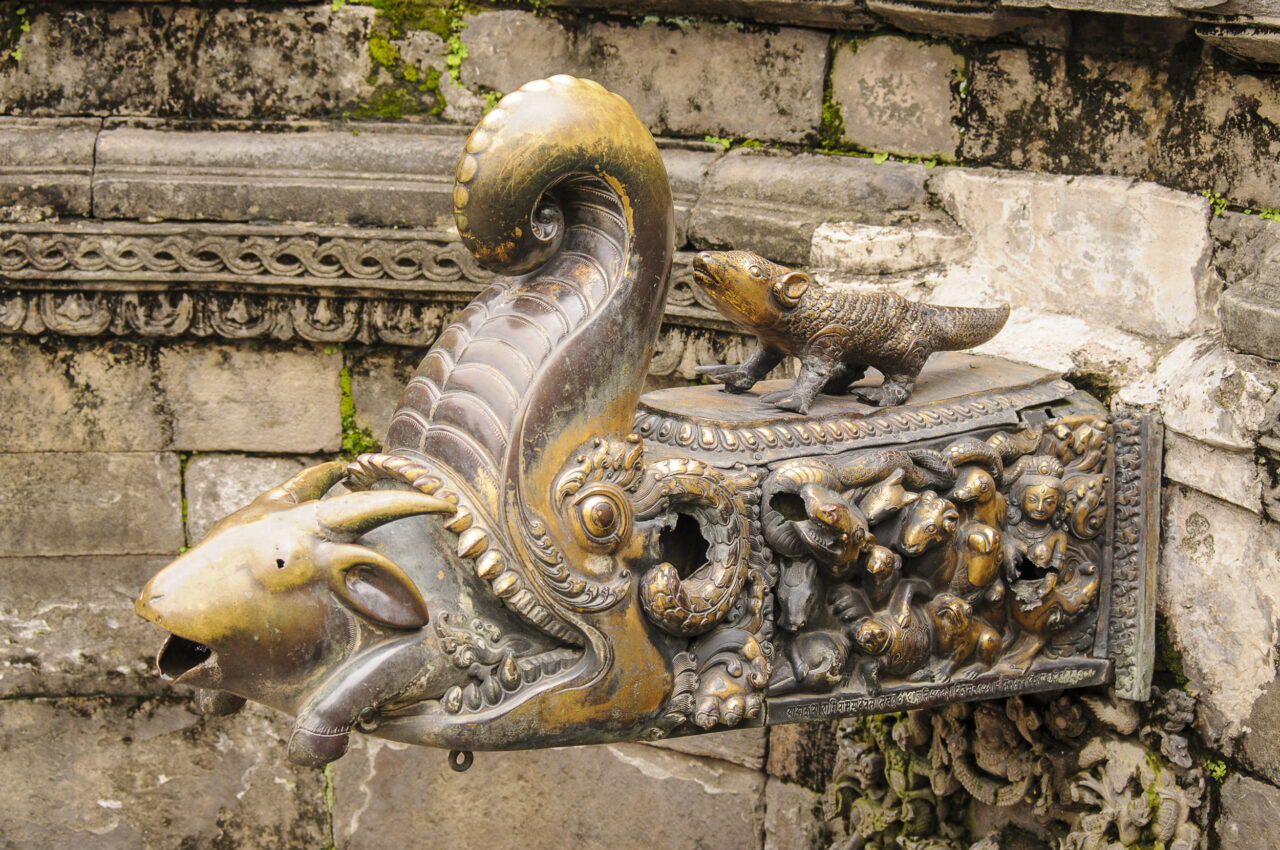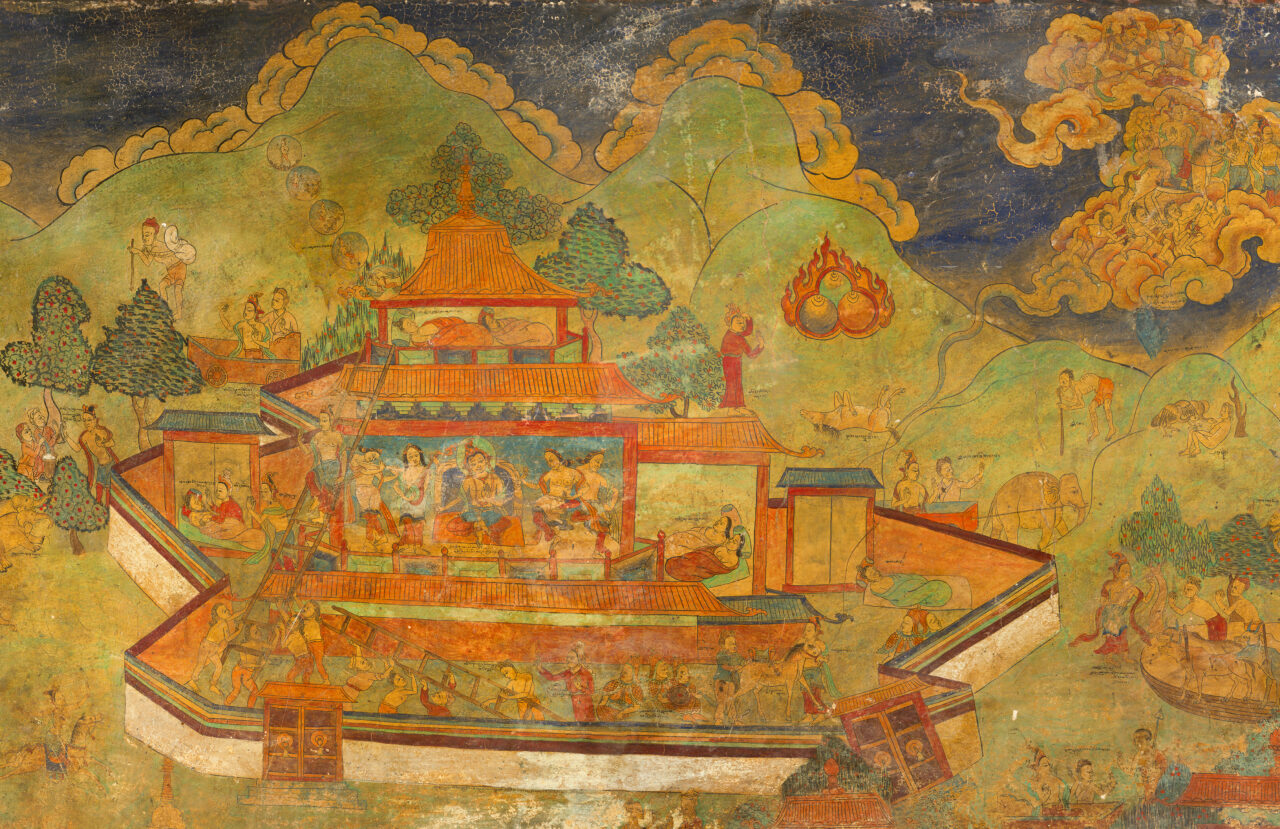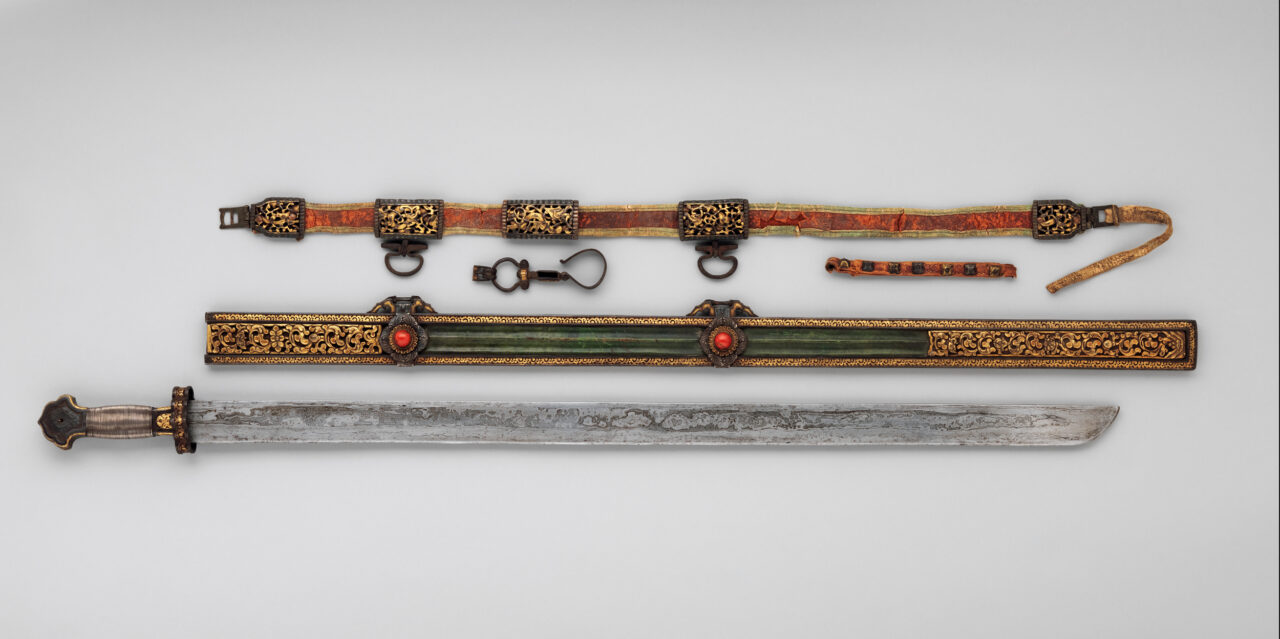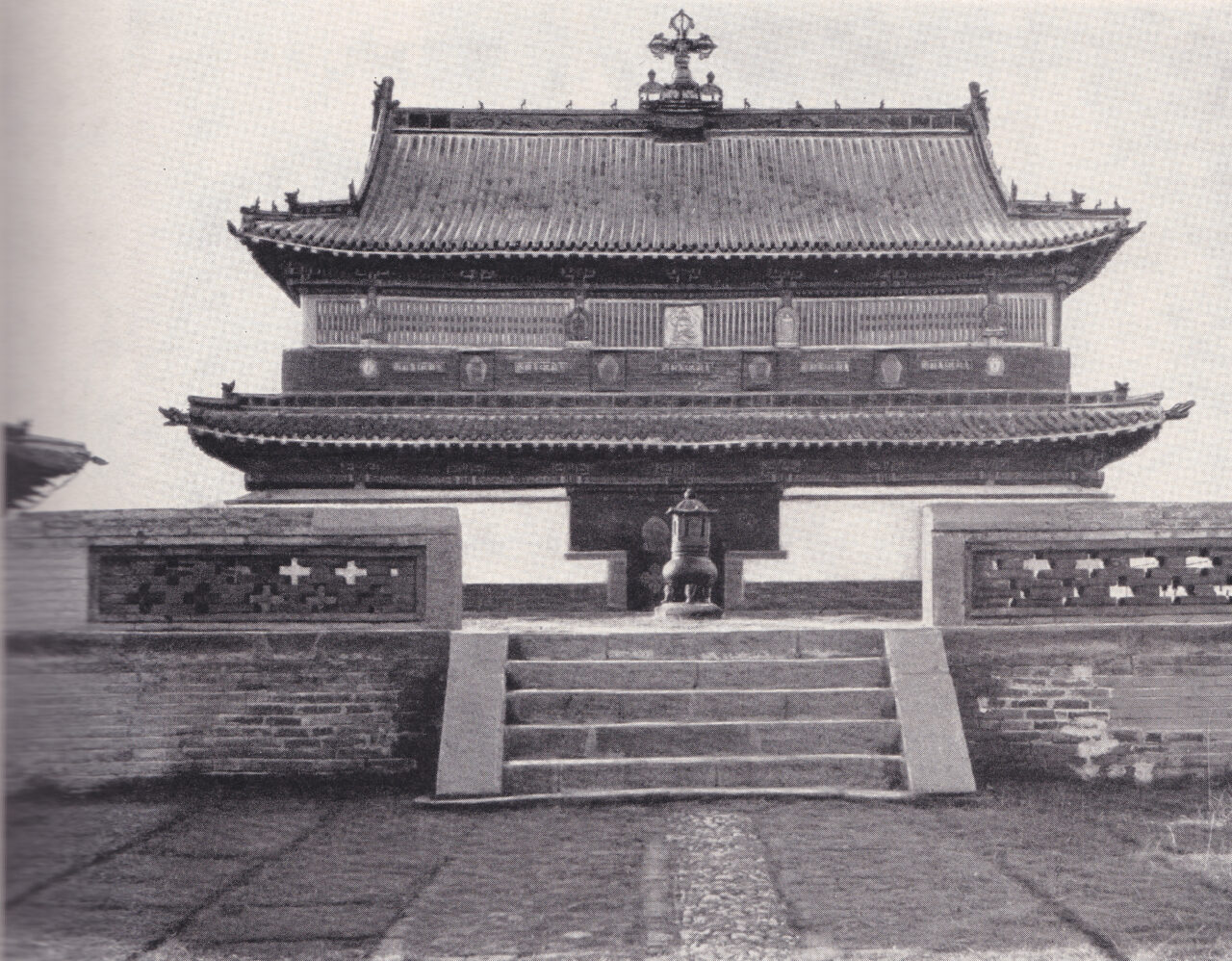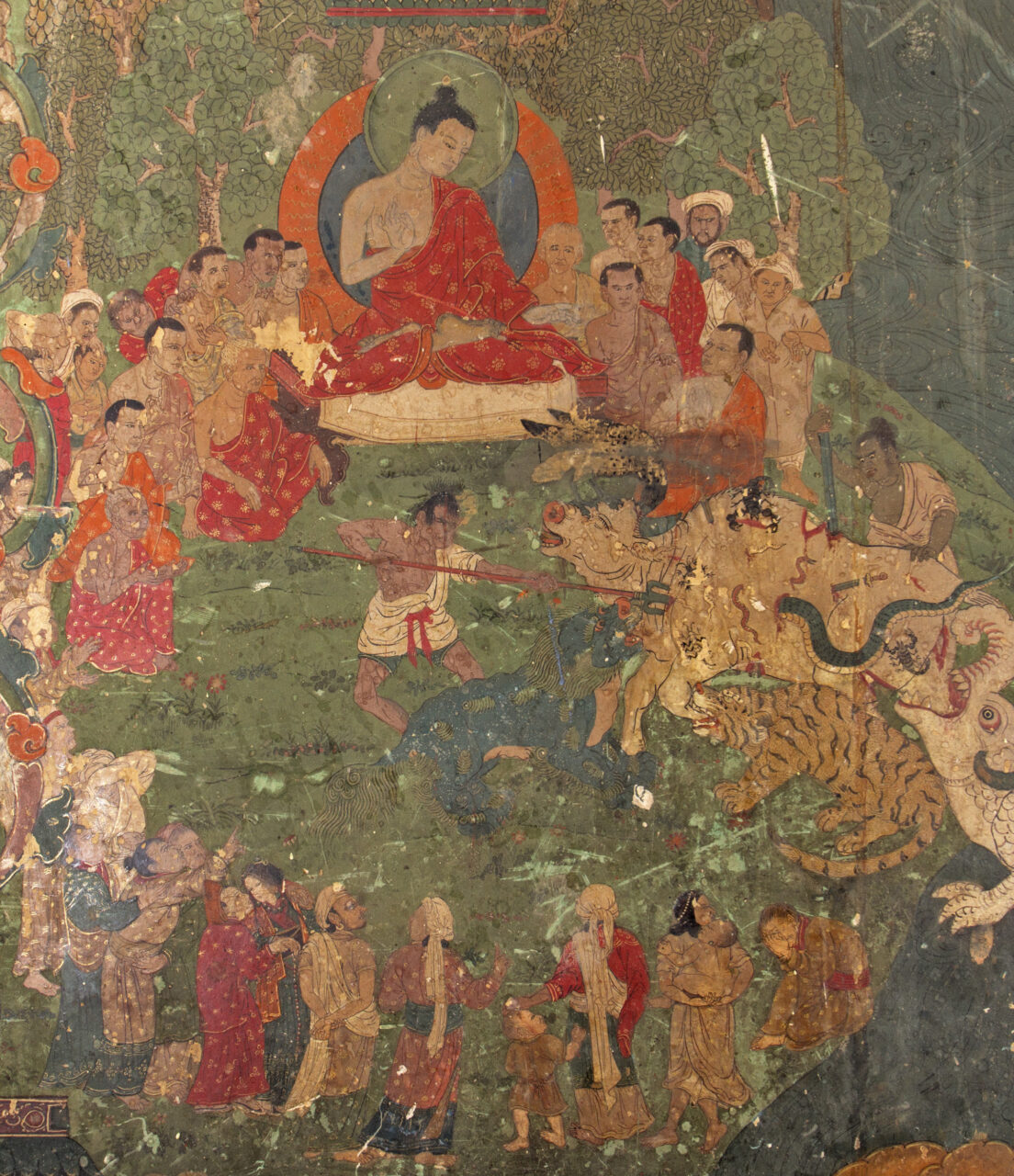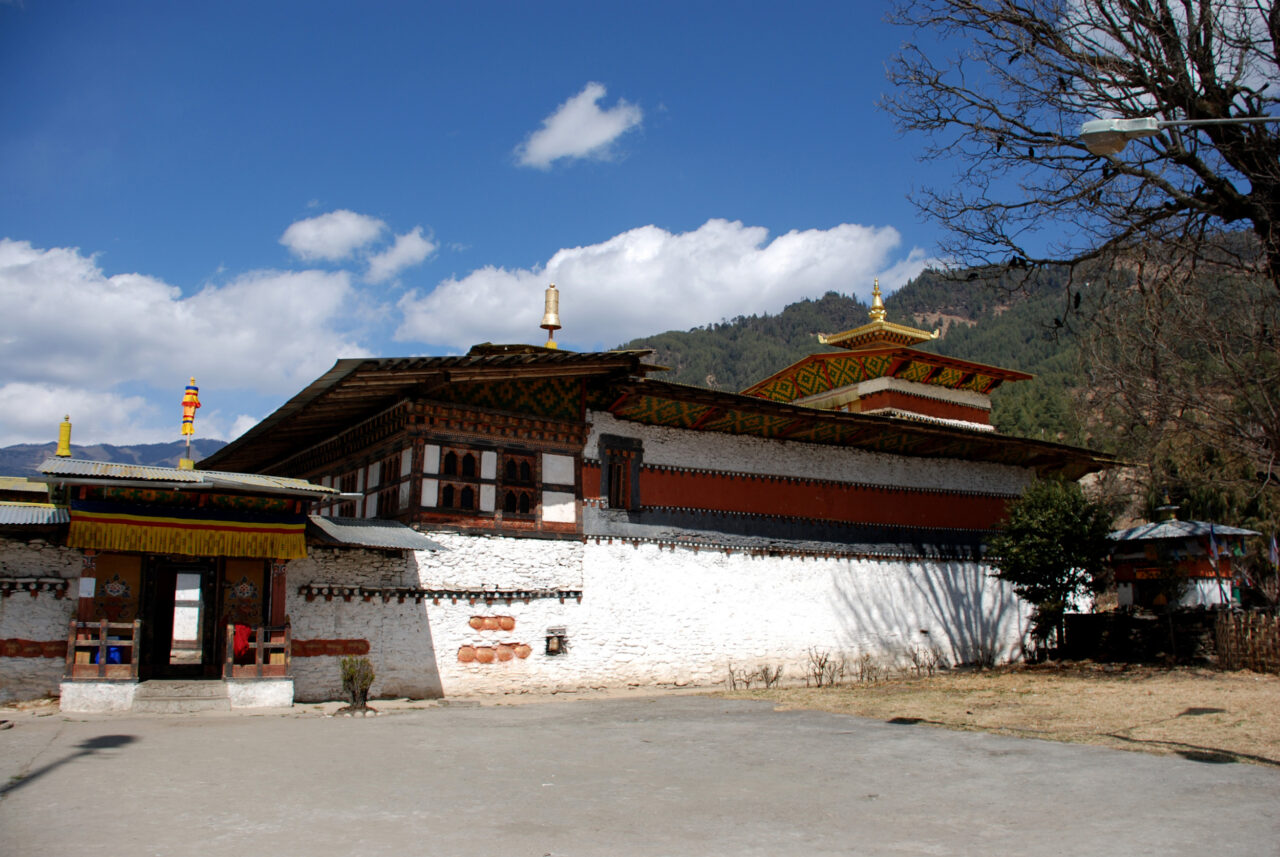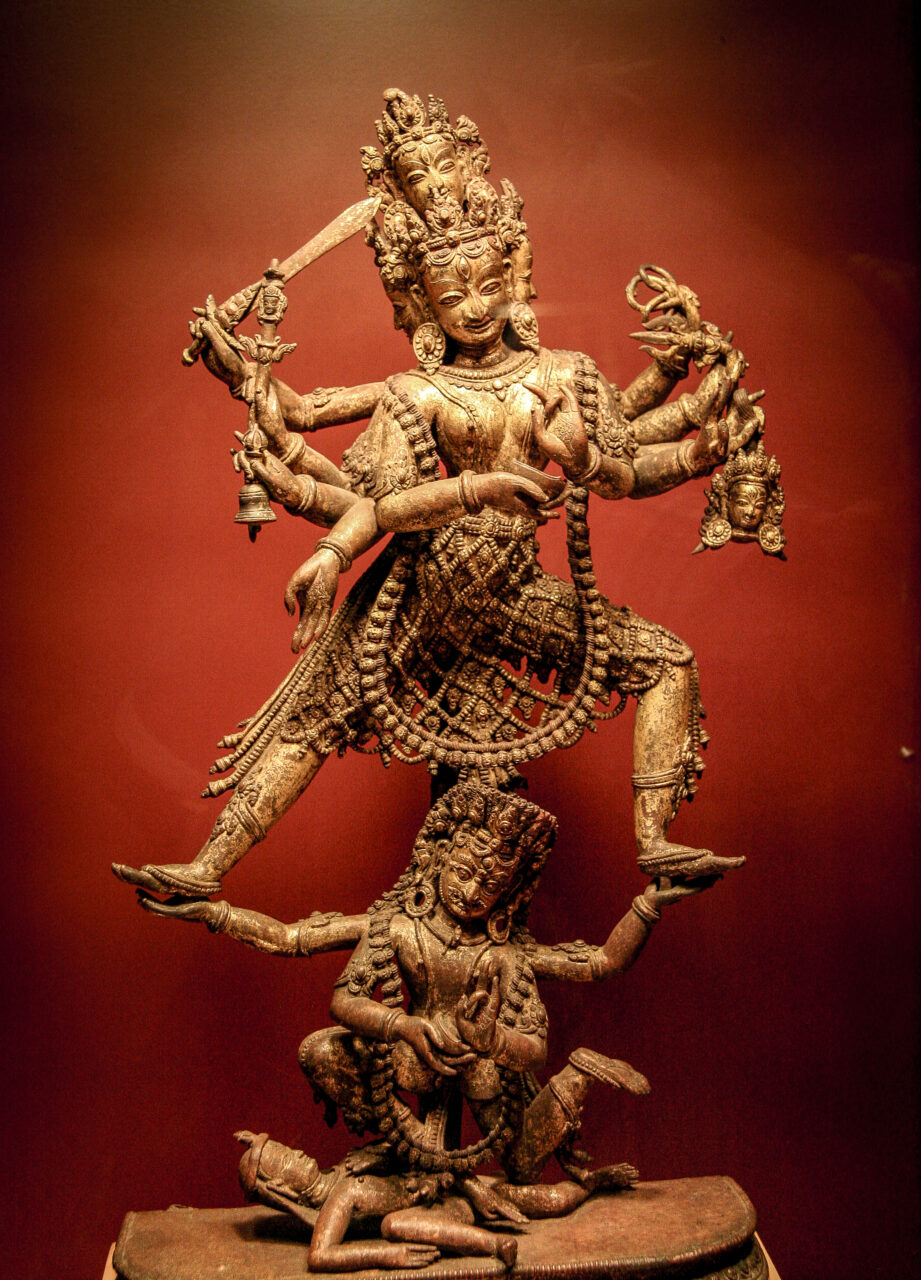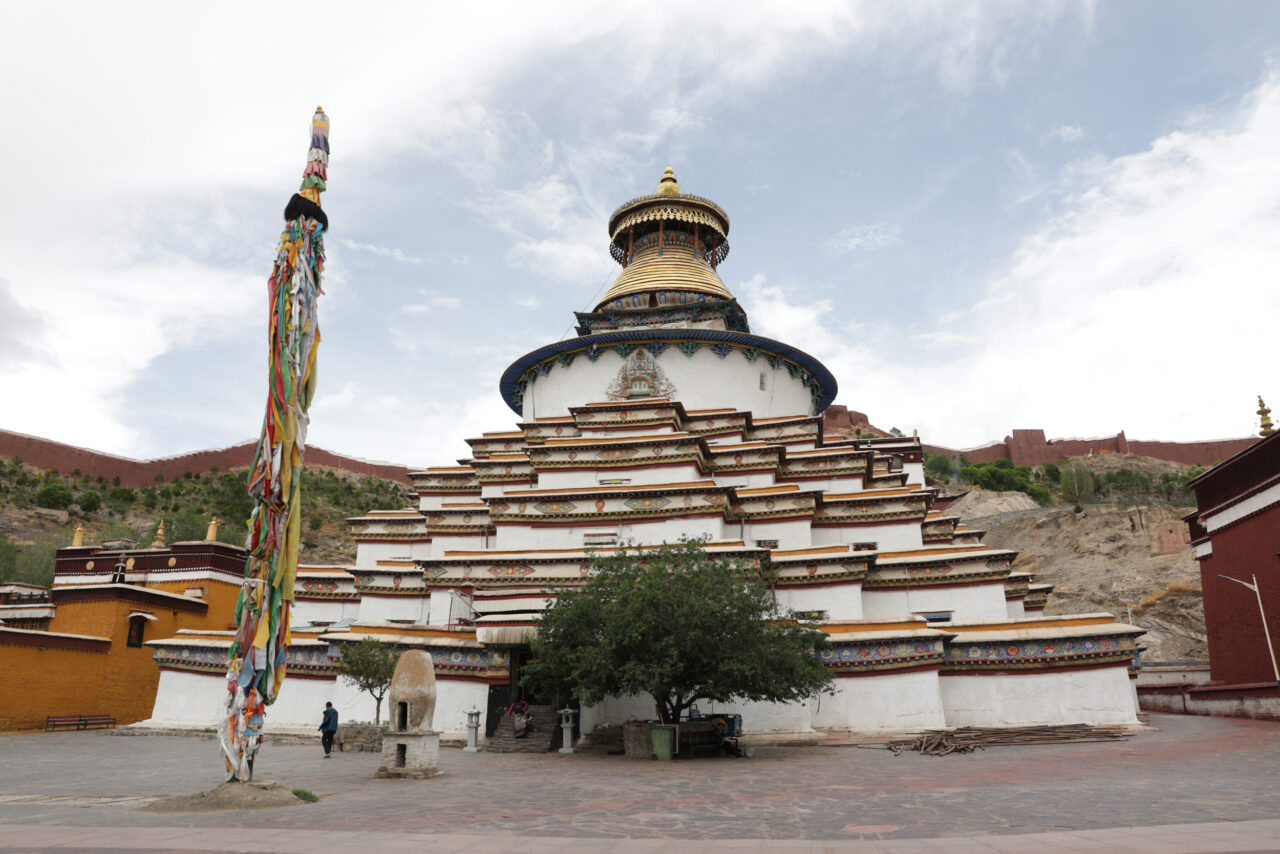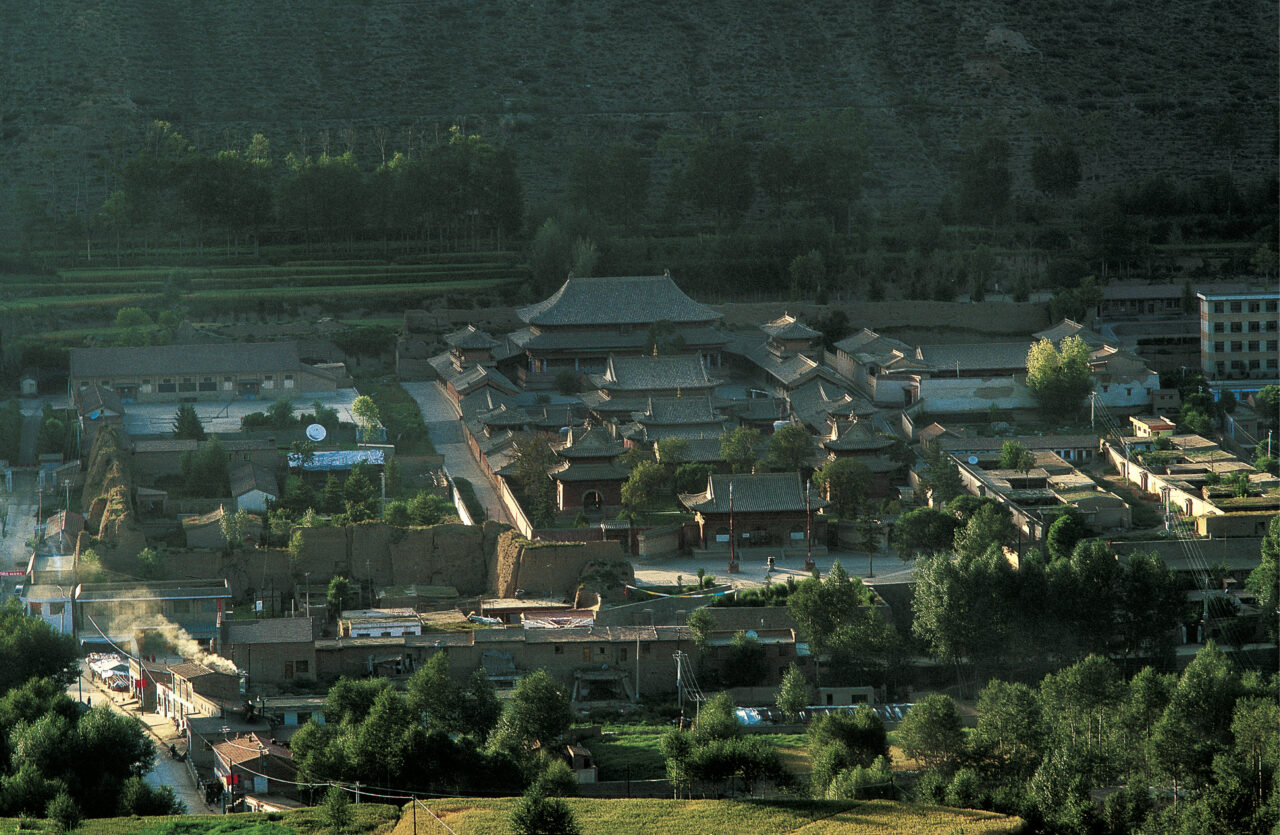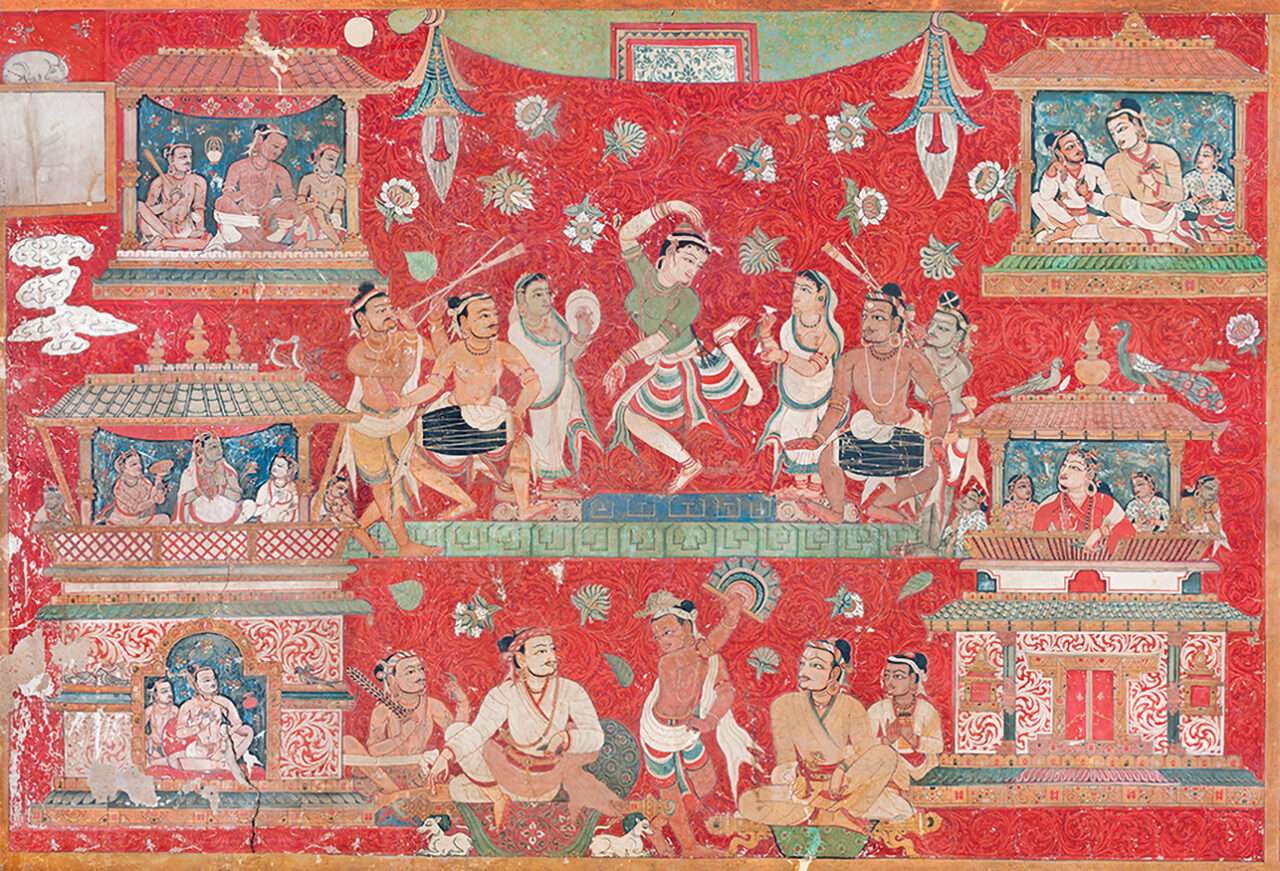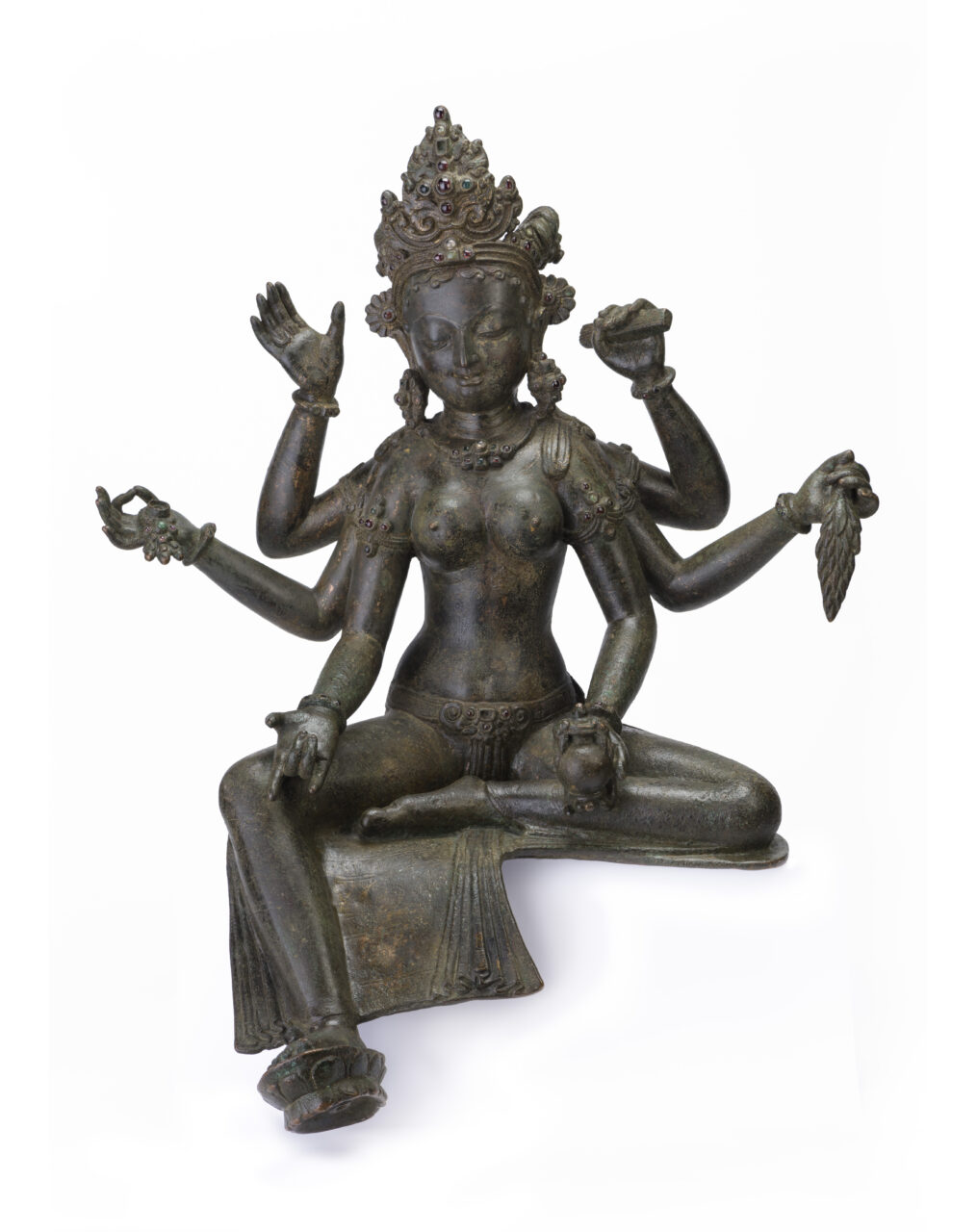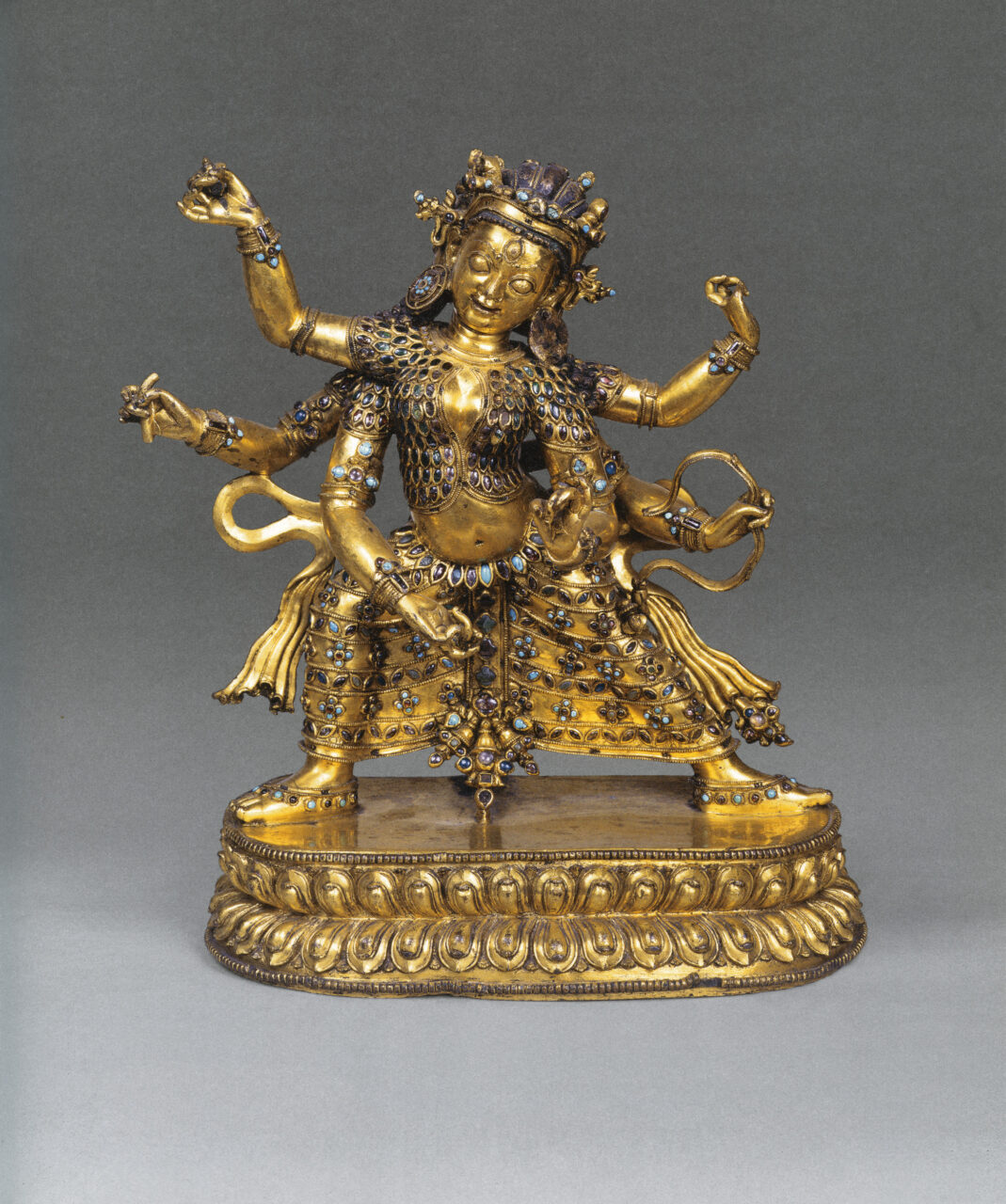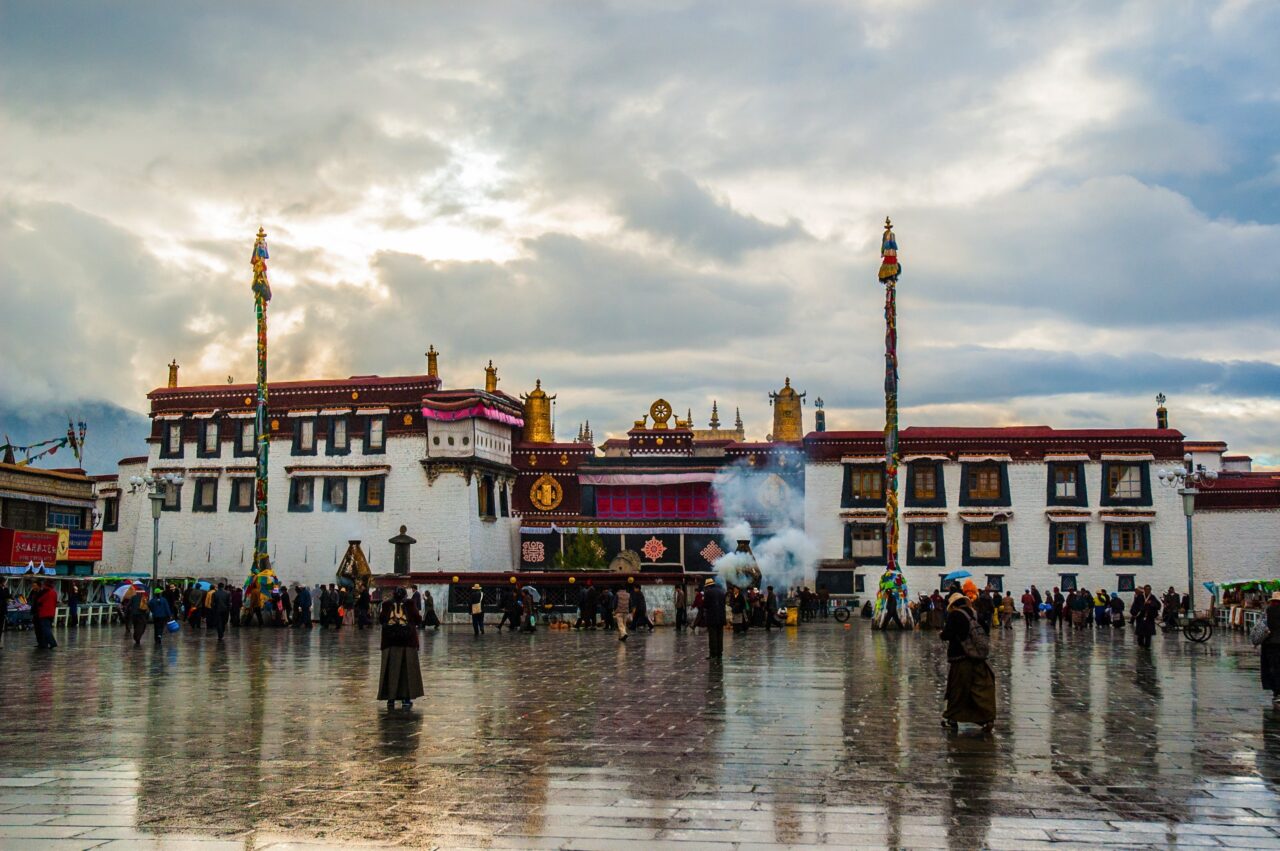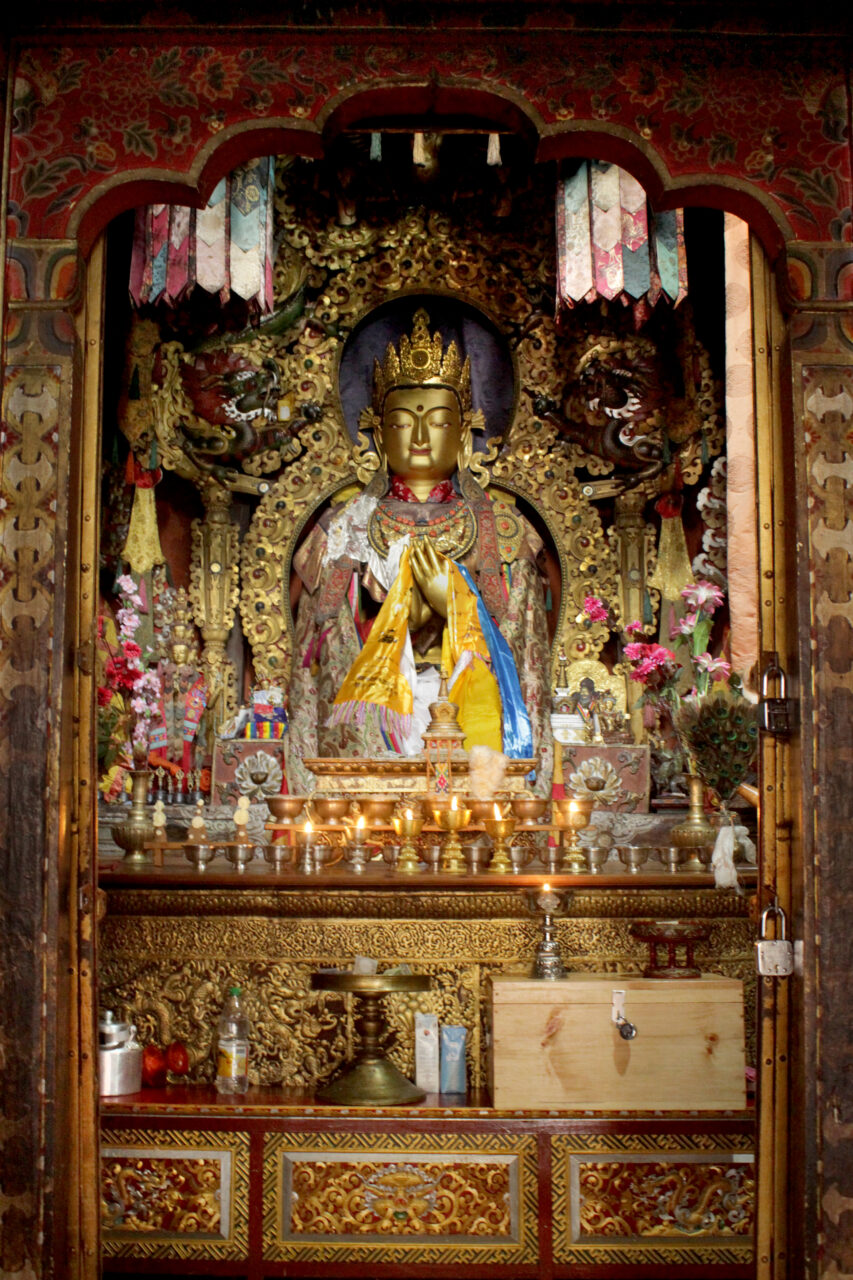The Copper-Colored Mountain (Zangdok Pelri) is said to be the dwelling place or mandala-palace of the legendary Vajrayana master Padmasambhava. This mountain-palace is depicted in many thangkas and constructed as temples and portable shrines used by manipa itinerant storytellers.
Hinduism and Buddhism both hold that actions (Skt. karma) have inevitable results which may take a shorter or longer time to occur. Mental, verbal, and physical actions all have positive or negative consequences and are considered karma. Depending on conditions, karma can manifest results either in this or future lives. Karma directly relates to the idea of reincarnation, and positive karma can also create religious merit and lead to a better rebirth, while negative actions, or karma, result in worse experiences in the present and future lives. Buddhists strive to achieve enlightenment to escape this cycle of karmic action and consequence.
In Hinduism and Buddhism, mantras are short syllables or phrases that are thought to have power. Mantras may be chanted by devotees as part of daily practice, or pronounced during rituals to invoke the deity’s power. In tantric Hinduism and Vajrayana Buddhism, practitioners perform meditative deity-yoga by first visualizing “root” or “seed” syllables, and then generating the yidam deities out of these mantras during the process known as visualization.
Stupas are monuments that initially contained cremated remains of Buddha Shakyamuni or important monks, his disciples, and subsequently other material and symbolic relics associated with the Buddha’s body, teaching, and enlightened mind. As representations of the Buddha’s presence in the world, stupas with their contents—texts, relics, tsatsas—continue to be important objects of Buddhist worship in their diverse forms of domed structures, multistoried pagodas, and portable sculptures. The original form of stupas was an earthen dome-shaped mound containing the remains in reliquary vessels or urns deposited within the innermost core. The dome would often be successively enlarged and surrounded by a path for a walk around in a clockwise direction and veneration (circumambulation)
In Tibetan Buddhism, a tsatsa is a small sculpture created by pressing clay into a mold. Tsatsas can depict deities, stupas, auspicious signs, and more. Some tsatsas have medicinal plants, or the cremated ashes of loved ones mixed into the clay and taken to various sacred sites to generate merit for their better rebirth. In Newar context, a grain of rice is added. Tsatsas are created to generate religious merit and are often consecrated and then placed within stupas, or made by pilgrims and devotees and left at sacred sites. Tibetans have been creating tsatsas since around the eleventh century, and tsatsa making remains a common practice among lay devotees today.
Manipas, or manips, are wandering storytellers who performed at pilgrimage sites during religious festivals all over Himalayan regions. In Bhutan, a manipa (as they are known in Bhutan) is a lay priest who recites mantras and other Buddhist texts, and gives popular teachings using miniature portable shrines called Tashi Gomang (The Auspicious Many Doors), and narrative hanging scroll paintings (thangka) as working images to focus their presentations. Very few manipas are active today in Bhutan, but nuns in Tibetan communities of Nepal revived and continue the manipa tradition, which has declined in other areas.




